Passion doesn’t always come easily. Discover your inner drive and find your true purpose in life.
From learning how to be your best self to navigating life’s everyday challenges.
Discover peace within today’s chaos. Take a moment to notice what’s happening now.
Gain inspiration from the lives of celebrities. Explore their stories for motivation and insight into achieving your dreams.
Where ordinary people become extraordinary, inspiring us all to make a difference.
Take a break with the most inspirational movies, TV shows, and books we have come across.
From being a better partner to interacting with a coworker, learn how to deepen your connections.
Take a look at the latest diet and exercise trends coming out. So while you're working hard, you're also working smart.
Sleep may be the most powerful tool in our well-being arsenal. So why is it so difficult?
Challenges can stem from distractions, lack of focus, or unclear goals. These strategies can help overcome daily obstacles.
Unlocking your creativity can help every aspect of your life, from innovation to problem-solving to personal growth.
How do you view wealth? Learn new insights, tools and strategies for a better relationship with your money.
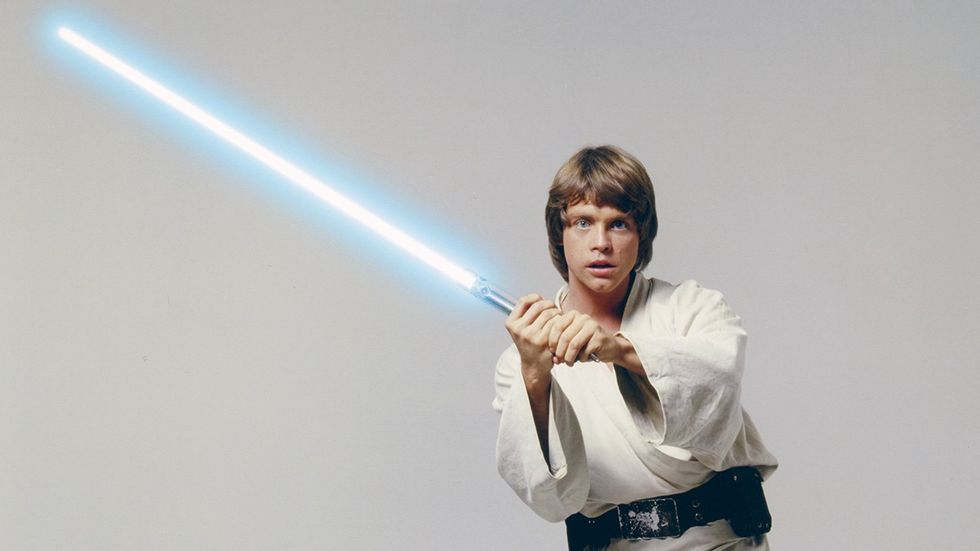

Hero's Journey: A Guide to Becoming The Hero Of Your Story
What will your story be.
Be the hero of your story . It’s common advice from motivational speakers and life coaches, a call to arms to take centre stage and tackle life’s challenges head-on, to emerge victorious in the face of adversity, to transform through hardship.
As humans, hardwired to view the world and share experiences through the medium of stories, myths often act as powerful motivators of change. From ancient cave paintings to the Star Wars and its Death Star to Harry Potter and his battle against evil, the hero’s journey structure is a familiar one. It’s also one you need to know if you want to know how to write a book , but I digress.
This article will outline the stages, and psychological meaning, of the 12 steps of Joseph Campbell’s hero’s journey. So, are you ready to become the hero of your story? Then let the adventure begin...
Who is Joseph Campbell?
Joseph Campbell was an American professor of literature at Sarah Lawrence College, and an expert of mythology that once spent five years in a rented shack, buried in books for nine hours each day. His greatest contribution is the hero’s journey, outlined in his book The Hero with A Thousand Faces . Campbell was able to synthesise huge volumes of heroic stories, distilling a common structure amongst them.
Near the end of his life, Campbell was interviewed by Bill Moyers in a documentary series exploring his work, The Power of Myth .
Throughout their discussion, Campbell highlighted the importance of myth not just in stories, but in our lives, as symbols to inspire us to flourish and grow to our full potential.
How is the hero’s journey connected to self development?
You might be wondering what storytelling has to do with self-development. Before we dive into the hero’s journey (whether that is a male or a female hero’s journey), context will be useful. Joseph Cambell was heavily inspired by the work of Carl Jung, the groundbreaking psychologist who throughout his life worked on theories such as the shadow, collective unconscious, archetypes, and synchronicity.
Jung’s greatest insight was that the unconscious is a vast, vibrant landscape, yet out sight from the ordinary conscious experience. Jung didn’t only theorize about the unconscious; he provided a huge body of work explaining the language of the unconscious, and the way in which it communicates with the conscious mind.
The nature of the unconscious
Due to its vast nature, the unconscious doesn’t operate like the conscious mind, which is based in language, logic, and rationality. The unconscious instead operates in the imaginal realm — using symbols and meaning that take time to be deciphered and understood consciously. Such symbols surface in dreams, visualizations, daydreams, or fantasies.
For Jung, the creative process is one in which contents of the unconscious mind are brought to light. Enter storytelling and character development — a process of myth-making that somehow captures the truth of deep psychological processes.
Campbell saw the power of myth in igniting the unconscious will to grow and live a meaningful life. With that in mind, his structure offers a tool of transformation and a way to inspire the unconscious to work towards your own hero’s journey.
The 12 steps of the hero’s journey
The hero’s journey ends where it begins, back at the beginning after a quest of epic proportions. The 12 steps are separated into three acts:
- departure (1-5)
- initiation (5-10)
- return (10-1)
The hero journeys through the 12 steps in a clockwise fashion. As Campbell explains:
“The usual hero adventure begins with someone from whom something has been taken, or who feels there is something lacking in the normal experience available or permitted to the members of society. The person then takes off on a series of adventures beyond the ordinary, either to recover what has been lost or to discover some life-giving elixir. It’s usually a cycle, a coming and a returning.”
Let’s take a closer look at each of the steps below. Plus, under each is a psychological symbol that describes how the hero’s journey unfolds, and how when the hero ventures forth, he undergoes an inner process of awakening and transformation.
1. The ordinary world
The calm before the storm. The hero is living a standard, mundane life, going about their business unaware of the impending call to adventure. At this point, the hero is portrayed as very, very human. There could be glimpses of their potential, but these circumstances restrict the hero from fulfilling them. Although well within the hero’s comfort zone, at this stage, it’s clear something significant is lacking from their life.
Psychological symbol
This is represented as a stage of ignorance, pre-awakening. Living life by the status quo, on other people’s terms, or simply without questioning if this is what you want. At this point life is lived, but not deeply satisfying.
2. Call to adventure
Next is a disruption, a significant event that threatens the ways things were. This is a challenge that the hero knows deep down will lead to transformation and change, and that the days of normality, “the way things are,” are numbered. The hero confronts the question of being asked to step into their deeper potential, to awaken the power within, and to enter a new, special world.
Many of us embark on inner-journeys following hardship in life — the death of a loved one, the loss of a job, physical or mental illness. This stage occurs when it becomes apparent that, to move through suffering, one has to look within, to adventure into the soul.
3. Refusal of the call
No compelling story would be complete without friction. The hero often resists this call to adventure, as fear and self-doubt surface at full force, and the purpose of this new life direction is questioned. Can the reluctant hero journey forth? Do they have the courage?
The only way to grow and live a deeply fulfilling life is to face the discomfort of suffering. Campbell himself once said: “ The cave you fear to enter holds the treasure you seek .” At this stage, fears, and anxieties about delving deep into the psyche arise. The temptation is to remain blissfully ignorant, to avoid discomfort, and to stay in your familiar world.
4. Meeting a mentor
As the hero faces a crisis of confidence, a wise mentor figure appears.
This character offers inspiration, guidance, or understanding that encourages the hero to have the self-belief to start this new adventure. In many stories, a mentor is someone else who has embarked on the hero’s journey, or someone who attempted, and failed. This person reflects the importance of this mission, reminding the hero their calling far exceeds their fear.
When the journey of exploration has to begin, people or situations enter your life at just the right time, guiding you in the right direction. This could be a close friend, a peer, a professional, such as a coach or therapist, or even a fictional character in a film or book. In most cases, these are chance encounters that contain a sense of knowing before the hero leaves on his or her adventure.
5. Crossing the threshold
This is a pivotal moment in the hero’s journey, as the initiation begins. This occurs when the hero fully commits to their quest, whether physical, emotional, or spiritual. This is the point of no return, where the reluctant hero embarks on their adventure, and has accepted that the way things were must change. The hero enters a new zone, one in which the call to adventure must be accepted. The hero’s resolve is hardened, and they understand they have a responsibility to confront what is ahead of them.
Whatever your life was before the call to action, this is a crossroads which is accepted, knowing your life may never be the same. This is a point of empowerment, where you realize that journeying within will lead you to greater self-understanding, even if those insights will dramatically change your life direction.
6. Test, allies, enemies
Now the hero has ventured outside of their comfort zone, the true test begins. This is a stage of acclimatizing to unknown lands. Unknown forces work against them, as they form bonds with allies who join them along the way, or face formidable enemies or encounters that have to be conquered. Throughout this testing time, the hero will be shaped and molded through adversity, finding deeper meaning in their life and mission.
Once the journey of self-discovery is underway, the initial burst of inspiration might be tested by the difficulty of the task. You might meet people who are able to offer advice or guide you, or those who reflect areas of yourself you have to work on.
Often, these are inner experiences, in the forms of memories, emotions, or outward tests, such as difficult circumstances that challenge your resolve and commitment to your new life direction.
7. Approach to the inmost cave
Having already crossed the threshold into the unknown and the uncertain, having faced obstacles and enemies, and having begun to utilize their qualities along the way, the next stage is another threshold.
This is the beating heart of the hero’s challenge, where again self-doubt and fear can arise, as another threshold has to be crossed. This is often a period of respite, giving the hero time to pause and reflect. Will the hero make the leap?
The hero’s journey has ups and downs. There may be quick wins in the beginning — your new life direction may go well, or inner-work may lead you to a new place of calm or confidence. But then, out of nowhere, comes an even bigger challenge, surfacing as a question mark to the person you’ve become. Life often has a way of presenting the right challenges at the right time…
This is the life-or-death moment. This can be a meeting with an ultimate enemy or facing the hero’s deepest fear. There is an awareness that if the hero fails, their new world, or their life, could be destroyed.
Everything the hero has fought for up to this point, all the lessons learned along the journey, all the hidden potentials actualized, will have to be utilized to survive this supreme ordeal, for the hero to be victorious. Either way, the hero will undergo a form of death, and leave the ordeal forever changed.
There are inner challenges that have to be confronted on the journey of self-discovery. This might be in the form of trauma that has to be confronted and healed, people with whom you have to have difficult conversations, or fears you have to face, actions that in the past you never thought you’d be capable of. But, with the skills you’ve learned along the way, this time you’ll be ready. But it won’t be easy.
9. Reward (seizing the sword)
Through great adversity comes triumph. Having confronted their greatest fear, and survived annihilation, the hero learns a valuable lesson, and is now fully transformed and reborn — with a prize as a reward.
This object is often symbolized as a treasure, a token, secret knowledge, or reconciliation, such as the return of an old friend or lover. This prize can assist in the return to the ordinary world — but there are still a few steps to come.
When confronting deep inner fears or challenges, you are rewarded with deep insights or breakthroughs. That might be in the form of achieving a significant goal or inwardly having a sense of peace or reconciliation with your past, or moments that have previously felt unresolved. As a spiritual process, this may also be the realization that behind suffering and pain lies freedom or inner peace.
10. The road back
Having traveled into distant, foreign lands and slain the dragon, now it’s time for the hero to make their return journey. This stage mirrors the original call to adventure and represents another threshold.
The hero may be understanding their new responsibility and the consequences of their actions, and require a catalyst to make the journey back to the ordinary world with their prize.
The hard work has been done, the ultimate fear confronted, new knowledge found. Now, what’s the next step? For many, the initial stages of growth come with a period of renunciation or are symbolized by an outward journey away from home, or away from familiarity.
Then comes the stage of returning to familiarity, or the things left behind — be it family, friends, locations, or even behaviors that were once loved and sacrificed during the journey.
11. Resurrection
When it appears the hero is out of the woods, there comes a final confrontation — an encounter with death itself. Transformed inwardly and with a personal victory complete, the hero faces a battle that transcends their individual quest, with its consequences far-reaching, for entire communities or even humanity itself.
This purification solidifies the hero’s rebirth, as their new identity fully emerges just in time to return to the ordinary world.
In Maslow’s hierarchy of needs, self-actualization is secondary to self-transcendence. In other words, once inner battles have been faced, and the alchemy of psychological transformation is underway, the next stage is to apply the newfound insights and knowledge to a bigger cause — supporting others, or standing up a mission that will benefit the wider world.
12. Return with the elixir
Following the final battle, the hero finally returns home. By now, personal transformation is complete, they’re returning home a different person. Having faced indescribable hardship, the hero returns with added wisdom and maturity. The elixir is the treasure they’ve returned with, ready to share with the ordinary world. This could be a sense of hope, freedom, or even a new perspective to assist those originally left behind.
The hero has a new level of self-awareness, seeing the ordinary world through fresh eyes. They’ve left internal conflict behind. There’s an understanding that things will never be the same, but that the hero’s journey was part of their destiny.
Then comes the ultimate prize: a final reconciliation, acceptance from the community, celebration, redemption. Whatever the prize, there are three elements: change , success , and proof of the journey .
Following a transformative psychic process, there’s an understanding of what is within your control. The “ordinary world” may have many elements that remain the same, but this is accompanied by a realization that when you change, so does your reality. Previously modes of thinking may be replaced, as bridges are built with your past, giving opportunity for a renewed approach to life.
What can we learn from the hero's journey?
At the time of writing this article, I’m in the UK visiting my family for the first time in 18 months. As I walked down paths I’d walked throughout my childhood, I was struck by how much I’ve changed over the years. A passage from T.S Eliot’s poem Little Gidding came to mind:
“We shall not cease from exploration. And the end of all our exploring. Will be to arrive where we started. And know the place for the first time.”
I reflected on the notion of coming full circle — to begin a journey, outwardly or inwardly, before finding yourself back at the beginning, transformed. In spiritual traditions, the circle is a powerful symbol of timelessness, death and rebirth, totality, and wholeness. Aptly, the 12 steps of the hero’s journey are depicted as a circle. It’s not a coincidence.
What can we learn from the hero’s journey? In a way, it is similar to the writer’s journey. Above all else, it’s a reminder that we each within us have a purpose, a quest and a mission in this life that can and will invoke our truest potential. The path isn’t easy — there are many, many challenges along the way. But at the right time, people and situations will come to our aid.
If you’re able to confront the mission head-on and take bold steps along the way — just like all the heroes of fiction before you, from Shakespeare’s characters to Luke Skywalker and Rey from the universe brought to us by George Lucas — then you will be transformed, and then you can return to where you started, reborn, ready to share your gifts and your lessons with the world.
Hot Stories
Grieving starbucks barista serves a stranger - minutes later, she returns with a note, mom justifies her "no contact" relationship with her son — why she is being called a gaslighter, plumber refuses to charge 91-year-old woman for his services - then, he hands her a receipt, man spending his birthday all alone calls 911 - he didn't think cops would show up, two teens got stranded on their way to prom - later, they pull up in the back of a police car, couple marries 10 years after interracial marriage becomes legal — now they’re goals, jennifer garner's mom made only $1 a day - but she was determined to change her family’s fate.
Jennifer Garner's Mom Once Made a Dollar a Day
Growing up, Jennifer Garner’s mom didn’t have much. Patricia Ann Garner’s family lived on an old farm and she earned only a dollar a day babysitting. Despite her mom’s financial struggles , Garner says the woman was determined to change her fate with hard work and resilience.
A Rough Start
Jennifer Garner and Patricia Ann Garner
Instagram/@jennifer.garner
Jennifer Garner was born in Houston, Texas, in 1972 and grew up in West Virginia. She was the middle of three daughters , and her family was a happy one. She recalls taking violin in school (and being so bad at it that her mom offered to pay her to never play again), studying ballet for nine years, and majoring in chemistry at Denison University before switching majors.
Little did she know that her decision to pursue the arts would one day come full circle for her mother.
Patricia grew up in Oklahoma on a 20-acre farm that her parents bought. The house was a two-room house with no electricity, running water, or indoor plumbing, and in 1936, it sold for a cool $700.
“As a farm girl growing up on a tiny farm in Locust Grove, OK, my mother earned $1.00 a day for babysitting her neighbor’s five children,” Garner shared on Instagram . “My mom’s family was poor— I’m sure she cherished that money — but it was the neighbor’s old LIFE magazines that really shaped Mom’s future.”
Forging a New Path
Eventually, Patricia knew she had to leave the farm to pursue a better life. So, as the farm changed hands between her uncles following her father’s death, she set out into the world. She met her husband, a chemical engineer named William John Garner, and became a teacher . They had three kids together and showered them with love.
After Garner became famous through roles like Alias and 13 Going On 30 , she began telling the story of how her mother came from humble roots and put together a beautiful life for her and her sisters. She also realized a lifelong goal, of traveling to all 50 states and visiting all seven continents.
“I think my mom was so poor, it's just unbelievable that she managed to leave,” Garner said in a 2020 interview . “When I moved to New York after college, my mom said, 'Jennifer, no matter what you do, it will never be as big of a deal as it was for me to leave that farm.'"
Embracing Their Roots
See on Instagram
Despite her rough upbringing, Patricia never wanted to keep it quiet. In that same 2020 interview, Garner explained how she and her mom had discussed Garner's openness about it. According to Garner, her mom is good with it.
“She said, 'I'm never ashamed of growing up poor,'" Garner recalled. "Rather, I am amazed by the grace and dignity that my parents had throughout my childhood.'”
Garner is embracing those roots, too. In 2017, she purchased the farm where her mother grew up from her uncle. They agreed that her aunt and uncle would live there and maintain the property, which now boasts an additional 35 acres.
The farm produces pumpkins, blueberries, field peas, and rye to help the soil, reports The Oklahoman . Some of that produce is used for Garner’s baby food company, Once Upon a Farm.
“I definitely am another generation removed from what my mom gave us and certainly from what she had,” Garner, now a mother of three, said in 2015. “But I hope that my mothering has been so infused by Pat Garner that there's a germ of it in there.”
An Eye on the Future
This inspiring story is even more so because we know how it turned out for Garner and her family. But Patricia’s experience also teaches an important lesson: never give up. Sometimes, life deals you what feels like an impossible hand, and it can be hard to push through.
However, that doesn’t mean you can’t have a brighter future or that things won’t improve. Sometimes, a dream and the will to make it happen are all you need. Rather than giving up, look for opportunities, take calculated risks, and know when it’s time to move on.
After all, if a woman who once made a dollar a day could do it, so can you.
USPS Worker Goes 400 Extra Miles To Make a Special Delivery - 8 Decades in the Making
Man continues sending ex-wife anniversary cards - 22 years following divorce, not everyone has a great relationship with their mom — and that's ok, teen is incarcerated for helping drug gang - years later, she passes the bar exam on first try, lamar odom regrets choosing khloe kardashian over taraji p henson, the kardashian redemption - an uncensored documentary, how did betrayal connect jennifer aniston and selena gomez, how tiffany haddish finally found the love she deserved, subscribe to our newsletter, the great takedown of nickelodeon’s dan schneider - how even small voices have the power for impact, chris gardner beyond the pursuit of happyness: the work begins, 100 powerful motivational quotes to help you rise above, wim hof: the iceman’s heroic journey to warming the hearts of millions, mom leaves kids after husband's death - so her 10-year-old son takes charge.
Little Boy Sells Rolls on the Streets To Support His Family
While other kids his age are riding bikes, playing video games, and hanging out with friends, Jaspreet Singh is bearing the weight of the world on his small shoulders.
At just 10 years old, Jaspreet's life literally changed overnight.
And now? The little boy is inspiring millions with his courage and strength and teaching us all a valuable lesson in the power of perseverance and resilience.
Video of Young Delhi Boy Preparing Rolls Goes Viral
Tragically, Jaspreet lost his father earlier this year to tuberculosis. After his death, Jaspreet's mother went home to Punjab, leaving him and his older sister, 14, in the care of their aunt.
She never returned.
Desperate to support himself and his sister, Jaspreet stepped into his father's shoes, taking on the role of the family breadwinner, despite only being 10 years old.
By day, he's a student. By night, he works his father's food cart on the streets of Delhi.
While working one evening, food vlogger Sarabjeet Singh (aka Mr. Singh Foodhunter) happened to come across his stall. Intrigued by the little boy, Singh stopped to chat. He recorded their interaction and shared it on Instagram .
The heartwrenching video has since gone insanely viral, racking up 10 million views and over 30,000 comments. It's also made its way over to X (formerly Twitter) .
As Jaspreet busily makes a chicken egg roll, the vlogger asks who taught him how to cook. He tells him it was his papa. When he asks him where his father is, Jaspreet, without letting his smile slip, reveals that his father died. He also tells him about his mother and his sister.
When Singh asks him what keeps him going, Jaspreet responds:
"I am the son of Guru Gobind Singh ji. I will fight as long as I have the strength." Jaspreet Singh
But now, thanks to the power of social media, he no longer has to fight alone.
Love and Support Comes Pouring In
Since the video went viral, business is booming.
Additionally, numerous individuals and organizations have come forward to offer assistance to Jaspreet and his sister.
Some have offered to "jazz up his cart" while others have pledged to provide financial aid and educational support to ensure Jaspreet's future remains bright despite the challenges he faces today.
Including billionaire business tycoon, Anand Mahindra, who put a call out on X to find Jaspreet and offered to fund his education.
"Courage, thy name is Jaspreet. But his education shouldn’t suffer. I believe he’s in Tilak Nagar, Delhi. If anyone has access to his contact number please do share it. The Mahindra Foundation team will explore how we can support his education,” he wrote in his post on X .
According to Jaspreet's 19-year-old cousin Gurmukh, The Mahindra Foundation has already reached out to the family.
Bollywood actor Arjun Kapoor also stepped forward and pledged his help in an Instagram story, writing:
"With a smile on his face, he’s facing life ahead and all that will come with it. I salute this 10-year-old for having the courage to stand up on his own two feet and take over his father’s work within 10 days of him passing away."
As for how Jaspreet feels about all the attention? He's taking it like the champ he is.
"I am happy. I am still trying to figure out what is happening," Jaspreet told PTI . "There is love and support pouring in from every corner for me. Everyone in my school, my teachers and friends, also want to come to my cart now. I hope it stays like this."
A True Warrior
Jaspreet's story serves as a sobering reminder of the harsh realities faced by many families in Delhi and beyond. Economic instability, coupled with unforeseen tragedies, often pushes children into adulthood long before they are ready.
However, it also underscores the power of human resilience and our ability to overcome overwhelming obstacles at any age. Despite only being 10 Jaspreet has shown incredible fortitude in the face of adversity. He is a real-life superhero.
As one commenter so aptly put it, “Bro's dad raised a true warrior.” Indeed.
Copyright © 2024 Goalcast
Get stories worth sharing delivered to your inbox
- Story Writing Guides
12 Hero’s Journey Stages Explained (+ Free Templates)
From zero to hero, the hero’s journey is a popular character development arc used in many stories. In today’s post, we will explain the 12 hero’s journey stages, along with the simple example of Cinderella.
The Hero’s Journey was originally formulated by American writer Joseph Campbell to describe the typical character arc of many classic stories, particularly in the context of mythology and folklore. The original hero’s journey contained 17 steps. Although the hero’s journey has been adapted since then for use in modern fiction, the concept is not limited to literature. It can be applied to any story, video game, film or even music that features an archetypal hero who undergoes a transformation. Common examples of the hero’s journey in popular works include Star Wars, Lord of the Rings, The Hunger Games and Harry Potter and the Philosopher’s Stone.
- What is the hero's journey?
Stage 1: The Ordinary World
Stage 2: call of adventure, stage 3: refusal of the call, stage 4: meeting the mentor, stage 5: crossing the threshold, stage 6: tests, allies, enemies, stage 7: the approach, stage 8: the ordeal, stage 9: reward, stage 10: the road back, stage 11: resurrection, stage 12: return with the elixir, cinderella example, campbell’s 17-step journey, leeming’s 8-step journey, cousineau’s 8-step journey.
- Free Hero's Journey Templates
What is the hero’s journey?
The hero’s journey, also known as the monomyth, is a character arc used in many stories. The idea behind it is that heroes undergo a journey that leads them to find their true selves. This is often represented in a series of stages. There are typically 12 stages to the hero’s journey. Each stage represents a change in the hero’s mindset or attitude, which is triggered by an external or internal event. These events cause the hero to overcome a challenge, reach a threshold, and then return to a normal life.
The hero’s journey is a powerful tool for understanding your characters. It can help you decide who they are, what they want, where they came from, and how they will change over time. It can be used to
- Understand the challenges your characters will face
- Understand how your characters react to those challenges
- Help develop your characters’ traits and relationships

In this post, we will explain each stage of the hero’s journey, using the example of Cinderella.
You might also be interested in our post on the story mountain or this guide on how to outline a book .
12 Hero’s Journey Stages
The archetypal hero’s journey contains 12 stages and was created by Christopher Vogler. These steps take your main character through an epic struggle that leads to their ultimate triumph or demise. While these steps may seem formulaic at first glance, they actually form a very flexible structure. The hero’s journey is about transformation, not perfection.
Your hero starts out in the ordinary world. He or she is just like every other person in their environment, doing things that are normal for them and experiencing the same struggles and challenges as everyone else. In the ordinary world, the hero feels stuck and confused, so he or she goes on a quest to find a way out of this predicament.
Example: Cinderella’s father passes away and she is now stuck doing chores and taking abuse from her stepsisters and stepmother.
The hero gets his or her first taste of adventure when the call comes. This could be in the form of an encounter with a stranger or someone they know who encourages them to take a leap of faith. This encounter is typically an accident, a series of coincidences that put the hero in the right place at the right time.
Example: An invite arrives inviting the family to a royal ball where the Prince will choose a wife.
Some people will refuse to leave their safe surroundings and live by their own rules. The hero has to overcome the negative influences in order to hear the call again. They also have to deal with any personal doubts that arise from thinking too much about the potential dangers involved in the quest. It is common for the hero to deny their own abilities in this stage and to lack confidence in themselves.
Example: Cinderella accepts the call by making her own dress for the ball. However, her stepmother refuses the call for her by not letting her go to the ball. And her step-sisters ruin her dress, so she can not go.
After hearing the call, the hero begins a relationship with a mentor who helps them learn about themselves and the world. In some cases, the mentor may be someone the hero already knows. The mentor is usually someone who is well-versed in the knowledge that the hero needs to acquire, but who does not judge the hero for their lack of experience.
Example: Cinderella meets her fairy godmother who equips her with everything she needs for the ball, including a dress and a carriage.
The hero leaves their old life behind and enters the unfamiliar new world. The crossing of the threshold symbolises leaving their old self behind and becoming a new person. Sometimes this can include learning a new skill or changing their physical appearance. It can also include a time of wandering, which is an essential part of the hero’s journey.
Example: Cinderella hops into the carriage and heads off to the ball. She has transformed from a servant into an elegant young lady.
As the hero goes on this journey, they will meet both allies (people who help the hero) and enemies (people who try to stop the hero). There will also be tests, where the hero is tempted to quit, turn back, or become discouraged. The hero must be persistent and resilient to overcome challenges.
Example: At the ball, Cinderella meets the prince, and even see’s her stepmother and stepsister. She dances with Prince all night long making her step-sisters extremely jealous.
The hero now reaches the destination of their journey, in some cases, this is a literal location, such as a cave or castle. It could also be metaphorical, such as the hero having an internal conflict or having to make a difficult decision. In either case, the hero has to confront their deepest fears in this stage with bravery. In some ways, this stage can mark the end of the hero’s journey because the hero must now face their darkest fears and bring them under control. If they do not do this, the hero could be defeated in the final battle and will fail the story.
Example: Cinderella is having a great time at the ball and nearly forgets about the midnight rule. As she runs away in a hurry, her glass slipper falls off outside the palace.
The hero has made it to the final challenge of their journey and now must face all odds and defeat their greatest adversary. Consider this the climax of the story. This could be in the form of a physical battle, a moral dilemma or even an emotional challenge. The hero will look to their allies or mentor for further support and guidance in this ordeal. Whatever happens in this stage could change the rest of the story, either for good or bad.
Example: Prince Charming looks all over the kingdom for the mysterious girl he met at the ball. He finally visits Cinderella’s house and tries the slippers on the step-sisters. The prince is about to leave and then he sees Cinderella in the corner cleaning.
When the hero has defeated the most powerful and dangerous of adversaries, they will receive their reward. This reward could be an object, a new relationship or even a new piece of knowledge. The reward, which typically comes as a result of the hero’s perseverance and hard work, signifies the end of their journey. Given that the hero has accomplished their goal and served their purpose, it is a time of great success and accomplishment.
Example: The prince tries the glass slipper on Cinderella. The glass slipper fits Cinderella perfectly, and they fall in love.
The journey is now complete, and the hero is now heading back home. As the hero considers their journey and reflects on the lessons they learned along the way, the road back is sometimes marked by a sense of nostalgia or even regret. As they must find their way back to the normal world and reintegrate into their former life, the hero may encounter additional difficulties or tests along the way. It is common for the hero to run into previous adversaries or challenges they believed they had overcome.
Example: Cinderella and Prince Charming head back to the Prince’s castle to get married.
The hero has one final battle to face. At this stage, the hero might have to fight to the death against a much more powerful foe. The hero might even be confronted with their own mortality or their greatest fear. This is usually when the hero’s true personality emerges. This stage is normally symbolised by the hero rising from the dark place and fighting back. This dark place could again be a physical location, such as the underground or a dark cave. It might even be a dark, mental state, such as depression. As the hero rises again, they might change physically or even experience an emotional transformation.
Example: Cinderella is reborn as a princess. She once again feels the love and happiness that she felt when she was a little girl living with her father.
At the end of the story, the hero returns to the ordinary world and shares the knowledge gained in their journey with their fellow man. This can be done by imparting some form of wisdom, an object of great value or by bringing about a social revolution. In all cases, the hero returns changed and often wiser.
Example: Cinderella and Prince Charming live happily ever after. She uses her new role to punish her stepmother and stepsisters and to revitalise the kingdom.
We have used the example of Cinderella in Vogler’s hero’s journey model below:

Below we have briefly explained the other variations of the hero’s journey arc.
The very first hero’s journey arc was created by Joseph Campbell in 1949. It contained the following 17 steps:
- The Call to Adventure: The hero receives a call or a reason to go on a journey.
- Refusal of the Call: The hero does not accept the quest. They worry about their own abilities or fear the journey itself.
- Supernatural Aid: Someone (the mentor) comes to help the hero and they have supernatural powers, which are usually magical.
- The Crossing of the First Threshold: A symbolic boundary is crossed by the hero, often after a test.
- Belly of the Whale: The point where the hero has the most difficulty making it through.
- The Road of Trials: In this step, the hero will be tempted and tested by the outside world, with a number of negative experiences.
- The Meeting with the Goddess: The hero meets someone who can give them the knowledge, power or even items for the journey ahead.
- Woman as the Temptress: The hero is tempted to go back home or return to their old ways.
- Atonement with the Father: The hero has to make amends for any wrongdoings they may have done in the past. They need to confront whatever holds them back.
- Apotheosis: The hero gains some powerful knowledge or grows to a higher level.
- The Ultimate Boon: The ultimate boon is the reward for completing all the trials of the quest. The hero achieves their ultimate goal and feels powerful.
- Refusal of the Return: After collecting their reward, the hero refuses to return to normal life. They want to continue living like gods.
- The Magic Flight: The hero escapes with the reward in hand.
- Rescue from Without: The hero has been hurt and needs help from their allies or guides.
- The Crossing of the Return Threshold: The hero must come back and learn to integrate with the ordinary world once again.
- Master of the Two Worlds: The hero shares their wisdom or gifts with the ordinary world. Learning to live in both worlds.
- Freedom to Live: The hero accepts the new version of themselves and lives happily without fear.
David Adams Leeming later adapted the hero’s journey based on his research of legendary heroes found in mythology. He noted the following steps as a pattern that all heroes in stories follow:
- Miraculous conception and birth: This is the first trauma that the hero has to deal with. The Hero is often an orphan or abandoned child and therefore faces many hardships early on in life.
- Initiation of the hero-child: The child faces their first major challenge. At this point, the challenge is normally won with assistance from someone else.
- Withdrawal from family or community: The hero runs away and is tempted by negative forces.
- Trial and quest: A quest finds the hero giving them an opportunity to prove themselves.
- Death: The hero fails and is left near death or actually does die.
- Descent into the underworld: The hero rises again from death or their near-death experience.
- Resurrection and rebirth: The hero learns from the errors of their way and is reborn into a better, wiser being.
- Ascension, apotheosis, and atonement: The hero gains some powerful knowledge or grows to a higher level (sometimes a god-like level).
In 1990, Phil Cousineau further adapted the hero’s journey by simplifying the steps from Campbell’s model and rearranging them slightly to suit his own findings of heroes in literature. Again Cousineau’s hero’s journey included 8 steps:
- The call to adventure: The hero must have a reason to go on an adventure.
- The road of trials: The hero undergoes a number of tests that help them to transform.
- The vision quest: Through the quest, the hero learns the errors of their ways and has a realisation of something.
- The meeting with the goddess: To help the hero someone helps them by giving them some knowledge, power or even items for the journey ahead.
- The boon: This is the reward for completing the journey.
- The magic flight: The hero must escape, as the reward is attached to something terrible.
- The return threshold: The hero must learn to live back in the ordinary world.
- The master of two worlds: The hero shares their knowledge with the ordinary world and learns to live in both worlds.
As you can see, every version of the hero’s journey is about the main character showing great levels of transformation. Their journey may start and end at the same location, but they have personally evolved as a character in your story. Once a weakling, they now possess the knowledge and skill set to protect their world if needed.
Free Hero’s Journey Templates
Use the free Hero’s journey templates below to practice the skills you learned in this guide! You can either draw or write notes in each of the scene boxes. Once the template is complete, you will have a better idea of how your main character or the hero of your story develops over time:
The storyboard template below is a great way to develop your main character and organise your story:

Did you find this guide on the hero’s journey stages useful? Let us know in the comments below.

Marty the wizard is the master of Imagine Forest. When he's not reading a ton of books or writing some of his own tales, he loves to be surrounded by the magical creatures that live in Imagine Forest. While living in his tree house he has devoted his time to helping children around the world with their writing skills and creativity.
Related Posts

Comments loading...
The Art of Narrative
Learn to write.

A Complete Guide to The Hero’s Journey (or The Monomyth)
Learn how to use the 12 steps of the Hero’s Journey to structure plot, develop characters, and write riveting stories that will keep readers engaged!
Before I start this post I would like to acknowledged the tragedy that occurred in my country this past month. George Floyd, an innocent man, was murdered by a police officer while three other officers witnessed that murder and remained silent.
To remain silent, in the face of injustice, violen ce, and murder is to be complicit . I acknowledge that as a white man I have benefited from a centuries old system of privilege and abuse against black people, women, American Indians, immigrants, and many, many more.
This systemic abuse is what lead to the murder of George Floyd, Breonna Taylor, Ahmaud Arbery, Sandra Bland, Eric Garner, Treyvon Martin, Philando Castile, Freddie Gray, Walter Scott, Tamir Rice and many more. Too many.
Whether I like it or not I’ve been complicit in this injustice. We can’t afford to be silent anymore. If you’re disturbed by the violence we’ve wit nessed over, and over again please vote this November, hold your local governments accountable, peacefully protest, and listen. Hopefully, together we can bring positive change. And, together, we can heal .
In this post, we’ll go over the stages of Joseph Campbell’s Hero’s Journey, also known as the Monomyth. We’ll talk about how to use it to structure your story. You’ll also find some guided questions for each section of the Hero’s Journey. These questions are designed to help guide your thinking during the writing process. Finally, we’ll go through an example of the Hero’s Journey from 1997’s Men In Black.
Down at the bottom, we’ll go over reasons you shouldn’t rely on the Monomyth. And we’ll talk about a few alternatives for you to consider if the Hero’s Journey isn’t right for your story.
But, before we do all that let’s answer the obvious question-
What is the Hero’s Journey?

The Hero’s Journey was first described by Joseph Campbell. Campbell was an American professor of literature at Sarah Lawrence College. He wrote about the Hero’s Journey in his book The Hero with a Thousand Faces . More than a guide, this book was a study on the fundamental structure of myths throughout history.
Through his study, Campbell identified seventeen stages that make up what he called the Monomyth or Hero’s Journey. We’ll go over these stages in the next section. Here’s how Campbell describes the Monomyth in his book:
“A hero ventures forth from the world of common day into a region of supernatural wonder: fabulous forces are there encountered and a decisive victory is won: the hero comes back from this mysterious adventure with the power to bestow boons on his fellow man.”
Something important to note is that the Monomyth was not conceived as a tool for writers to develop a plot. Rather, Campbell identified it as a narrative pattern that was common in mythology.
George Lucas used Campbell’s Monomyth to structure his original Star Wars film. Thanks to Star Wars ’ success, filmmakers have adopted the Hero’s Journey as a common plot structure in movies.
We see it in films like The Matrix , Spider-man , The Lion King , and many more. But, keep in mind, this is not the only way to structure a story. We’ll talk about some alternatives at the end of this post.
With that out of the way, let’s go over the twelve stages of the Hero’s Journey, or Monomyth. We’ll use the original Men In Black film as an example (because why not?). And, we’ll look at some questions to help guide your thinking, as a writer, at each stage.
Quick note – The original Hero’s Journey is seventeen stages. But, Christopher Vogler, an executive working for Disney, condensed Campbell’s work. Vogler’s version has twelve stages, and it’s the version we’re talking about today. Vogler wrote a guide to use the Monomyth and I’ll link to it at the bottom.)
The 12 Stages of The Hero’s Journey
The ordinary world .

This is where the hero’s story begins. We meet our hero in a down-to-earth, or humble setting. We establish the hero as an ordinary citizen in this world, not necessarily “special” in any way.
Think exposition .
We get to know our hero at this stage of the story. We learn about the hero’s life, struggles, inner or outer demons. This an opportunity for readers to identify with the hero. A good idea since the story will be told from the hero’s perspective.
Read more about perspective and POV here.
In Men In Black, we meet our hero, James, who will become Agent J, chasing someone down the streets of a large city. The story reveals some important details through the action of the plo t. Let’s go over these details and how they’re shown through action.
Agent J’s job: He’s a cop. We know this because he’s chasing a criminal. He waves a badge and yells, “NYPD! Stop!”
The setting: The line “NYPD!” tells us that J is a New York City cop. The chase sequence also culminates on the roof of the Guggenheim Museum. Another clue to the setting.
J’s Personality: J is a dedicated cop. We know this because of his relentless pursuit of the suspect he’s chasing. J is also brave. He jumps off a bridge onto a moving bus. He also chases a man after witnessing him climb vertically, several stories, up a wall. This is an inhuman feat that would have most people noping out of there. J continues his pursuit, though.
Guided Questions
- What is your story’s ordinary world setting?
- How is this ordinary world different from the special world that your hero will enter later in the story?
- What action in this story will reveal the setting?
- Describe your hero and their personality.
- What action in the story will reveal details about your hero?
The Call of Adventure

The Call of Adventure is an event in the story that forces the hero to take action. The hero will move out of their comfort zone, aka the ordinary world. Does this sound familiar? It should, because, in practice, The Call of Adventure is an Inciting Event.
Read more about Inciting Events here.
The Call of Adventure can take many forms. It can mean a literal call like one character asking another to go with them on a journey or to help solve a problem. It can also be an event in the story that forces the character to act.
The Call of Adventure can include things like the arrival of a new character, a violent act of nature, or a traumatizing event. The Call can also be a series of events like what we see in our example from Men In Black.
The first Call of Adventure comes from the alien that Agent J chases to the roof of the Guggenheim. Before leaping from the roof, the alien says to J, “Your world’s going to end.” This pique’s the hero’s interest and hints at future conflict.
The second Call of Adventure comes after Agent K shows up to question J about the alien. K wipes J’s memory after the interaction, but he gives J a card with an address and a time. At this point, J has no idea what’s happened. All he knows is that K has asked him to show up at a specific place the next morning.
The final and most important Call comes after K has revealed the truth to J while the two sit on a park bench together. Agent K tells J that aliens exist. K reveals that there is a secret organization that controls alien activity on Earth. And the Call- Agent K wants J to come to work for this organization.
- What event (or events) happen to incite your character to act?
- How are these events disruptive to your character’s life?
- What aspects of your story’s special world will be revealed and how? (think action)
- What other characters will you introduce as part of this special world?
Refusal of the Call

This is an important stage in the Monomyth. It communicates with the audience the risks that come with Call to Adventure. Every Hero’s Journey should include risks to the main characters and a conflict. This is the stage where your hero contemplates those risks. They will be tempted to remain in the safety of the ordinary world.
In Men in Black, the Refusal of the Call is subtle. It consists of a single scene. Agent K offers J membership to the Men In Black. With that comes a life of secret knowledge and adventure. But, J will sever all ties to his former life. No one anywhere will ever know that J existed. Agent K tells J that he has until sunrise to make his decision.
J does not immediately say, “I’m in,” or “When’s our first mission.” Instead, he sits on the park bench all night contemplating his decision. In this scene, the audience understands that this is not an easy choice for him. Again, this is an excellent use of action to demonstrate a plot point.
It’s also important to note that J only asks K one question before he makes his decision, “is it worth it?” K responds that it is, but only, “if you’re strong enough.” This line of dialogue becomes one of two dramatic questions in the movie. Is J strong enough to be a man in black?
- What will your character have to sacrifice to answer the call of adventure?
- What fears does your character have about leaving the ordinary world?
- What risks or dangers await them in the special world?
Meeting the Mentor

At this point in the story, the hero is seeking wisdom after initially refusing the call of adventure. The mentor fulfills this need for your hero.
The mentor is usually a character who has been to the special world and knows how to navigate it. Mentor’s provides your hero with tools and resources to aid them in their journey. It’s important to note that the mentor doesn’t always have to be a character. The mentor could be a guide, map, or sacred texts.
If you’ve seen Men In Black then you can guess who acts as J’s mentor. Agent K, who recruited J, steps into the mentor role once J accepts the call to adventure.
Agent K gives J a tour of the MIB headquarters. He introduces him to key characters and explains to him how the special world of the MIB works. Agent K also gives J his signature weapon, the Noisy Cricket.
- Who is your hero’s mentor?
- How will your character find and encounter with their mentor?
- What tools and resources will your mentor provide?
- Why/how does your mentor know the special world?
Crossing the Threshold

This is the point where your hero finally crosses over from the ordinary world into the special one. At this point, there is no turning back for your hero.
Your hero may not cross into the special world on their own. Or, they may need a dramatic event that forces them to act.
At this point, you’ll want to establish the dramatic question of your story. This is the question will your reader wants to answer by the end of your story. A dramatic question is what will keep your audience reading.
Once J decides to commit to the MIB Agent K starts the process of deleting J’s identity. The filmmakers do a great job communicating the drastic nature of J’s decision. This is done through, again, action and an effective voice-over. J’s social security number is deleted, and his fingerprints are burned off. He dons a nondescript black suit, sunglasses, and a sick-ass Hamilton watch .
This scene is immediately followed by a threatening message sent by aliens called the Arquillians. They tell the MIB they will destroy the Earth unless J and K can deliver a galaxy. The only problem is no one knows what the galaxy is. So, we get our story question. Can J and K find and deliver the MacGuffin before the Earth is destroyed?
Read more about MacGuffins here.
- What event will push your hero into the special world?
- Once they enter the special world, what keeps them from turning back?
- What is the dramatic question you will introduce?
- How will your hero’s life change once they’ve entered the special world?
Tests, Allies, Enemies

This is stage is exactly what it sounds like. Once they’ve entered the special world, your hero will be tested. They will learn the rules of this new world. Your hero’s mentor may have to further teach your hero.
The hero will also begin collecting allies. Characters whose goals align with those of your hero’s. People who will help your hero achieve their goal. These characters may even join your hero on their quest.
And this is also the point where your hero’s enemy will reveal themselves. Now, you’ve may have hinted at, or even introduced the villain in the earlier stages. But, this is where the audience discovers how much of a threat this villain is to your hero.
Read more about creating villains here.
J and K arrive at the city morgue to investigate the body of a slain member of Arquillian royalty. While there, J encounters the villain of the film. He is lured into a standoff with Edgar. Edgar isn’t Edgar. He’s a 10 foot tall, alien cockroach wearing an “Edgar suit.”
J doesn’t know that yet, though.
Edgar has also taken a hostage. He threatens the life of Dr. Laurel Weaver who has discovered the truth about aliens living on Earth. Dr. Weaver becomes an ally of J’s as he continues his search for the Arquillian’s galaxy.
J is faced with a new test as well. Just before he dies, the Arquillian alien tells J that the galaxy is on Orion’s Belt. J must discover the meaning behind this cryptic message if he hopes to save Earth.
- Who is the villain of your story, and what is their goal?
- Who are your hero’s allies?
- How will your hero meet them? And, How do everyone’s goals align?
- How will your hero be tested? Through battle? A puzzle? An emotional trauma?
Approach to the Inmost Cave

The inmost cave is the path towards the central conflict of your story. In this section, your hero is preparing for battle. They may be regrouping with allies, going over important information, or taking a needed rest. This is also a part of the story where you may want to inject some humor.
The approach is also a moment for your audience to regroup. This is an important aspect of pacing. A fast-paced story can be very exciting for the audience, but at some point, the writer needs to tap the breaks.
This approach section gives your audience time to process the plot and consider the stakes of your conflict. This is also a good time to introduce a ticking clock, and it’s perfect for character development.
In Men, In Black the Approach the Inmost Cave involves an interview with a character called Frank the Pug. Frank is a Pug breed of dog. He’s an alien in disguise.
Frank knows important details about the conflict between the Arquillians and Edgar. This is one of the funnier scenes in an overall funny film.
Read more about alliteration here… jk.
Frank also gives J a vital clue to determine the location of the Arquillian’s galaxy. They also discover that the galaxy is an energy source and not an actual galaxy.
Finally, we have the arrival of the Arquillian battleship come to destroy Earth. They give the MIB a warning. If the galaxy is not returned in one hour the will fire on the planet. So, we have a literal ticking clock.
- Where and how will your hero slow down and regroup?
- What information or resources will they need to go into the final battle?
- How can you introduce some humor or character development into this section?
- What kind of “ticking clock” will you introduce to increase the stakes of your final act?
The Ordeal

The Ordeal is about one thing, and that’s death. Your hero must go through a life-altering challenge. This will be a conflict where the hero faces their greatest fears.
It’s essential that your audience feels as if the hero is really in danger. Make the audience question whether the hero will make it out alive. But, your story’s stakes may not be life or death, such as in a comedy or romance.
In that case the death your character experiences will be symbolic. And, your audience will believe that there’s a chance the hero won’t achieve their goal.
Through the ordeal, your hero will experience death whether that be real or symbolic. With this death, the hero will be reborn with greater powers or insight. Overall, the ordeal should be the point in which your character hits rock bottom.
The Ordeal in Men In Black comes the moment when J and K confront Edgar at the site of the World’s Fair. In the confrontation with Edgar, K is eaten alive by Edgar. At this moment J is left alone to confront death. The audience is left to wonder if J can defeat Edgar on his own.
Guided Questions
- What death will your hero confront?
- What does “rock bottom” mean for your character?
- How will your hero be changed on the other side of this death event?
Reward or Seizing the Sword

At this point in the story, your hero will earn some tangible treasure for all their trouble. This can be a physical treasure. In the context of the monomyth, this is often referred to as the elixir or sword.
However, the reward can be inwardly focused. Your hero might discover hidden knowledge or insight that helps them vanquish their foe. Or, your hero can find their confidence or some self-actualization. This reward, whatever it is, is the thing that they will take with them. It is what they earn from all their hard-fought struggles.
Once K is eaten J seems to be on his own with a massive alien cockroach. This is a pretty bad spot for the rookie agent. What’s worse is the Arquillian clock is still ticking. Edgar, the cockroach, is about to escape Earth, with the galaxy, sealing the planet’s fate.
All seems lost until J claims his reward. In this case, that reward comes in the form of an insight J has about Edgar. Being a giant cockroach, J realizes that Edgar may have a weakness for his Earth-bound counterparts. So, J kicks out a dumpster and starts to smash all the scurrying bugs under his foot.
J guesses correctly, and Edgar is momentarily distracted by J’s actions. Edgar climbs down from his ship to confront J. Agent K, who is still alive in Edgar’s stomach, can activate a gun, and blow Edgar in two. J’s reward is the knowledge that he is no longer a rookie, and he is strong enough for this job. J also captures a physical treasure. After Edgar has exploded, J finds the galaxy which Edgar had swallowed earlier in the film. In this scene, both dramatic questions are answered. The MIB can save the world. And, J is strong enough for the MIB.
- What reward will your hero win?
- A physical treasure, hidden knowledge, inner wisdom, or all of the above?
The Road Back
At this point, your hero has had some success in their quest and is close to returning to the ordinary world. Your hero has experienced a change from their time in the special world. This change might make your hero’s return difficult. Similar to when your hero crossed the threshold, your hero may need an event that forces them to return.
The road back must be a dramatic turning point that heightens stakes and changes the direction of your story. This event will also re-establish the dramatic question of your story. This act may present a final challenge for your hero before they can return home.
In Men In Black, the road backstage gets a little tricky. The film establishes that when J crosses the threshold he is not able to go back to the ordinary world. His entire identity is erased. Having J go back to his life as a detective would also undo his character growth and leave the audience feeling cheated. Luckily, the filmmakers work around this by having K return to the ordinary world rather than J.
After Edgar is defeated, K tells J that he is retiring from the MIB and that J will step in as K’s replacement. The movie establishes early that agents can retire, but only after having their memory wiped. So, K asks J to wipe his memory so that he can return to a normal life. Once again, J has to grapple with the question of whether he is strong enough for this job. Can he bring himself to wipe K’s memory and lose his mentor forever? Can he fill K’s shoes as an MIB agent?
- How will your hero have to recommit to their journey?
- What event will push your hero through their final test?
- What final test will your hero face before they return to the ordinary world?
Resurrection

This is the final act of your story. The hero will have one last glorious encounter with the forces that are set against them. This is the culminating event for your hero. Everything that has happened to your hero has prepared them for this moment.
This can also be thought of as a rebirth for your hero. A moment when they shed all the things that have held them back throughout the story. The resurrection is when your hero applies all the things they’ve learned through their journey.
The final moment can be a physical battle, or again, it can be metaphorical. This is also a moment when allies return to lend a last-minute hand. But, as with any ending of a story, you need to make sure your hero is the one who saves the day.
So, here’s where things start to get a little clumsy. There are a couple of moments that could be a resurrection for our hero J. It could be the moment he faces off with Edgar. This is right before Edgar is killed. But, it’s K that pulls the trigger and kills Edgar. Based on our explanation J needs to be the one who saves the day. Maybe by stalling for time J is the one responsible for saving the day? It’s hard to say what the filmmakers’ intention was here.
The second moment that could represent a resurrection for J might be when he wipes K’s memory. It is the final dramatic hurdle that J faces before he can become a true Man in Black. But, this moment doesn’t resolve the conflict of the film.
Notice that the Hero’s Journey framework isn’t always followed to the letter by all storytellers. We’ll get back to this point at the end of the article.
- What final challenge will your hero face?
- How will your hero use the skills they’ve used to overcome their last challenge?
- How will your hero’s allies help save the day?
Return with the Elixir

The ending of your story. Your hero returns to the ordinary world, but this time they carry with them the rewards earned during their journey. They may share these rewards with others who inhabit the ordinary world. But most important, is that you show that your hero has changed for the better.
The elixir represents whatever your hero gained on their journey. Remember, the elixir can be an actual physical reward like a treasure. But, the elixir can also be a metaphorical prize like knowledge or a feeling of fulfillment. This is a moment where your hero will return some sort of balance to the ordinary world.
Be sure to show that the journey has had a permanent effect on your hero.
In the final scene of the movie, we see that J has taken on a mentor role for Dr. Weaver, an MIB recruit now. He has physically changed- his clothes are more representative of his personality. This physical transformation is meant to show that J has fully embraced his new life and journey. No longer a rookie, J has stepped into his mentor, K’s, role.
- How will you show that your character has changed from their journey?
- What reward will they bring back to the ordinary world?
- In what way will they change the ordinary world when they return?

Should I Use the Hero’s Journey for My Story?
This is a question you should ask yourself before embarking on your journey. The Monomyth works well as a framework. This is pretty obvious when you realize how many films have used it as a plotting device.
But there’s a downside to the popularity of the Monomyth. And that’s that audiences are very familiar with the beats of this kind of story. Sure, they may not be able to describe each of the twelve sections in detail. But, audiences know, intuitively, what is going to happen in these stories. At the very least, audiences, or readers, know how these stories are going to end.
This isn’t necessarily a bad thing. If your story is exciting, well-paced, and the stakes are high, people aren’t going to mind some predictability. But, if you want to shock your readers-
(And if you’re interested in how to shock readers with a plot twist, click here. )
this might not be the best story structure. And, despite how popular it is, the hero’s journey ain’t the only game in town when it comes to story structure. And, you can always take artistic liberty with the Hero’s Journey. The fact that audiences are expecting certain beats means you have an opportunity to subvert expectations.
You can skip parts of the hero’s journey if they don’t fit your plot. With my example, Men In Black it was difficult to fit the story neatly into the hero’s journey framework. This is because aspects of the movie, like the fact that it’s a buddy comedy, don’t always jive with a hero’s journey. Agent K has an important character arch, and so he ends up killing the villain rather than J. But, K’s arch isn’t at all a hero’s journey.
The point is, don’t feel locked in by any single structure. Allow yourself some freedom to tell your story. If there’s no purpose to a resurrection stage in your story then skip it! No one is going to deduct your points.
With that said, here are a few resources on the Hero’s Journey, and some alternate plot structures you’ll want to check out!
This post contains affiliate links to products. We may receive a commission for purchases made through these links
Further Reading on Plot Structure and the Hero’s Journey

If you’d like to learn more about the Hero’s Journey, or Monomyth, why not go straight to the source? The Hero With 1000 Faces is a collection of work written by Joseph Campbell. His version of the hero’s journey has 17 stages. This is less of a writing manual and more of an exploration of the evolution of myth and storytelling through the ages.

The Seven Basic Plots , by Christopher Booker, is another academic study of storytelling by Christopher Booker. Booker identifies seven basic plots that all stories fit into. They are:
- Overcoming the Monster
- Rags to Riches
- Voyage and Return

The Snowflake Method is a teaching tool designed by Randy Ingermanson that will take you through a step-by-step process of writing a novel. The Snowflake Method boils down the novel-writing process six-step process. You will start with a single sentence and with each step you build on that sentence until you have a full-fledged novel! If you’re love processes then pick up a copy of this book today.

In The Writer’s Journey: Mythic Structure for Writers, Hollywood consultant, Christopher Vogler teaches writers how to use the Hero’s Journey to write riveting stories.
Resources:
Wikipedia- Joseph Campbell
Wikipedia- Hero With 1000 Faces
Published by John
View all posts by John
6 comments on “A Complete Guide to The Hero’s Journey (or The Monomyth)”
- Pingback: How to Create Stories with the Three-Act Structure - The Art of Narrative
- Pingback: Kishōtenketsu: Exploring The Four Act Story Structure - The Art of Narrative
- Pingback: A Definitive Guide to the Seven-Point Story Structure - The Art of Narrative
- Pingback: What are Character Archetypes? 25 Character Archetypes Explained - The Art of Narrative
- Pingback: How to use the 27 Chapter Plot Structure - The Art of Narrative
I don’t understand the use of all those pictures/graphics you threw in as I was reading. They were extremely distracting and seriously detracted from whatever message you were trying to convey.
Leave a Reply Cancel reply
Copy and paste this code to display the image on your site
Discover more from The Art of Narrative
Subscribe now to keep reading and get access to the full archive.
Type your email…
Continue reading
- Green Spaces in Urban Places
- To Give is To Grow: Community Gardens Fight Food Insecurity
- Are Words The New Weapon To Fight For Social Justice?
- Europe has Changed: How I turned my Upset about Russia Invading Ukraine into Action
- Dangerous Realities of Medical Misogyny
- Student Success: Spotlight on ADHD
Love Letter to Uncertainty: A Photo Essay
Walter’s story: leaving nazi germany.

Joseph Campbell & The Hero’s Journey
In 1949, scholar joseph campbell published his 1st book, the hero with a thousand faces. in this book, campbell introduced us to his theory that myths from around the globe share a fundamental structure, the monomyth ..
C ampbell formulated this theory over 5 years, spending 9 hours a day reading mythology from around the world. The Monomyth structure is divided into 3 events with additional stages in between. The stories of Osiris, Prometheus, Buddha, Moses, Jesus, and many other tales from history use this structure. It has inspired many artists and storytellers, such as, Jim Morrison of The Doors, Bob Dylan, creator of Star Wars George Lucas, Bob Weir, and Jerry Garcia of the band, The Grateful Dead. While countless stories follow this Monomyth structure, we will use the original Star Wars Trilogy as an example for exploring this process.
The Seventeen Stages of the Monomyth
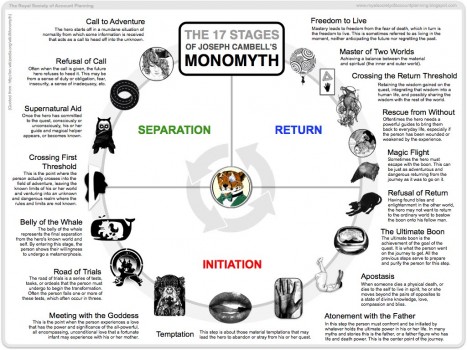
The Cycle of Mythology
Stage 1: Separation
I n the first stage of the hero’s journey, we find our protangonist living life in a typically mundane situation. The Star Wars , Luke Skywalker lives as a talented yet lowly and pretty damn whiny moisture farmer on Tatooine.
Until…
1. Call to Adventure – By some chance the hero will become aware of information or actions that call for them to go on a quest. The lovable and recently acquired droid R2-D2 plays a holographic message of Princess Leia pleading for Luke’s soon to be mentor, Obi-Wan Kenobi’s assistance.
2. Refusal of the Call – Overwhelmed by the information, the hero refuses the call and makes excuses as to why they cannot answer it. Luke refuses Obi-Wan’s request to join him on his mission, stating that he has responsibilities at home.
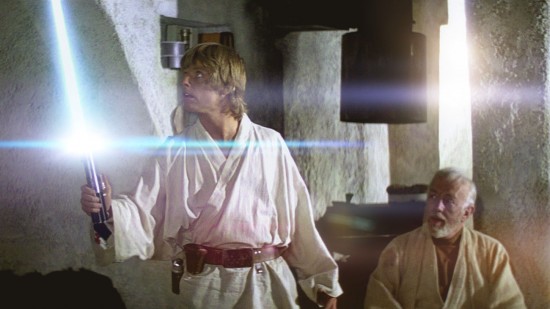
Luke’s Supernatural Aid is in the form of a Lightsaber and newfound Knowledge of the Force
3. Supernatural Aid – Once a commitment to the quest is made by the hero, they are provided with a special weapon or power that will assist them along the way. Obi-Wan gifts Luke his fathers lightsaber and explains some Force 101.
4. Crossing the Threshold – The moment when the hero actually embarks upon the journey. After Luke discovers that his family has been murdered and that nothing is left for him at home, he decides to join Obi-Wan on the quest to save Princess Leia, cause that sounds way cooler than hanging at the farm where your entire family was just massacred.
5. Belly of the Whale – The final separation between the hero and their home. Luke and Kenobi bail out from Tatooine with their new bros Han Solo and Chewbacca.
Stage 2: Initiation
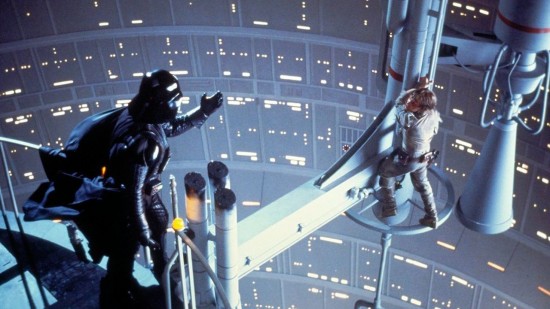
The Empire Strikes Back is nothing but a road of trials for our hero, Luke.
6. The Road of Trials – A series of usually 3 trials and tests, the hero often fails one or more of these test. In Luke’s journey the destruction of the Death Star is his first test and one that he passes. His second and third tests do not end so well. While training with Yoda on Dagobah, Luke fails in his truly mastering himself and the force. Thirdly, in the duel between himself and his newly revealed father, Darth Vader, he is defeated, injured, and almost killed.
7. The Meeting with the Goddess – Our hero experiences a love that has the power and significance to that of a mother. Luke begins to have strong feelings for Leia, his unbeknownst sister.
8. Woman as Temptress – The temptation to abandon the journey for material or other gain. Luke is close to being seduced to the dark side as the Emperor feeds his rage against his father and especially with the prospect that if he will not turn, perhaps his sister will.
9. Atonement with the Father – In this stage, the hero must confront and be initiated by whoever holds the ultimate power in their life. Luke battles Darth Vader and once again is on the losing side of the fight. Nearing death from the Emperor’s attacks, Luke begs his father to help save him from certain death.
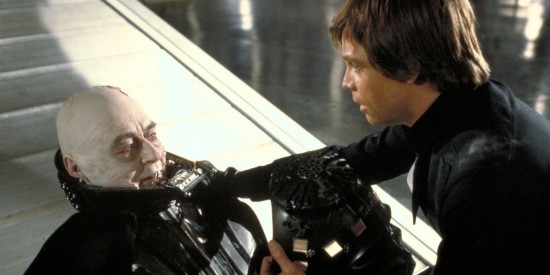
Anakin & Luke Meet for the 1st Time
10. Apotheosis – The spiritual death and rebirth of the hero. Darth Vader hears his son’s cries for help and returns to the light, deciding to destroy the Emperor in a self sacrificial action. By bringing his father back to the light, Luke has finally become a true jedi.
11. The Ultimate Boon – The stage of achievement of the goal. Luke is a jedi, has defeated the Empire, the dark side, saved his father, and all his friends and family are safe.
12. Refusal of the Return – The hero basking in their newly found bliss, may not want to return to their previous life and share this bliss with his fellow man. Luke does the opposite of this, upon his reunification with his friends, he shares with Leia that they are siblings. He then goes on to train her and new jedi in the ways of the force.
Stage 3: Return
13. The Magic Flight – The daring escape made after obtaining the boon. Luke carries his fathers body onto a transport and flees the Death Star before its complete destruction.
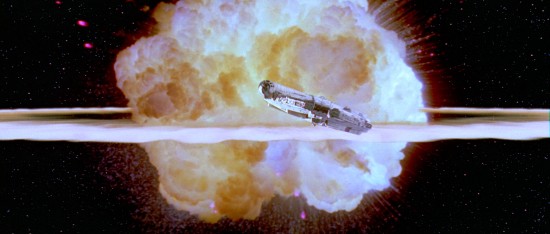
The Millennium Falcon in Magical Flight
14. Rescue from Without – When powerful guides or mentors help bring the hero back to normal life. When Anniken, Obi-Wan, and Yoda appear from the ether to acknowledge Luke and his newfound jedi knighthood.
15. Crossing the Return Threshold – Retaining, integrating, and sharing wisdom learned on the quest. Luke shares his knowledge of the force with future jedi.
16. Master of Two Worlds – The hero has achieved a balance between the material and spiritual world. Luke has sorted all of his family issues, become a man and a jedi.
17. Freedom to Live – By becoming a master of the two worlds, the hero is free from regrets of the past and worries of the future, this leaves them to live in the moment. Luke has resolved all the conflicts in his life, he is free to live at one with the force.
Each of Us are the Heroes in Our own Journey
The Monomyth is a method of story telling that is innate to humans. Cultures from around the world share it’s structure in their stories. Every human, whether they are aware of it or not, is on their own hero’s journey. By studying Joseph Campbell’s work we can better our own understanding of the tests, trials, and progress along our journey.
About Author
Tamlorn Chase
Tamlorn Chase hails from the coastal town of Santa Barbara, where he works as a wilderness guide, wildlife filmmaker, and environmental activist. Protecting the natural world is his profession and passion.
Related Posts

Father Figures
Comments are closed.
Powered by themekiller.com
Holiday Savings

cui:common.components.upgradeModal.offerHeader_undefined
The hero's journey: a story structure as old as time, the hero's journey offers a powerful framework for creating quest-based stories emphasizing self-transformation..

Table of Contents
Holding out for a hero to take your story to the next level?
The Hero’s Journey might be just what you’ve been looking for. Created by Joseph Campbell, this narrative framework packs mythic storytelling into a series of steps across three acts, each representing a crucial phase in a character's transformative journey.
Challenge . Growth . Triumph .
Whether you're penning a novel, screenplay, or video game, The Hero’s Journey is a tried-and-tested blueprint for crafting epic stories that transcend time and culture. Let’s explore the steps together and kickstart your next masterpiece.
What is the Hero’s Journey?
The Hero’s Journey is a famous template for storytelling, mapping a hero's adventurous quest through trials and tribulations to ultimate transformation.

What are the Origins of the Hero’s Journey?
The Hero’s Journey was invented by Campbell in his seminal 1949 work, The Hero with a Thousand Faces , where he introduces the concept of the "monomyth."
A comparative mythologist by trade, Campbell studied myths from cultures around the world and identified a common pattern in their narratives. He proposed that all mythic narratives are variations of a single, universal story, structured around a hero's adventure, trials, and eventual triumph.
His work unveiled the archetypal hero’s path as a mirror to humanity’s commonly shared experiences and aspirations. It was subsequently named one of the All-Time 100 Nonfiction Books by TIME in 2011.
How are the Hero’s and Heroine’s Journeys Different?
While both the Hero's and Heroine's Journeys share the theme of transformation, they diverge in their focus and execution.
The Hero’s Journey, as outlined by Campbell, emphasizes external challenges and a quest for physical or metaphorical treasures. In contrast, Murdock's Heroine’s Journey, explores internal landscapes, focusing on personal reconciliation, emotional growth, and the path to self-actualization.
In short, heroes seek to conquer the world, while heroines seek to transform their own lives; but…
Twelve Steps of the Hero’s Journey
So influential was Campbell’s monomyth theory that it's been used as the basis for some of the largest franchises of our generation: The Lord of the Rings , Harry Potter ...and George Lucas even cited it as a direct influence on Star Wars .
There are, in fact, several variations of the Hero's Journey, which we discuss further below. But for this breakdown, we'll use the twelve-step version outlined by Christopher Vogler in his book, The Writer's Journey (seemingly now out of print, unfortunately).

You probably already know the above stories pretty well so we’ll unpack the twelve steps of the Hero's Journey using Ben Gates’ journey in National Treasure as a case study—because what is more heroic than saving the Declaration of Independence from a bunch of goons?
Ye be warned: Spoilers ahead!
Act One: Departure
Step 1. the ordinary world.
The journey begins with the status quo—business as usual. We meet the hero and are introduced to the Known World they live in. In other words, this is your exposition, the starting stuff that establishes the story to come.

National Treasure begins in media res (preceded only by a short prologue), where we are given key information that introduces us to Ben Gates' world, who he is (a historian from a notorious family), what he does (treasure hunts), and why he's doing it (restoring his family's name).
With the help of his main ally, Riley, and a crew of other treasure hunters backed by a wealthy patron, he finds an 18th-century American ship in the Canadian Arctic, the Charlotte . Here, they find a ship-shaped pipe that presents a new riddle and later doubles as a key—for now, it's just another clue in the search for the lost treasure of the Templars, one that leads them to the Declaration of Independence.
Step 2. The Call to Adventure
The inciting incident takes place and the hero is called to act upon it. While they're still firmly in the Known World, the story kicks off and leaves the hero feeling out of balance. In other words, they are placed at a crossroads.
Ian (the wealthy patron of the Charlotte operation) steals the pipe from Ben and Riley and leaves them stranded. This is a key moment: Ian becomes the villain, Ben has now sufficiently lost his funding for this expedition, and if he decides to pursue the chase, he'll be up against extreme odds.
Step 3. Refusal of the Call
The hero hesitates and instead refuses their call to action. Following the call would mean making a conscious decision to break away from the status quo. Ahead lies danger, risk, and the unknown; but here and now, the hero is still in the safety and comfort of what they know.
Ben debates continuing the hunt for the Templar treasure. Before taking any action, he decides to try and warn the authorities: the FBI, Homeland Security, and the staff of the National Archives, where the Declaration of Independence is housed and monitored. Nobody will listen to him, and his family's notoriety doesn't help matters.
Step 4. Meeting the Mentor
The protagonist receives knowledge or motivation from a powerful or influential figure. This is a tactical move on the hero's part—remember that it was only the previous step in which they debated whether or not to jump headfirst into the unknown. By Meeting the Mentor, they can gain new information or insight, and better equip themselves for the journey they might to embark on.

Abigail, an archivist at the National Archives, brushes Ben and Riley off as being crazy, but Ben uses the interaction to his advantage in other ways—to seek out information about how the Declaration of Independence is stored and cared for, as well as what (and more importantly, who) else he might be up against in his own attempt to steal it.
In a key scene, we see him contemplate the entire operation while standing over the glass-encased Declaration of Independence. Finally, he firmly decides to pursue the treasure and stop Ian, uttering the famous line, "I'm gonna steal the Declaration of Independence."
Act Two: Initiation
Step 5. crossing the threshold.
The hero leaves the Known World to face the Unknown World. They are fully committed to the journey, with no way to turn back now. There may be a confrontation of some sort, and the stakes will be raised.

Ben and Riley infiltrate the National Archives during a gala and successfully steal the Declaration of Independence. But wait—it's not so easy. While stealing the Declaration of Independence, Abigail suspects something is up and Ben faces off against Ian.
Then, when trying to escape the building, Ben exits through the gift shop, where an attendant spots the document peeking out of his jacket. He is forced to pay for it, feigning that it's a replica—and because he doesn't have enough cash, he has to use his credit card, so there goes keeping his identity anonymous.
The game is afoot.
Step 6. Tests, Allies, Enemies
The hero explores the Unknown World. Now that they have firmly crossed the threshold from the Known World, the hero will face new challenges and possibly meet new enemies. They'll have to call upon their allies, new and old, in order to keep moving forward.
Abigail reluctantly joins the team under the agreement that she'll help handle the Declaration of Independence, given her background in document archiving and restoration. Ben and co. seek the aid of Ben's father, Patrick Gates, whom Ben has a strained relationship with thanks to years of failed treasure hunting that has created a rift between grandfather, father, and son. Finally, they travel around Philadelphia deciphering clues while avoiding both Ian and the FBI.
Step 7. Approach the Innermost Cave
The hero nears the goal of their quest, the reason they crossed the threshold in the first place. Here, they could be making plans, having new revelations, or gaining new skills. To put it in other familiar terms, this step would mark the moment just before the story's climax.
Ben uncovers a pivotal clue—or rather, he finds an essential item—a pair of bifocals with interchangeable lenses made by Benjamin Franklin. It is revealed that by switching through the various lenses, different messages will be revealed on the back of the Declaration of Independence. He's forced to split from Abigail and Riley, but Ben has never been closer to the treasure.
Step 8. The Ordeal
The hero faces a dire situation that changes how they view the world. All threads of the story come together at this pinnacle, the central crisis from which the hero will emerge unscathed or otherwise. The stakes will be at their absolute highest here.
Vogler details that in this stage, the hero will experience a "death," though it need not be literal. In your story, this could signify the end of something and the beginning of another, which could itself be figurative or literal. For example, a certain relationship could come to an end, or it could mean someone "stuck in their ways" opens up to a new perspective.
In National Treasure , The FBI captures Ben and Ian makes off with the Declaration of Independence—all hope feels lost. To add to it, Ian reveals that he's kidnapped Ben's father and threatens to take further action if Ben doesn't help solve the final clues and lead Ian to the treasure.
Ben escapes the FBI with Ian's help, reunites with Abigail and Riley, and leads everyone to an underground structure built below Trinity Church in New York City. Here, they manage to split from Ian once more, sending him on a goose chase to Boston with a false clue, and proceed further into the underground structure.
Though they haven't found the treasure just yet, being this far into the hunt proves to Ben's father, Patrick, that it's real enough. The two men share an emotional moment that validates what their family has been trying to do for generations.
Step 9. Reward
This is it, the moment the hero has been waiting for. They've survived "death," weathered the crisis of The Ordeal, and earned the Reward for which they went on this journey.

Now, free of Ian's clutches and with some light clue-solving, Ben, Abigail, Riley, and Patrick keep progressing through the underground structure and eventually find the Templar's treasure—it's real and more massive than they could have imagined. Everyone revels in their discovery while simultaneously looking for a way back out.
Act Three: Return
Step 10. the road back.
It's time for the journey to head towards its conclusion. The hero begins their return to the Known World and may face unexpected challenges. Whatever happens, the "why" remains paramount here (i.e. why the hero ultimately chose to embark on their journey).
This step marks a final turning point where they'll have to take action or make a decision to keep moving forward and be "reborn" back into the Known World.
Act Three of National Treasure is admittedly quite short. After finding the treasure, Ben and co. emerge from underground to face the FBI once more. Not much of a road to travel back here so much as a tunnel to scale in a crypt.
Step 11. Resurrection
The hero faces their ultimate challenge and emerges victorious, but forever changed. This step often requires a sacrifice of some sort, and having stepped into the role of The Hero™, they must answer to this.

Ben is given an ultimatum— somebody has to go to jail (on account of the whole stealing-the-Declaration-of-Independence thing). But, Ben also found a treasure worth millions of dollars and that has great value to several nations around the world, so that counts for something.
Ultimately, Ben sells Ian out, makes a deal to exonerate his friends and family, and willingly hands the treasure over to the authorities. Remember: he wanted to find the treasure, but his "why" was to restore the Gates family name, so he won regardless.
Step 12. Return With the Elixir
Finally, the hero returns home as a new version of themself, the elixir is shared amongst the people, and the journey is completed full circle.
The elixir, like many other elements of the hero's journey, can be literal or figurative. It can be a tangible thing, such as an actual elixir meant for some specific purpose, or it could be represented by an abstract concept such as hope, wisdom, or love.
Vogler notes that if the Hero's Journey results in a tragedy, the elixir can instead have an effect external to the story—meaning that it could be something meant to affect the audience and/or increase their awareness of the world.
In the final scene of National Treasure , we see Ben and Abigail walking the grounds of a massive estate. Riley pulls up in a fancy sports car and comments on how they could have gotten more money. They all chat about attending a museum exhibit in Cairo (Egypt).
In one scene, we're given a lot of closure: Ben and co. received a hefty payout for finding the treasure, Ben and Abigail are a couple now, and the treasure was rightfully spread to those it benefitted most—in this case, countries who were able to reunite with significant pieces of their history. Everyone's happy, none of them went to jail despite the serious crimes committed, and they're all a whole lot wealthier. Oh, Hollywood.
Variations of the Hero's Journey
Plot structure is important, but you don't need to follow it exactly; and, in fact, your story probably won't. Your version of the Hero's Journey might require more or fewer steps, or you might simply go off the beaten path for a few steps—and that's okay!

What follows are three additional versions of the Hero's Journey, which you may be more familiar with than Vogler's version presented above.
Dan Harmon's Story Circle (or, The Eight-Step Hero's Journey)
Screenwriter Dan Harmon has riffed on the Hero's Journey by creating a more compact version, the Story Circle —and it works especially well for shorter-format stories such as television episodes, which happens to be what Harmon writes.
The Story Circle comprises eight simple steps with a heavy emphasis on the hero's character arc:
- The hero is in a zone of comfort...
- But they want something.
- They enter an unfamiliar situation...
- And adapt to it by facing trials.
- They get what they want...
- But they pay a heavy price for it.
- They return to their familiar situation...
- Having changed.
You may have noticed, but there is a sort of rhythm here. The eight steps work well in four pairs, simplifying the core of the Hero's Journey even further:
- The hero is in a zone of comfort, but they want something.
- They enter an unfamiliar situation and have to adapt via new trials.
- They get what they want, but they pay a price for it.
- They return to their zone of comfort, forever changed.
If you're writing shorter fiction, such as a short story or novella, definitely check out the Story Circle. It's the Hero's Journey minus all the extraneous bells & whistles.
Ten-Step Hero's Journey
The ten-step Hero's Journey is similar to the twelve-step version we presented above. It includes most of the same steps except for Refusal of the Call and Meeting the Mentor, arguing that these steps aren't as essential to include; and, it moves Crossing the Threshold to the end of Act One and Reward to the end of Act Two.
- The Ordinary World
- The Call to Adventure
- Crossing the Threshold
- Tests, Allies, Enemies
- Approach the Innermost Cave
- The Road Back
- Resurrection
- Return with Elixir
We've previously written about the ten-step hero's journey in a series of essays separated by act: Act One (with a prologue), Act Two , and Act Three .
Twelve-Step Hero's Journey: Version Two
Again, the second version of the twelve-step hero's journey is very similar to the one above, save for a few changes, including in which story act certain steps appear.
This version skips The Ordinary World exposition and starts right at The Call to Adventure; then, the story ends with two new steps in place of Return With Elixir: The Return and The Freedom to Live.
- The Refusal of the Call
- Meeting the Mentor
- Test, Allies, Enemies
- Approaching the Innermost Cave
- The Resurrection
- The Return*
- The Freedom to Live*
In the final act of this version, there is more of a focus on an internal transformation for the hero. They experience a metamorphosis on their journey back to the Known World, return home changed, and go on to live a new life, uninhibited.
Seventeen-Step Hero's Journey
Finally, the granddaddy of heroic journeys: the seventeen-step Hero's Journey. This version includes a slew of extra steps your hero might face out in the expanse.
- Refusal of the Call
- Supernatural Aid (aka Meeting the Mentor)
- Belly of the Whale*: This added stage marks the hero's immediate descent into danger once they've crossed the threshold.
- Road of Trials (...with Allies, Tests, and Enemies)
- Meeting with the Goddess/God*: In this stage, the hero meets with a new advisor or powerful figure, who equips them with the knowledge or insight needed to keep progressing forward.
- Woman as Temptress (or simply, Temptation)*: Here, the hero is tempted, against their better judgment, to question themselves and their reason for being on the journey. They may feel insecure about something specific or have an exposed weakness that momentarily holds them back.
- Atonement with the Father (or, Catharthis)*: The hero faces their Temptation and moves beyond it, shedding free from all that holds them back.
- Apotheosis (aka The Ordeal)
- The Ultimate Boon (aka the Reward)
- Refusal of the Return*: The hero wonders if they even want to go back to their old life now that they've been forever changed.
- The Magic Flight*: Having decided to return to the Known World, the hero needs to actually find a way back.
- Rescue From Without*: Allies may come to the hero's rescue, helping them escape this bold, new world and return home.
- Crossing of the Return Threshold (aka The Return)
- Master of Two Worlds*: Very closely resembling The Resurrection stage in other variations, this stage signifies that the hero is quite literally a master of two worlds—The Known World and the Unknown World—having conquered each.
- Freedom to Live
Again, we skip the Ordinary World opening here. Additionally, Acts Two and Three look pretty different from what we've seen so far, although, the bones of the Hero's Journey structure remain.
The Eight Hero’s Journey Archetypes
The Hero is, understandably, the cornerstone of the Hero’s Journey, but they’re just one of eight key archetypes that make up this narrative framework.

In The Writer's Journey , Vogler outlined seven of these archetypes, only excluding the Ally, which we've included below. Here’s a breakdown of all eight with examples:
1. The Hero
As outlined, the Hero is the protagonist who embarks on a transformative quest or journey. The challenges they overcome represent universal human struggles and triumphs.
Vogler assigned a "primary function" to each archetype—helpful for establishing their role in a story. The Hero's primary function is "to service and sacrifice."
Example: Neo from The Matrix , who evolves from a regular individual into the prophesied savior of humanity.
2. The Mentor
A wise guide offering knowledge, tools, and advice, Mentors help the Hero navigate the journey and discover their potential. Their primary function is "to guide."
Example: Mr. Miyagi from The Karate Kid imparts not only martial arts skills but invaluable life lessons to Daniel.
3. The Ally
Companions who support the Hero, Allies provide assistance, friendship, and moral support throughout the journey. They may also become a friends-to-lovers romantic partner.
Not included in Vogler's list is the Ally, though we'd argue they are essential nonetheless. Let's say their primary function is "to aid and support."
Example: Samwise Gamgee from Lord of the Rings , a loyal friend and steadfast supporter of Frodo.
4. The Herald
The Herald acts as a catalyst to initiate the Hero's Journey, often presenting a challenge or calling the hero to adventure. Their primary function is "to warn or challenge."
Example: Effie Trinket from The Hunger Games , whose selection at the Reaping sets Katniss’s journey into motion.
5. The Trickster
A character who brings humor and unpredictability, challenges conventions, and offers alternative perspectives or solutions. Their primary function is "to disrupt."
Example: Loki from Norse mythology exemplifies the trickster, with his cunning and chaotic influence.
6. The Shapeshifter
Ambiguous figures whose allegiance and intentions are uncertain. They may be a friend one moment and a foe the next. Their primary function is "to question and deceive."
Example: Catwoman from the Batman universe often blurs the line between ally and adversary, slinking between both roles with glee.
7. The Guardian
Protectors of important thresholds, Guardians challenge or test the Hero, serving as obstacles to overcome or lessons to be learned. Their primary function is "to test."
Example: The Black Knight in Monty Python and the Holy Grail literally bellows “None shall pass!”—a quintessential ( but not very effective ) Guardian.
8. The Shadow
Represents the Hero's inner conflict or an antagonist, often embodying the darker aspects of the hero or their opposition. Their primary function is "to destroy."
Example: Zuko from Avatar: The Last Airbender; initially an adversary, his journey parallels the Hero’s path of transformation.
While your story does not have to use all of the archetypes, they can help you develop your characters and visualize how they interact with one another—especially the Hero.
For example, take your hero and place them in the center of a blank worksheet, then write down your other major characters in a circle around them and determine who best fits into which archetype. Who challenges your hero? Who tricks them? Who guides them? And so on...
Stories that Use the Hero’s Journey
Not a fan of saving the Declaration of Independence? Check out these alternative examples of the Hero’s Journey to get inspired:
- Epic of Gilgamesh : An ancient Mesopotamian epic poem thought to be one of the earliest examples of the Hero’s Journey (and one of the oldest recorded stories).
- The Lion King (1994): Simba's exile and return depict a tale of growth, responsibility, and reclaiming his rightful place as king.
- The Alchemist by Paolo Coehlo: Santiago's quest for treasure transforms into a journey of self-discovery and personal enlightenment.
- Coraline by Neil Gaiman: A young girl's adventure in a parallel world teaches her about courage, family, and appreciating her own reality.
- Kung Fu Panda (2008): Po's transformation from a clumsy panda to a skilled warrior perfectly exemplifies the Hero's Journey. Skadoosh!
The Hero's Journey is so generalized that it's ubiquitous. You can plop the plot of just about any quest-style narrative into its framework and say that the story follows the Hero's Journey. Try it out for yourself as an exercise in getting familiar with the method.
Will the Hero's Journey Work For You?
As renowned as it is, the Hero's Journey works best for the kinds of tales that inspired it: mythic stories.
Writers of speculative fiction may gravitate towards this method over others, especially those writing epic fantasy and science fiction (big, bold fantasy quests and grand space operas come to mind).
The stories we tell today are vast and varied, and they stretch far beyond the dealings of deities, saving kingdoms, or acquiring some fabled "elixir." While that may have worked for Gilgamesh a few thousand years ago, it's not always representative of our lived experiences here and now.
If you decide to give the Hero's Journey a go, we encourage you to make it your own! The pieces of your plot don't have to neatly fit into the structure, but you can certainly make a strong start on mapping out your story.
Hero's Journey Campfire Template
The Timeline Module in Campfire offers a versatile canvas to plot out each basic component of your story while featuring nested "notebooks."

Simply double-click on each event card in your timeline to open up a canvas specific to that card. This allows you to look at your plot at the highest level, while also adding as much detail for each plot element as needed!
If you're just hearing about Campfire for the first time, it's free to sign up—forever! Let's plot the most epic of hero's journeys 👇
Lessons From the Hero’s Journey
The Hero's Journey offers a powerful framework for creating stories centered around growth, adventure, and transformation.
If you want to develop compelling characters, spin out engaging plots, and write books that express themes of valor and courage, consider The Hero’s Journey your blueprint. So stop holding out for a hero, and start writing!
Does your story mirror the Hero's Journey? Let us know in the comments below.

Improve your writing in one of the largest and most successful writing groups online
Join our writing group!
The Hero’s Journey Ultimate Writing Guide with Examples

by Alex Cabal
What do Star Wars , The Hobbit , and Harry Potter have in common? They’re all examples of a story archetype as old as time. You’ll see this universal narrative structure in books, films, and even video games.
This ultimate Hero’s Journey writing guide will define and explore all quintessential elements of the Hero’s Journey—character archetypes, themes, symbolism, the three act structure, as well as 12 stages of the Hero’s Journey. We’ll even provide a downloadable plot template, tips for writing the Hero’s Journey, and writing prompts to get the creative juices flowing.
What is the Hero’s Journey?
The Hero’s Journey is a universal story structure that follows the personal metamorphosis and psychological development of a protagonist on a heroic adventure. The protagonist goes through a series of stages to overcome adversity and complete a quest to attain an ultimate reward—whether that’s something tangible, like the holy grail, or something internal, like self confidence.
In the process of self-discovery, the archetypal Hero’s Journey is typically cyclical; it begins and ends in the same place (Think Frodo leaving and then returning to the Shire). After the epic quest or adventure has been completed by overcoming adversity and conflict—both physical and mental—the hero arrives where they once began, changed in some as they rose to meet the ultimate conflict or ordeal of the quest.
Joseph Campbell and Christopher Vogler
The Hero’s Journey has a long history of conversation around the form and its uses, with notable contributors including Joseph Campbell and the screenwriter Christopher Vogler , who later revised the steps of the Hero’s Journey.
Joseph Campbell’s “monomyth” framework is the traditional story structure of the Hero’s Journey archetype. Campbell developed it through analysis of ancient myths, folktales, and religious stories. It generally follows three acts in a cyclical, rather than a linear, way: a hero embarks on a journey, faces a crisis, and then returns home transformed and victorious.
Campbell’s ideation of the monomyth in his book The Hero With a Thousand Faces was influenced by Carl Jung’s perspective of psychology and models of self-transformation , where the Hero’s Journey is a path of transformation to a higher self, psychological healing, and spiritual growth.
While Campbell’s original take on the monomyth included 17 steps within the three acts, Christopher Vogler, in his book The Writer’s Journey , refined those 17 steps into 12 stages—the common formula for the modern structure many writers use today.
It’s also worth checking out Maureen Murdock’s work on the archetype, “The Heroine’s Journey.” This takes a look at the female Hero’s Journey, which examines the traditionally masculine journey through a feminist lens.
Hero’s Journey diagram: acts, steps, and stages
Below, you can see the way Volger’s Hero’s Journey is broken into twelve story beats across three acts.

Why is the Hero’s Journey so popular?
The structure of the Hero’s Journey appears in many of our most beloved classic stories, and it continues to resonate over time because it explores the concept of personal transformation and growth through both physical and mental trials and tribulations. In some sense, every individual in this mythic structure experiences rites of passage, the search for home and the true authentic self, which is mirrored in a protagonist’s journey of overcoming obstacles while seeking to fulfill a goal.
Additionally, the Hero’s Journey typically includes commonly shared symbols and aspects of the human psyche—the trickster, the mother, the child, etc. These archetypes play a role in creating a story that the reader can recognize from similar dynamics in their own relationships, experiences, and familiar world. Archetypes allow the writer to use these “metaphorical truths”—a playful deceiver, a maternal bond, a person of innocence and purity—to deeply and empathetically connect with the reader through symbolism. That’s why they continue to appear in countless stories all around the world.
Hero’s Journey character archetypes
Character archetypes are literary devices based on a set of qualities that are easy for a reader to identify, empathize with, and understand, as these qualities and traits are common to the human experience.
It should be noted that character archetypes are not stereotypes . While stereotypes are oversimplifications of demographics or personality traits, an archetype is a symbol of a universal type of character that can be recognized either in one’s self or in others in real life.
The following archetypes are commonly used in a Hero’s Journey:
The hero is typically the protagonist or principal point-of-view character within a story. The hero transforms—internally, externally, often both—while on their journey as they experience tests and trials and are aided or hindered by the other archetypes they encounter. In general, the hero must rise to the challenge and at some point make an act of sacrifice for the ultimate greater good. In this way, the Hero’s Journey represents the reader’s own everyday battles and their power to overcome them.
Heroes may be willing or unwilling. Some can be downright unheroic to begin with. Antiheroes are notably flawed characters that must grow significantly before they achieve the status of true hero.
The mentor often possesses divine wisdom or direct experience with the special world, and has faith in the hero. They often give the hero a gift or supernatural aid, which is usually something important for the quest: either a weapon to destroy a monster, or a talisman to enlighten the hero. The mentor may also directly aid the hero or present challenges to them that force internal or external growth. After their meeting, the hero leaves stronger and better prepared for the road ahead.
The herald is the “call to adventure.” They announce the coming of significant change and become the reason the hero ventures out onto a mysterious adventure. The herald is a catalyst that enters the story and makes it impossible for the hero to remain in status quo. Existing in the form of a person or an event, or sometimes just as information, they shift the hero’s balance and change their world.
The Threshold Guardian
This archetype guards the first threshold—the major turning point of the story where the hero must make the true commitment of the journey and embark on their quest to achieve their destiny. Threshold guardians spice up the story by providing obstacles the hero must overcome, but they’re usually not the main antagonist.
The role of the threshold guardian is to help round out the hero along their journey. The threshold guardian will test the hero’s determination and commitment and will drive them forward as the hero enters the next stage of their journey, assisting the development of the hero’s character arc within the plot. The threshold guardian can be a friend who doesn’t believe in the hero’s quest, or a foe that makes the hero question themselves, their desires, or motives in an attempt to deter the hero from their journey. Ultimately, the role of the threshold guardian is to test the hero’s resolve on their quest.
The Shape Shifter
The shape shifter adds dramatic tension to the story and provides the hero with a puzzle to solve. They can seem to be one thing, but in fact be something else. They bring doubt and suspense to the story and test the hero’s ability to discern their path. The shape shifter may be a lover, friend, ally, or enemy that somehow reveals their true self from the hero’s preconceived notion. This often causes the hero internal turmoil, or creates additional challenges and tests to overcome.
The shadow is the “monster under the bed,” and could be repressed feelings, deep trauma, or festering guilt. These all possess the dark energy of the shadow. It is the dark force of the unexpressed, unrealized, rejected, feared aspects of the hero and is often, but not necessarily, represented by the main antagonist or villain.
However, other characters may take the form of the shadow at different stages of the story as “foil characters” that contrast against the hero. They might also represent what could happen if the hero fails to learn, transform, and grow to complete their quest. At times, a hero may even succumb to the shadow, from which they will need to make sacrifices to be redeemed to continue on their overall quest.
The Trickster
The trickster is the jester or fool of the story that not only provides comic relief, but may also act as a commentator as the events of the plot unfold. Tricksters are typically witty, clever, spontaneous, and sometimes even ridiculous. The trickster within a story can bring a light-hearted element to a challenge, or find a clever way to overcome an obstacle.

Hero’s Journey themes and symbols
Alongside character archetypes, there are also archetypes for settings, situations, and symbolic items that can offer meaning to the world within the story or support your story’s theme.
Archetypes of themes, symbols, and situations represent shared patterns of human existence. This familiarity can provide the reader insight into the deeper meaning of a story without the writer needing to explicitly tell them. There are a great number of archetypes and symbols that can be used to reinforce a theme. Some that are common to the Hero’s Journey include:
Situational archetypes
Light vs. dark and the battle of good vs. evil
Death, rebirth, and transformation in the cycle of life
Nature vs. technology, and the evolution of humanity
Rags to riches or vice versa, as commentary on the material world and social status
Wisdom vs. knowledge and innocence vs. experience, in the understanding of intuition and learned experience
Setting archetypes
Gardens may represent the taming of nature, or living in harmony with nature.
Forests may represent reconnection with nature or wildness, or the fear of the unknown.
Cities or small towns may represent humanity at its best and at its worst. A small town may offer comfort and rest, while simultaneously offering judgment; a city may represent danger while simultaneously championing diversity of ideas, beings, and cultures.
Water and fire within a landscape may represent danger, change, purification, and cleansing.
Symbolic items
Items of the past self. These items are generally tokens from home that remind the hero of where they came from and who or what they’re fighting for.
Gifts to the hero. These items may be given to the hero from a mentor, ally, or even a minor character they meet along the way. These items are typically hero talismans, and may or may not be magical, but will aid the hero on their journey.
Found items. These items are typically found along the journey and represent some sort of growth or change within the hero. After all, the hero would never have found the item had they not left their everyday life behind. These items may immediately seem unimportant, but often carry great significance.
Earned rewards. These items are generally earned by overcoming a test or trial, and often represent growth, or give aid in future trials, tests, and conflicts.
The three act structure of the Hero’s Journey
The structure of the Hero’s Journey, including all 12 steps, can be grouped into three stages that encompass each phase of the journey. These acts follow the the external and internal arc of the hero—the beginning, the initiation and transformation, and the return home.
Act One: Departure (Steps 1—5)
The first act introduces the hero within the ordinary world, as they are—original and untransformed. The first act will typically include the first five steps of the Hero’s Journey.
This section allows the writer to set the stage with details that show who the hero is before their metamorphosis—what is the environment of the ordinary world? What’s important to the hero? Why do they first refuse the call, and then, why do they ultimately accept and embark on the journey to meet with the conflict?
This stage introduces the first major plot point of the story, explores the conflict the hero confronts, and provides the opportunity for characterization for the hero and their companions.
The end of the first act generally occurs when the hero has fully committed to the journey and crossed the threshold of the ordinary world—where there is no turning back.
Act Two: Initiation (Steps 6—9)
Once the hero begins their journey, the second act marks the beginning of their true initiation into the unfamiliar world—they have crossed the threshold, and through this choice, have undergone their first transformation.
The second act is generally the longest of the three and includes steps six through nine.
In this act, the hero meets most of the characters that will be pivotal to the plot, including friends, enemies, and allies. It offers the rising action and other minor plot points related to the overarching conflict. The hero will overcome various trials, grow and transform, and navigate subplots—the additional and unforeseen complexity of the conflict.
This act generally ends when the hero has risen to the challenge to overcome the ordeal and receives their reward. At the end of this act, it’s common for the theme and moral of the story to be fully unveiled.
Act Three: Return (Steps 10—12)
The final stage typically includes steps 10—12, generally beginning with the road back—the point in the story where the hero must recommit to the journey and use all of the growth, transformation, gifts and tools acquired along the journey to bring a decisive victory against their final conflict.
From this event, the hero will also be “reborn,” either literally or metaphorically, and then beginning anew as a self-actualized being, equipped with internal knowledge about themselves, external knowledge about the world, and experience.
At the end of the third act, the hero returns home to the ordinary world, bringing back the gifts they earned on their journey. In the final passages, both the hero and their perception of the ordinary world are compared with what they once were.
The 12 steps of the Hero’s Journey
The following guide outlines the 12 steps of the Hero’s Journey and represents a framework for the creation of a Hero’s Journey story template. You don’t necessarily need to follow the explicit cadence of these steps in your own writing, but they should act as checkpoints to the overall story.
We’ll also use JRR Tolkien’s The Hobbit as a literary example for each of these steps. The Hobbit does an exemplary job of following the Hero’s Journey, and it’s also an example of how checkpoints can exist in more than one place in a story, or how they may deviate from the typical 12-step process of the Hero’s Journey.

1. The Ordinary World
This stage in the Hero’s Journey is all about exposition. This introduces the hero’s backstory—who the hero is, where they come from, their worldview, culture, and so on. This offers the reader a chance to relate to the character in their untransformed form.
As the story and character arc develop, the reader is brought along the journey of transformation. By starting at the beginning, a reader has a basic understanding of what drives the hero, so they can understand why the hero makes the choices they do. The ordinary world shows the protagonist in their comfort zone, with their worldview being limited to the perspective of their everyday life.
Characters in the ordinary world may or may not be fully comfortable or satisfied, but they don’t have a point of reference to compare—they have yet to leave the ordinary world to gain the knowledge to do so.
Step One example
The Hobbit begins by introducing Bilbo in the Shire as a respectable and well-to-do member of the community. His ordinary world is utopian and comfortable. Yet, even within a village that is largely uninterested in the concerns of the world outside, the reader is provided a backstory: even though Bilbo buys into the comforts and normalcy of the Shire, he still yearns for adventure—something his neighbors frown upon. This ordinary world of the Shire is disrupted with the introduction of Gandalf—the “mentor”—who is somewhat uncomfortably invited to tea.
2. Call to Adventure
The call to adventure in the Hero’s Journey structure is the initial internal conflict that the protagonist hero faces, that drives them to the true conflict that they must overcome by the end of their journey.
The call occurs within the known world of the character. Here the writer can build on the characterization of the protagonist by detailing how they respond to the initial call. Are they hesitant, eager, excited, refusing, or willing to take a risk?
Step Two example
Bilbo’s call to adventure takes place at tea as the dwarves leisurely enter his home, followed by Gandalf, who identifies Bilbo as the group’s missing element—the burglar, and the lucky 14th member.
Bilbo and his ordinary world are emphasized by his discomfort with his rambunctious and careless guests. Yet as the dwarves sing stories of old adventures, caverns, and lineages, which introduce and foreshadow the conflict to come, a yearning for adventure is stirred. Though he still clings to his ordinary world and his life in the Shire, he’s conflicted. Should he leave the shire and experience the world, or stay in his comfortable home? Bilbo continues to refuse the call, but with mixed feelings.

3. Refusal of the Call
The refusal of the call in the Hero’s Journey showcases a “clinging” to one’s original self or world view. The initial refusal of the call represents a fear of change, as well as a resistance to the internal transformation that will occur after the adventure has begun.
The refusal reveals the risks that the protagonist faces if they were to answer the call, and shows what they’ll leave behind in the ordinary world once they accept.
The refusal of the call creates tension in the story, and should show the personal reasons why the hero is refusing—inner conflict, fear of change, hesitation, insecurity, etc. This helps make their character clearer for the reader.
These are all emotions a reader can relate to, and in presenting them through the hero, the writer deepens the reader’s relationship with them and helps the reader sympathize with the hero’s internal plight as they take the first step of transformation.
Step Three example
Bilbo refuses the call in his first encounter with Gandalf, and in his reaction to the dwarves during tea. Even though Bilbo’s “Tookish” tendencies make him yearn for adventure, he goes to bed that night still refusing the call. The next morning, as Bilbo awakes to an empty and almost fully clean hobbit home, he feels a slight disappointment for not joining the party, but quickly soothes his concerns by enjoying the comfort of his home—i.e. the ordinary world. Bilbo explores his hesitation to disembark from the ordinary world, questioning why a hobbit would become mixed up in the adventures of others, and choosing not to meet the dwarves at the designated location.
4. Meeting the Mentor
Meeting the mentor in the Hero’s Journey is the stage that provides the hero protagonist with a guide, relationship, and/or informational asset that has experience outside the ordinary world. The mentor offers confidence, advice, wisdom, training, insight, tools, items, or gifts of supernatural wonder that the hero will use along the journey and in overcoming the ultimate conflict.
The mentor often represents someone who has attempted to overcome, or actually has overcome, an obstacle, and encourages the hero to pursue their calling, regardless of the hero’s weaknesses or insecurities. The mentor may also explicitly point out the hero’s weaknesses, forcing them to reckon with and accept them, which is the first step to their personal transformation.
Note that not all mentors need to be a character . They can also be objects or knowledge that has been instilled in the hero somehow—cultural ethics, spiritual guidance, training of a particular skill, a map, book, diary, or object that illuminates the path forward, etc. In essence, the mentor character or object has a role in offering the protagonist outside help and guidance along the Hero’s Journey, and plays a key role in the protagonist’s transition from normalcy to heroism.
The mentor figure also offers the writer the opportunity to incorporate new information by expanding upon the story, plot, or backstory in unique ways. They do this by giving the hero information that would otherwise be difficult for the writer to convey naturally.
The mentor may accompany the hero throughout most of the story, or they may only periodically be included to facilitate changes and transformation within them.
Step Four example
The mentor, Gandalf, is introduced almost immediately. Gandalf is shown to be the mentor, firstly through his arrival from—and wisdom of—the outside world; and secondly, through his selection of Bilbo for the dwarven party by identifying the unique characteristics Bilbo has that are essential to overcoming the challenges in the journey. Gandalf doesn’t accompany Bilbo and the company through all of the trials and tribulations of the plot, but he does play a key role in offering guidance and assistance, and saves the group in times of dire peril.

5. Crossing the Threshold
As the hero crosses the first threshold, they begin their personal quest toward self-transformation. Crossing the threshold means that the character has committed to the journey, and has stepped outside of the ordinary world in the pursuit of their goal. This typically marks the conclusion of the first act.
The threshold lies between the ordinary world and the special world, and marks the point of the story where the hero fully commits to the road ahead. It’s a crucial stage in the Hero’s Journey, as the hero wouldn’t be able to grow and transform by staying in the ordinary world where they’re comfortable and their world view can’t change.
The threshold isn’t necessarily a specific place within the world of the story, though a place can symbolize the threshold—for example a border, gateway, or crossroads that separate what is safe and “known” from what is potentially dangerous. It can also be a moment or experience that causes the hero to recognize that the comforts and routine of their world no longer apply—like the loss of someone or something close to the hero, for example. The purpose of the threshold is to take the hero out of their element and force them, and the reader, to adapt from the known to the unknown.
This moment is crucial to the story’s tension. It marks the first true shift in the character arc and the moment the adventure has truly begun. The threshold commonly forces the hero into a situation where there’s no turning back. This is sometimes called the initiation stage or the departure stage.
Step Five example
The threshold moment in The Hobbit occurs when the party experiences true danger as a group for the first time. Bilbo, voted as scout by the party and eager to prove his burglar abilities, sneaks upon a lone fire in the forest where he finds three large trolls. Rather than turn back empty-handed—as he initially wants to—Bilbo chooses to prove himself, plucking up the courage to pickpocket the trolls—but is caught in the process. The dwarves are also captured and fortunately, Gandalf, the mentor, comes to save the party.
Bilbo’s character arc is solidified in this threshold moment. He experiences his first transformation when he casts aside fear and seeks to prove himself as a burglar, and as an official member of the party. This moment also provides further characterization of the party as a whole, proving the loyalty of the group in seeking out their captured member.
Gandalf’s position as the mentor is also firmly established as he returns to ultimately save all of the members of the party from being eaten by trolls. The chapter ends with Bilbo taking ownership of his first hero talisman—the sword that will accompany him through the rest of the adventure.
6. Tests, Allies, Enemies
Once the hero has crossed the threshold, they must now encounter tests of courage, make allies, and inevitably confront enemies. All these elements force the hero to learn the new ways of the special world and how it differs from the hero’s ordinary world—i.e. how the rules have changed, the conditions of the special world vs. the ordinary world, and the various beings and places within it.
All these elements spark stages of transformation within the hero—learning who they can trust and who they can’t, learning new skills, seeking training from the mentor, and overcoming challenges that force and drive them to grow and transform.
The hero may both succeed and fail at various points of this stage, which will test their commitment to the journey. The writer can create tension by making it clear that the hero may or may not succeed at the critical moment of crisis. These crises can be external or internal.
External conflicts are issues that the character must face and overcome within the plot—e.g. the enemy has a sword drawn and the hero must fight to survive.
Internal conflicts occur inside the hero. For example, the hero has reached safety, but their ally is in peril; will they step outside their comfort zone and rise to the occasion and save their friend? Or will they return home to their old life and the safety of the ordinary world?
Tests are conflicts and threats that the hero must face before they reach the true conflict, or ordeal, of the story. These tests set the stage and prime the hero to meet and achieve the ultimate goal. They provide the writer the opportunity to further the character development of the hero through their actions, inactions, and reactions to what they encounter. The various challenges they face will teach them valuable lessons, as well as keep the story compelling and the reader engaged.
Allies represent the characters that offer support to the protagonist along the journey. Some allies may be introduced from the beginning, while others may be gained along the journey. Secondary characters and allies provide additional nuance for the hero, through interactions, events, and relationships that further show who the hero is at heart, what they believe in, and what they’re willing to fight for. The role of the allies is to bring hope, inspiration, and further drive the hero to do what needs to be done.
Enemies represent a foil to the allies. While allies bring hope and inspiration, enemies will provide challenges, conflicts, tests, and challenges. Both allies and enemies may instigate transformative growth, but enemies do so in a way that fosters conflict and struggle.
Characterization of enemies can also enhance the development of the hero through how they interact and the lessons learned through those interactions. Is the hero easily duped, forgiving, empathetic, merciful? Do they hold a grudge and seek revenge? Who is the hero now that they have been harmed, faced an enemy, and lost pieces of their innocent worldview? To answer that, the hero is still transforming and gestating with every lesson, test, and enemy faced along the way.
Step Six example
As the plot of The Hobbit carries on, Bilbo encounters many tests, allies, and enemies that all drive complexity in the story. A few examples include:
The first major obstacle that Bilbo faces occurs within the dark and damp cave hidden in the goblin town. All alone, Bilbo must pluck up the wit and courage to outriddle a creature named Gollum. In doing so, Bilbo discovers the secret power of a golden ring (another hero talisman) that will aid him and the party through the rest of the journey.
The elves encountered after Bilbo “crosses the threshold” are presented as allies in the story. The hero receives gifts of food, a safe place to rest, and insight and guidance that allows the party to continue on their journey. While the party doesn’t dwell long with the elves, the elves also provide further character development for the party at large: the serious dwarf personalities are juxtaposed against the playful elvish ones, and the elves offer valuable historical insight with backstory to the weapons the party gathered from the troll encounter.
Goblins are a recurring enemy within the story that the hero and party must continue to face, fight, and run from. The goblins present consistent challenges that force Bilbo to face fear and learn and adapt, not only to survive but to save his friends.

7. Approach to the Inmost Cave
The approach to the inmost cave of the Hero’s Journey is the tense quiet before the storm; it’s the part of the story right before the hero faces their greatest fear, and it can be positioned in a few different ways. By now, the hero has overcome obstacles, setbacks, and tests, gained and lost allies and enemies, and has transformed in some way from the original protagonist first introduced in the ordinary world.
The moment when the hero approaches the inmost cave can be a moment of reflection, reorganization, and rekindling of morale. It presents an opportunity for the main characters of the story to come together in a moment of empathy for losses along the journey; a moment of planning and plotting next steps; an opportunity for the mentor to teach a final lesson to the hero; or a moment for the hero to sit quietly and reflect upon surmounting the challenge they have been journeying toward for the length of their adventure.
The “cave” may or may not be a physical place where the ultimate ordeal and conflict will occur. The approach represents the momentary period where the hero assumes their final preparation for the overall challenge that must be overcome. It’s a time for the hero and their allies, as well as the reader, to pause and reflect on the events of the story that have already occurred, and to consider the internal and external growth and transformation of the hero.
Having gained physical and/or emotional strength and fortitude through their trials and tests, learned more rules about the special world, found and lost allies and friends, is the hero prepared to face danger and their ultimate foe? Reflection, tension, and anticipation are the key elements of crafting the approach to the cave.
Step Seven example
The approach to the cave in The Hobbit occurs as the party enters the tunnel of the Lonely Mountain. The tunnel is the access point to the ultimate goal—Thorin’s familial treasure, as well as the ultimate test—the formidable dragon Smaug. During this part of the story, the party must hide, plot, and plan their approach to the final conflict. It’s at this time that Bilbo realizes he must go alone to scout out and face the dragon.
8. The Ordeal
The ordeal is the foreshadowed conflict that the hero must face, and represents the midpoint of the story. While the ordeal is the ultimate conflict that the hero knows they must overcome, it’s a false climax to the complete story—there’s still much ground to cover in the journey, and the hero will still be tested after completing this, the greatest challenge. In writing the ordeal phase of the Hero’s Journey, the writer should craft this as if it actually were the climax to the tale, even though it isn’t.
The first act, and the beginning of the second act, have built up to the ordeal with characterization and the transformation of the hero through their overcoming tests and trials. This growth—both internal and external—has all occurred to set the hero up to handle this major ordeal.
As this stage commences, the hero is typically faced with fresh challenges to make the ordeal even more difficult than they previously conceived. This may include additional setbacks for the hero, the hero’s realization that they were misinformed about the gravity of the situation, or additional conflicts that make the ordeal seem insurmountable.
These setbacks cause the hero to confront their greatest fears and build tension for both the hero and the reader, as they both question if the hero will ultimately succeed or fail. In an epic fantasy tale, this may mean a life-or-death moment for the hero, or experiencing death through the loss of an important ally or the mentor. In a romance, it may be the moment of crisis where a relationship ends or a partner reveals their dark side or true self, causing the hero great strife.
This is the rock-bottom moment for the hero, where they lose hope, courage, and faith. At this point, even though the hero has already crossed the threshold, this part of the story shows how the hero has changed in such a way that they can never return to their original self: even if they return to the ordinary world, they’ll never be the same; their perception of the world has been modified forever.
Choosing to endure against all odds and costs to face the ordeal represents the loss of the hero’s original self from the ordinary world, and a huge internal transformation occurs within the hero as they must rise and continue forth to complete their journey and do what they set out to do from the beginning.
The ordeal may also be positioned as an introduction to the greater villain through a trial with a shadow villain, where the hero realizes that the greatest conflict is unveiled as something else, still yet to come. In these instances, the hero may fail, or barely succeed, but must learn a crucial lesson and be metaphorically resurrected through their failure to rise again and overcome the greater challenge.
Step Eight example
Bilbo must now face his ultimate challenge: burgle the treasure from the dragon. This is the challenge that was set forth from the beginning, as it’s his purpose as the party’s 14th member, the burglar, anointed by Gandalf, the mentor. Additional conflicts arise as Bilbo realizes that he must face the dragon alone, and in doing so, must rely on all of the skills and gifts in the form of talismans and tokens he has gained throughout the adventure.
During the ordeal, Bilbo uses the courage he has gained by surmounting the story’s previous trials; he’s bolstered by his loyalty to the group and relies upon the skills and tools he has earned in previous trials. Much as he outwitted Gollum in the cave, Bilbo now uses his wit as well as his magical ring to defeat Smaug in a game of riddles, which ultimately leads Smaug out of the lair so that Bilbo can complete what he was set out to do—steal the treasure.

The reward of the Hero’s Journey is a moment of triumph, celebration, or change as the hero achieves their first major victory. This is a moment of reflection for both the reader and the hero, to take a breath to contemplate and acknowledge the growth, development, and transformation that has occurred so far.
The reward is the boon that the hero learns, is granted, or steals, that will be crucial to facing the true climax of the story that is yet to come. The reward may be a physical object, special knowledge, or reconciliation of some sort, but it’s always a thing that allows for some form of celebration or replenishment and provides the drive to succeed before the journey continues.
Note that the reward may not always be overtly positive—it may also be a double-edged sword that could harm them physically or spiritually. This type of reward typically triggers yet another internal transformation within the hero, one that grants them the knowledge and personal drive to complete the journey and face their remaining challenges.
From the reward, the hero is no longer externally driven to complete the journey, but has evolved to take on the onus of doing so.
Examples of rewards may include:
A weapon, elixir, or object that will be necessary to complete the quest.
Special knowledge, or a personal transformation to use against a foe.
An eye-opening experience that provides deep insight and fundamentally changes the hero and their position within the story and world.
Reconciliation with another character, or with themselves.
No matter what the reward is, the hero should experience some emotional or spiritual revelation and a semblance of inner peace or personal resolve to continue the journey. Even if the reward is not overtly positive, the hero and the reader deserve a moment of celebration for facing the great challenge they set out to overcome.
Step Nine example
Bilbo defeats the dragon at a battle of wits and riddles, and now receives his reward. He keeps the gifts he has earned, both the dagger and the gold ring. He is also granted his slice of the treasure, and the Lonely Mountain is returned to Thorin. The party at large is rewarded for completing the quest and challenge they set out to do.
However, Tolkien writes the reward to be more complex than it first appears. The party remains trapped and hungry within the Mountain as events unfold outside of it. Laketown has been attacked by Smaug, and the defenders will want compensation for the damage to their homes and for their having to kill the dragon. Bilbo discovers, and then hides, the Arkenstone (a symbolic double edged reward) to protect it from Thorin’s selfishness and greed.

10. The Road Back
The road back in the Hero’s Journey is the beginning of the third act, and represents a turning point within the story. The hero must recommit to the journey, alongside the new stakes and challenges that have arisen from the completion of the original goal.
The road back presents roadblocks—new and unforeseen challenges to the hero that they must now face on their journey back to the ordinary world. The trials aren’t over yet, and the stakes are raised just enough to keep the story compelling before the final and ultimate conflict—the hero’s resurrection—is revealed in the middle of the third act.
The hero has overcome their greatest challenge in the Ordeal and they aren’t the same person they were when they started. This stage of the story often sees the hero making a choice, or reflecting on their transformed state compared to their state at the start of the journey.
The writer’s purpose in the third act is not to eclipse the upcoming and final conflict, but to up the stakes, show the true risk of the final climax, and to reflect on what it will take for the hero to ultimately prevail. The road back should offer a glimmer of hope—the light at the end of the tunnel—and should let the reader know the dramatic finale is about to arrive.
Step Ten example
What was once a journey to steal treasure and slay a dragon has developed new complications. Our hero, Bilbo, must now use all of the powers granted in his personal transformation, as well as the gifts and rewards he earned on the quest, to complete the final stages of the journey.
This is the crisis moment of The Hobbit ; the armies of Laketown are prepared for battle to claim their reward for killing Smaug; the fearless leader of their party, Thorin, has lost reason and succumbed to greed; and Bilbo makes a crucial choice based his personal growth: he gives the Arkenstone to the king as a bargaining chip for peace. Bilbo also briefly reconnects with the mentor, Gandalf, who warns him of the unpleasant times ahead, but comforts Bilbo by saying that things may yet turn out for the best. Bilbo then loyally returns to his friends, the party of dwarves, to stand alongside them in the final battle.
11. Resurrection
The resurrection stage of the Hero’s Journey is the final climax of the story, and the heart of the third act. By now the hero has experienced internal and external transformation and a loss of innocence, coming out with newfound knowledge. They’re fully rooted in the special world, know its rules, and have made choices that underline this new understanding.
The hero must now overcome the final crisis of their external quest. In an epic fantasy tale, this may be the last battle of light versus darkness, good versus evil, a cumulation of fabulous forces. In a thriller, the hero might ultimately face their own morality as they approach the killer. In a drama or romance, the final and pivotal encounter in a relationship occurs and the hero puts their morality ahead of their immediate desires.
The stakes are the highest they’ve ever been, and the hero must often choose to make a sacrifice. The sacrifice may occur as a metaphoric or symbolic death of the self in some way; letting go of a relationship, title, or mental/emotional image of the self that a hero once used as a critical aspect of their identity, or perhaps even a metaphoric physical death—getting knocked out or incapacitated, losing a limb, etc.
Through whatever the great sacrifice is, be it loss or a metaphoric death, the hero will experience a form of resurrection, purification, or internal cleansing that is their final internal transformation.
In this stage, the hero’s character arc comes to an end, and balance is restored to the world. The theme of the story is fully fleshed out and the hero, having reached some form of self-actualization, is forever changed. Both the reader and the hero experience catharsis—the relief, insight, peace, closure, and purging of fear that had once held the hero back from their final transformation.
Step Eleven example
All the armies have gathered, and the final battle takes place. Just before the battle commences, Bilbo tells Thorin that it was he who gave the Arkenstone to the city of men and offers to sacrifice his reward of gold for taking the stone. Gandalf, the mentor, arrives, standing beside Bilbo and his decision. Bilbo is shunned by Thorin and is asked to leave the party for his betrayal.
Bilbo experiences a symbolic death when he’s knocked out by a stone. Upon awakening, Bilbo is brought to a dying Thorin, who forgives him of his betrayal, and acknowledges that Bilbo’s actions were truly the right thing to do. The theme of the story is fully unveiled: that bravery and courage comes in all sizes and forms, and that greed and gold are less worthy than a life rich in experiences and relationships.

12. Return with the Elixir
The elixir in the Hero’s Journey is the final reward the hero brings with them on their return, bridging their two worlds. It’s a reward hard earned through the various relationships, tests, and growth the hero has experienced along their journey. The “elixir” can be a magical potion, treasure, or object, but it can also be intangible—love, wisdom, knowledge, or experience.
The return is key to the circular nature of the Hero’s Journey. It offers a resolution to both the reader and the hero, and a comparison of their growth from when the journey began.
Without the return, the story would have a linear nature, a beginning and an end. In bringing the self-actualized hero home to the ordinary world, the character arc is completed, and the changes they’ve undergone through the journey are solidified. They’ve overcome the unknown, and though they’re returning home, they can no longer resume their old life because of their new insight and experiences.
Step Twelve example
The small yet mighty hero Bilbo is accompanied on his journey home by his mentor Gandalf, as well as the allies he gathered along his journey. He returns with many rewards—his dagger, his golden ring, and his 1/14th split of the treasure—yet his greatest rewards are his experience and the friends he has made along the way. Upon entering the Shire Bilbo sings a song of adventure, and the mentor Gandalf remarks, “My dear Bilbo! Something is the matter with you, you are not the hobbit you were.”
The final pages of The Hobbit explore Bilbo’s new self in the Shire, and how the community now sees him as a changed hobbit—no longer quite as respectable as he once was, with odd guests who visit from time to time. Bilbo also composes his story “There and Back Again,” a tale of his experiences, underlining his greatest reward—stepping outside of the Shire and into the unknown, then returning home, a changed hobbit.
Books that follow the Hero’s Journey
One of the best ways to become familiar with the plot structure of the Hero’s Journey is to read stories and books that successfully use it to tell a powerful tale. Maybe they’ll inspire you to use the hero’s journey in your own writing!
The Lord of the Rings trilogy by J. R. R. Tolkien.
The Harry Potter series by J. K. Rowling.
The Earthsea series by Ursula K. Le Guin.
The Odyssey by Homer.
Siddhartha by Herman Hesse.
Pride and Prejudice by Jane Austen.
Writing tips for the Hero’s Journey
Writing a Hero’s Journey story often requires planning beforehand to organize the plot, structure, and events of the story. Here are some tips to use the hero’s journey archetype in a story:
Use a template or note cards to organize and store your ideas. This can assist in ensuring that you tie up any loose ends in the plot, and that the cadence of your story is already outlined before you begin writing.
Use word count goals for writing different sections of your story. This can help you keep pace while you plan and write the first draft. You can always revise, edit, and add in detail at later stages of development, but getting the ideas written without bogging them down with details can assist in preparing your outline, and may perhaps provide additional inspiration and guidance along the way.
Lean into creativity and be flexible with the 12 steps. They don’t need to occur in the exact order we’ve listed above, but that ordering can offer great checkpoint moments for your story.
Invest in characterization and ensure that your main character is balanced with credible strengths and weaknesses. A perfect, pure hero has no room to grow. A one-dimensional villain who relies on the trope of “pure evil” without any motivations for their actions is boring and predictable.
Ensure tension and urgency is woven into the story. An epic tale to the grocery store for baby formula may still be fraught with danger, and the price of failure is a hungry child. Without urgency, tension, and risk, a Hero’s Journey will fall flat.
Be hard on your characters. Give them deep conflicts that truly test their nature, and their mental, physical, and spiritual selves. An easy journey isn’t a memorable one.
Have a balance of scenes that play on both positive and negative emotions and outcomes for the hero to create a compelling plot line that continues to engage your reader. A story that’s relentlessly positive doesn’t provide a pathway for the hero to transform. Likewise, a story that’s nothing but doom, strife, and turmoil, without a light at the end of the tunnel or an opportunity for growth, can make a story feel stagnant and unengaging.
Reward your characters and your reader. Personal transformation and the road to the authentic self may be grueling, but there’s peace or joy at the end of the tunnel. Even if your character doesn’t fully saved the world, they—and the reader—should be rewarded with catharsis, a new perspective, or personal insight at the end of the tale.
Hero’s Journey templates
Download these free templates to help you plan out your Hero’s Journey:
Download the Hero’s Journey template template (docx) Download the Hero’s Journey template template (pdf)
Prompts and practices to help you write your own Hero’s Journey
Use the downloadable template listed below for the following exercises:
Read a book or watch a movie that follows the Hero’s Journey. Use the template to fill in when each step occurs or is completed. Make note of themes and symbols, character arcs, the main plot, and the subplots that drive complexity in the story.
When writing, use a timer set to 2—5 minutes per section to facilitate bursts of creativity. Brainstorm ideas for cadence, plot, and characters within the story. The outline you create can always be modified, but the timer ensures you can get ideas on paper without a commitment; you’re simply jotting down ideas as quickly as you can.
Use the downloadable template above to generate outlines based on the following prompts.
A woman’s estranged mother has died. A friend of the mother arrives at the woman’s home to tell her that her mother has left all her belongings to her daughter, and hands her a letter. The letter details the mother’s life, and the daughter must visit certain places and people to find her mother’s house and all the belongings in it—learning more about her mother’s life, and herself, along the way.
The last tree on earth has fallen, and technology can no longer sustain human life on Earth. An engineer, having long ago received alien radio signals from a tower in their backyard, has dedicated their life to building a spaceship in their garage. The time has come to launch, and the engineer must select a group of allies to bring with them to the stars, on a search for a new life, a new home, and “the others” out there in the universe.
A detective is given a new case: to find a much-talked-about murderer. The twist is, the murderer has sent a letter to the detective agency, quietly outing a homicidal politician who is up for re-election and is a major financial contributor to the police. In the letter, the murderer states that if the politician doesn’t come clean about their crimes, the murderer will kill the politician on the night of the election. The detective must solve the case before the election, and come to terms with their own feelings of justice and morality.
Get feedback on your writing today!
Scribophile is a community of hundreds of thousands of writers from all over the world. Meet beta readers, get feedback on your writing, and become a better writer!
Join now for free

Related articles

Low Fantasy vs. High Fantasy: What’s the Difference?

What Are Jungian Archetypes, and How They Can Help Develop Your Characters

Myth in Literature: Definition, and Using Myths to Explore New Ideas

How to Write a Plot Outline: 7 Approaches to Outlining

What is the Herald Archetype, With Examples

What is Suspense? Definition & Examples in Literature
The 12 Best Movies That Follow the Hero's Journey
These movies use the monomyth to spectacular results.
Everyone who's interested in how stories are made is bound to have heard the term "the Hero's Journey." Also known as the monomyth, it's a story archetype coined and popularized by Joseph Campbell in the mid-1900s when he noticed that heroes in myths typically go through the same 17 stages in their journey, from the call to adventure that gets the character out of their comfort zone, to the freedom to live found at the end of the ordeals in their adventure.
This narrative template has served as the basis and inspiration of countless stories throughout history – including numerous outstanding films. From a grand fantastical story like Star Wars , to something more grounded in reality like O Brother, Where Art Thou? , these movies don't always follow every single one of the steps outlined by Campbell, but they stick to more than enough to call each of them a hero's journey . A tried-and-true way of telling successful stories that resonate with audiences of all ages and nationalities, movies that follow the Hero's Journey, if well-written, are always a delight like no other.
12 'Men in Black' (1997)
Barry sonnenfeld's campy sci-fi comedy.
One of the most iconic movies you may not know is based on Marvel comics , Men in Black is the story of a cop ( Will Smith ) who, after a chase with an otherworldly being, is recruited by an organization that monitors and polices alien activity on Earth. There's something for every sci-fi fan to enjoy in this movie, from visually stunning special effects to mind-blowing action and just the right amount of humor.
Men in Black follows the Hero's Journey nearly to a tee , from Agent J getting the call to join the mission of protecting the planet from alien threats and initially refusing the call, to him finally learning to master his two worlds and become the hero he was meant to be. The result is a thrilling sci-fi action adventure that doesn't get nearly enough praise nowadays, with a heroic protagonist that's a joy to follow through his journey.
Men In Black
Watch on Hulu
11 'O Brother, Where Art Thou?' (2000)
Joel and ethan coen's take on an old classic.
The Coen brothers are masters of making some of the most entertaining crime movies, and O Brother, Where Art Thou? is definitely one of their best. Loosely based on Homer 's The Odyssey , it's about three fugitives roaming the southern U.S. in search of treasure with the law hot on their heels. Unlike the Greek classic, however, the Coens' crime film has great Southern American music, traditional Western tropes, and stars George Clooney , Tim Blake Nelson , and John Turturro .
The characters in O Brother, Where Art Thou? encounter mentors, face challenges, and go through profound transformations , just like the heroes in the monomyth do. The ensuing adventure is as humorous as it is exciting, an offbeat adaptation of a massively important and influential classic. You can't go wrong with a well-written and well-directed Coen brothers movie, so O Brother should easily please all cinephiles' palates.
Rent on Apple TV

10 'Batman Begins' (2005)
Christopher nolan's reinvention of the caped crusader.
Movies with Hero's Journey archetypes are fun enough as they are, but mix those elements with a superhero origin story, and you get one of the best entries in the superhero genre . That's what Batman Begins is, as it reinvents the story of Bruce Wayne's ( Christian Bale ) origins as the vigilante hero Batman, by placing the character on a journey to become the guardian that his beloved Gotham City deserves.
Christopher Nolan's first installment in his Dark Knight Trilogy feels more like a character-driven thriller than a traditional superhero film, in the best sense possible. The director cleverly fits Bruce's process of becoming the Dark Knight into Campbell's monomyth , showing audiences how the hero is eventually able to master his new identity to save his city.
Batman Begins
Watch on Max
9 'The Matrix' (1999)
Lana and lilly wachowski's game-changing extravaganza.
When the Wachowskis released The Matrix before the turn of the century, the world was taken by storm, and the sci-fi genre in films would never be the same again. In the movie that cemented him as an action star, Keanu Reeves plays Neo, a man who joins a group of insurgents in their fight against the powerful computers who rule Earth. To this day, The Matrix still receives praise as one of the best sci-fi movies ever .
With its visual innovations, clever cinematography, and unique philosophical themes that have been endlessly analyzed throughout the years, The Matrix was unlike anything audiences had seen before at the time of its release . Perhaps one of the main reasons why its story clicked so well with viewers around the world was because it closely follows the stages of the Hero's Journey, as Neo goes from an average Joe to an all-powerful hero.
Neo (Keanu Reeves) believes that Morpheus (Laurence Fishburne), an elusive figure considered to be the most dangerous man alive, can answer his question -- What is the Matrix? Neo is contacted by Trinity (Carrie-Anne Moss), a beautiful stranger who leads him into an underworld where he meets Morpheus. They fight a brutal battle for their lives against a cadre of viciously intelligent secret agents. It is a truth that could cost Neo something more precious than his life.
8 'Kung Fu Panda' (2008)
Mark osborne and john stevenson's martial arts adventure.
For those that think that family animated movies are exclusively for children, Kung Fu Panda is the perfect mind-changing watch. It follows Po ( Jack Black ), a lazy panda who dreams of being a kung fu hero, as he's thrust into a journey of discovering his destiny as the Chosen One. There are many examples of the Hero's Journey in movies that logically follow the same structure, but the creative things that Kung Fu Panda does with the archetype are entirely its own .
Just like all the compelling heroes of Campbell's model, Po is called to action, goes through several life-threatening ordeals with help from friends and allies, and finds that the power to be the guardian of the Valley of Peace comes from within. Sprinkled with hilarious humor, outstanding voice acting, and some of the best action in any animated film , it's undoubtedly one of DreamWorks Animation's best efforts.
Kung Fu Panda
7 'finding nemo' (2003), andrew stanton's love letter to fatherhood.
Hero's Journey movies are usually action-focused epics, and not often family-friendly stories about fish. That only makes Finding Nemo even more special. It's the story of Marlin ( Albert Brooks ), a timid clownfish who, after his son Nemo ( Alexander Gould in one of the best child voice performances in animated cinema) is kidnapped, sets out to find him against all the threats that the deep blue sea has to offer.
Though Finding Nemo isn't your typical kind of hero's journey, where the story is much more intimate and the biggest threats that the characters face are mostly internal, it very much follows the formula. What finds itself transformed in the end is the relationship between Marlin and Nemo, in one of the most touching endings of Pixar's filmography.
Finding Nemo
Watch on Disney+
6 'The Wizard of Oz' (1939)
Victor fleming's timeless musical classic.
An exciting adventure that uses both black-and-white and beautiful color , through a fantastical land that any movie fan would love to live in, The Wizard of Oz follows Dorothy ( Judy Garland ) in her journey through the magical land of Oz, searching for a mysterious wizard who can send her back home.
The movie was an absolute sensation when it came out, and even after more than three-quarters of a century, it's still remembered as one of the greatest American movie masterpieces. The stages of the monomyth are clear in The Wizard of Oz : the ordinary world is Kansas, Dorothy crosses a very literal threshold to a vastly different world, and her journey of transformation is full of faces both friendly and menacing.
The Wizard of Oz
5 'the lion king' (1994), roger allers and rob minkoff's twist on shakespeare.
1994's The Lion King is a movie that needs no introduction. Many would say that it's the best-animated movie to ever come out of Disney, and it's fully understandable, thanks to its timeless songs and the animated film's brilliant depiction of grief . It's the grand and epic story of Simba ( Matthew Broderick ), a lion cub prince who's tricked into exile by his uncle Scar ( Jeremy Irons ), who wishes to have the throne for himself.
The animation is majestic, with some really charming character designs, and the story is compelling from beginning to end. Its philosophical themes of identity and self-discovery are beautiful, and the way they're conveyed through a classic hero's journey structure in The Lion King is simply perfect . The film is in certain ways an adaptation of William Shakespeare 's Hamlet , but its fidelity to Campbell's monomyth is much more interesting to dissect.
The Lion King (1994)
4 'harry potter' saga (2001 - 2011), warner bros.' magical journey through hogwarts.
The Harry Potter series features not just one, but eight of the movies that best follow the Hero's Journey. From Chris Columbus 's Sorcerer's Stone to David Yates 's Deathly Hallows — Part 2 , the franchise follows the coming-of-age story of the titular character ( Daniel Radcliffe ) and his two best friends, as they grow to become key players in a war against an evil wizard.
Everyone has a different favorite installment in the series, but every Harry Potter movie plays an equally crucial role in the overarching narrative of the story, which very closely follows the monomyth . Not only that, but each film follows a smaller version of the general model as well. It's probably what makes these movies so easy to enjoy, since they so faithfully walk along the lines laid out by Campbell and so many filmmakers from before 2001.
Harry Potter and the Sorcerer's Stone
An orphaned boy enrolls in a school of wizardry, where he learns the truth about himself, his family and the terrible evil that haunts the magical world.
3 'The Lord of the Rings' Trilogy (2001 - 2003)
Peter jackson's walk to mordor.
There are countless things that make Peter Jackson 's The Lord of the Rings trilogy one of the best fantasy film franchises of all time, and one of the most important is the fact that all three installments in the trilogy truly feel like part of a greater whole, as they collaborate in telling the story of Frodo ( Elijah Wood ), the Fellowship of the Ring, and their efforts to destroy the greatest tool of an evil tyrant terrorizing Middle-earth.
Of course, the monomyth-following template was already there, set in stone by the legendary J.R.R. Tolkien when he wrote what's undoubtedly one of the best series of fantasy books in history. Even yet, the way Jackson and company built on top of that, telling a story that feels undeniably cinematic, is admirable beyond measure.
The Lord of the Rings: The Fellowship of the Ring
2 'citizen kane' (1941), orson welles's groundbreaking masterpiece.
When Orson Welles made his passion project Citizen Kane , he probably had no idea that he was making what would in the future be referred to as the single greatest film of all time by thousands of people, as well as one of the most essential movies of the '40s . Inspired by magnate William Randolph Hearst , it's a character study about a group of reporters trying to decipher the last words of Charles Foster Kane (Welles), a powerful newspaper tycoon.
Citizen Kane is an entirely unique picture, and the way it's structured is just as well. Citizen Kane follows Campbell's monomyth formula in a very non-traditional way , which only makes it more of a groundbreaking story. There are plenty of good reasons for its fame, and that's certainly one of the biggest.
Citizen Kane
1 'star wars' (1977), george lucas's revolutionary space opera.
Perhaps no movie more famously follows the Hero's Journey archetype than Star Wars , with George Lucas having taken direct inspiration from Campbell . The hero in this particular story is Luke Skywalker ( Mark Hamill ), a young farm boy who's thrown into an adventure far greater than anything he'd encountered before, joining the Rebellion against the dictatorial Galactic Empire.
One of the best space operas of all time, Star Wars showcases what makes the monomyth such an effective way of telling stories and celebrating the art of storytelling itself. Luke is a deeply compelling hero, his journey is incredibly entertaining, and all the allies and villains that he encounters along the way are equally iconic. As far as modern myths go, Star Wars is certainly one of the best.
Star Wars: Episode IV - A New Hope
NEXT: Movies You Didn't Realize Were Based on Greek Mythology
- Mental Health
Want to Give Your Life More Meaning? Think of It As a ‘Hero’s Journey’

Y ou might not think you have much in common with Luke Skywalker, Harry Potter, or Katniss Everdeen. But imagining yourself as the main character of a heroic adventure could help you achieve a more meaningful life.
Research published earlier this year in the Journal of Personality and Social Psychology touts the benefits of reframing your life as a Hero’s Journey—a common story structure popularized by the mythologist Joseph Campbell that provides a template for ancient myths and recent blockbusters. In his 1949 book The Hero with a Thousand Faces , Campbell details the structure of the journey, which he describes as a monomyth. In its most elementary form, a hero goes on an adventure, emerges victorious from a defining crisis, and then returns home changed for the better.
“The idea is that there’s a hero of some sort who experiences a change of setting, which could mean being sent off to a magical realm or entering a new thing they’re not used to,” says study author Benjamin A. Rogers, an assistant professor of management and organization at Boston College. “That sets them off on a quest where they encounter friends and mentors, face challenges, and return home to benefit their community with what they’ve learned.”
According to Rogers’ findings, perceiving your life as a Hero’s Journey is associated with psychological benefits such as enhanced well-being, greater life satisfaction, feeling like you’re flourishing, and reduced depression. “The way that people tell their life story shapes how meaningful their lives feel,” he says. “And you don’t have to live a super heroic life or be a person of adventure—virtually anyone can rewrite their story as a Hero’s Journey.”
More From TIME
The human brain is wired for stories, Rogers notes, and we respond to them in powerful ways. Previous research suggests that by the time we’re in our early 20s, most of us have constructed a narrative identity—an internalized and evolving life story—that explains how we became the person we are, and where our life might go in the future. “This is how we've been communicating and understanding ourselves for thousands of years,” he says. Rogers’ research suggests that if people view their own story as following a Hero’s Journey trajectory, it increases meaning regardless of how they initially perceived their lives; even those who thought their lives had little meaning are able to benefit.
While Rogers describes a “re-storying intervention” in his research, some psychologists have used the Hero’s Journey structure as part of their practice for years. Lou Ursa, a licensed psychotherapist in California, attended Pacifica Graduate Institute, which is the only doctoral program in the country focused on mythology. The university even, she notes, houses Campbell’s personal library. As a result, mythology was heavily integrated into her psychology grad program. In addition to reflecting on what the Hero’s Journey means to her personally, she often brings it up with clients. “The way I talk about it is almost like an eagle-eye view versus a snake-eye view of our lives,” she says. “So often we’re just seeing what’s in front of us. I think that connecting with a myth or a story, whether it’s the Hero’s Journey or something else, can help us see the whole picture, especially when we’re feeling lost or stuck.”
As Rogers’ research suggests, changing the way you think about the events of your life can help you move toward a more positive attitude. With that in mind, we asked experts how to start reframing your life story as a Hero’s Journey.
Practice reflective journaling
Campbell described more than a dozen key elements of a Hero’s Journey, seven of which Rogers explored in his research: protagonist, shift, quest, allies, challenge, transformation, and legacy. He says reflecting on these aspects of your story—even if it’s just writing a few sentences down—can be an ideal first step to reframe your circumstances. Rogers offers a handful of prompts that relate back to the seven key elements of a Hero’s Journey. To drill in on “protagonist,” for example, ask yourself: What makes you you ? Spend time reflecting on your identity, personality, and core values. When you turn to “shift,” consider: What change or new experience prompted your journey to become who you are today? Then ponder what challenges stand in your way, and which allies can support or help you in your journey. You can also meditate on the legacy your journey might leave.
Ask yourself who would star in the movie of your life
One way to assess your inner voice is to figure out who would star in a movie about your life, says Nancy Irwin, a clinical psychologist in Los Angeles who employs the Hero’s Journey concept personally and professionally. Doing so can help us “sufficiently dissociate and see ourselves objectively rather than subjectively,” she says. Pay attention to what appeals to you about that person: What traits do they embody that you identify with? You might, for example, admire the person’s passion, resilience, or commitment to excellence. “They inspire us because there’s some quality that we identify with,” Irwin says. “Remember, you chose them because you have that quality yourself.” Keeping that in mind can help you begin to see yourself as the hero of your own story.
Go on more heroic adventures—or just try something new
In classic Hero’s Journey stories, the protagonist starts off afraid and refuses a call to adventure before overcoming his fears and committing to the journey. Think of Odysseus being called to fight the Trojans, but refusing the call because he doesn’t want to leave his family. Or consider Rocky Balboa: When he was given the chance to fight the world’s reigning heavyweight champion, he immediately said no—before ultimately, of course, accepting the challenge. The narrative has proven timeless because it “reflects the values of society,” Rogers says. “We like people who have new experiences and grow from their challenges.”
He suggests asking yourself: “If I want to have a more meaningful life, what are the kinds of things I could do?” One possible avenue is seeking out novelty, whether that’s as simple as driving a new way home from work or as dramatic as finally selling your car entirely and committing to public transportation.
Be open to redirection
The Hero’s Journey typically starts with a mission, which prompts the protagonist to set off on a quest. “But often the road isn’t linear,” says Kristal DeSantis, a licensed marriage and family therapist in Austin. “There are twists, turns, unexpected obstacles, and side quests that get in the way. The lesson is to be open to possibility.”
That perspective can also help you flip the way you see obstacles. Say you’re going through a tough time: You just got laid off, or you were diagnosed with a chronic illness. Instead of dwelling on how unfortunate these hurdles are, consider them opportunities for growth and learning. Think to yourself: What would Harry do? Reframe the challenges you encounter as a chance to develop resilience and perseverance, and to be the hero of your own story.
When you need a boost, map out where you are on your journey
Once you find a narrative hero you can relate to, keep their journey in mind as you face new challenges. “If you feel stuck or lost, you can look to that story and be like, ‘Which part do I feel like I’m in right now?’” Ursa says. Maybe you’re in the midst of a test that feels so awful that you’ve lost perspective on its overall importance—i.e., the fact that it’s only part of your journey. (See: When Katniss was upset about the costume that Snow forced her to wear—before she then had to go fight off a pack of ferocious wolves to save her life.) Referencing a familiar story “can help you have that eagle-eye view of what might be next for you, or what you should be paying attention to,” Ursa says. “Stories become this map that we can always turn to.” Think of them as reassurance that a new chapter almost certainly awaits.
More Must-Reads From TIME
- What Student Photojournalists Saw at the Campus Protests
- Women Say They Were Pressured Into Long-Term Birth Control
- How Far Trump Would Go
- Scientists Are Finding Out Just How Toxic Your Stuff Is
- Boredom Makes Us Human
- John Mulaney Has What Late Night Needs
- The 100 Most Influential People of 2024
- Want Weekly Recs on What to Watch, Read, and More? Sign Up for Worth Your Time
Contact us at [email protected]
Want a daily email of lesson plans that span all subjects and age groups?
What makes a hero - matthew winkler.
8,938,123 Views
208,545 Questions Answered
Let’s Begin…
What trials unite not only Harry Potter or Frodo Baggins but many of literature's most interesting heroes? And what do ordinary people have in common with these literary heroes? Matthew Winkler takes us step-by-step through the crucial events that make or break a hero.
About TED-Ed Animations
TED-Ed Animations feature the words and ideas of educators brought to life by professional animators. Are you an educator or animator interested in creating a TED-Ed Animation? Nominate yourself here »
Meet The Creators
- Animator Chad Yapyapan
- Producer Gerta Xhelo
- Director Kirill Yeretsky
- Educator Matthew Winkler
- Sound Designer Michael Feuser
- Composer Stephen LaRosa
- Artist Wing Luo
- Motion Graphics Animator Robertino Zambrano
- Narrator Matthew Winkler
More from Reading Between the Lines

Will the real Fernando please stand up?
Lesson duration 04:52
259,477 Views

How (and why) to read William Faulkner
Lesson duration 04:41
218,275 Views

One of the most banned books of all time
Lesson duration 05:07
680,448 Views

How to write the perfect crime, according to Agatha Christie
Lesson duration 05:11
685,879 Views
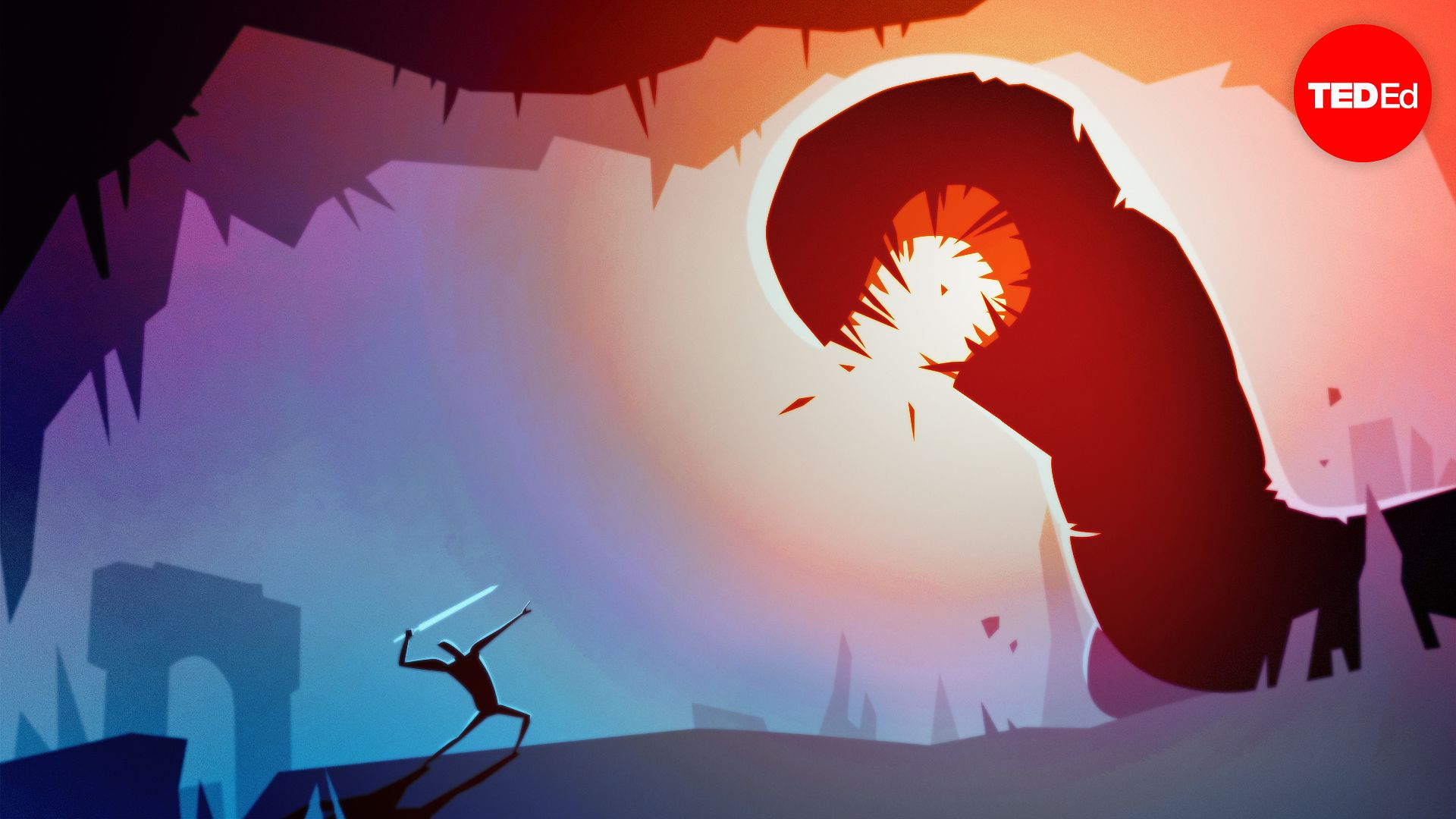
TED is supported by ads and partners 00:00
What makes a hero?
- storytelling
- personal growth
- Account Settings
- The Disney Bundle
- Parks & Travel
- Walt Disney World
- Disney Cruise Line
- All Parks & Travel
- Movies Anywhere
- Disney Movie Insiders
- 20th Century Studios
- Accessories
- Disney News
- Disney on Broadway
- Disney on Ice
- Disney Live!
- Walt Disney World Resort
- Disneyland Resort
- Aulani - A Disney Resort and Spa
- Adventures by Disney
- Disney Vacation Club
- D23: The Official Disney Fan Club

- How To Draw
- Music Videos
- Shop Entertainment
Recently Added

Conflict | The Acolyte
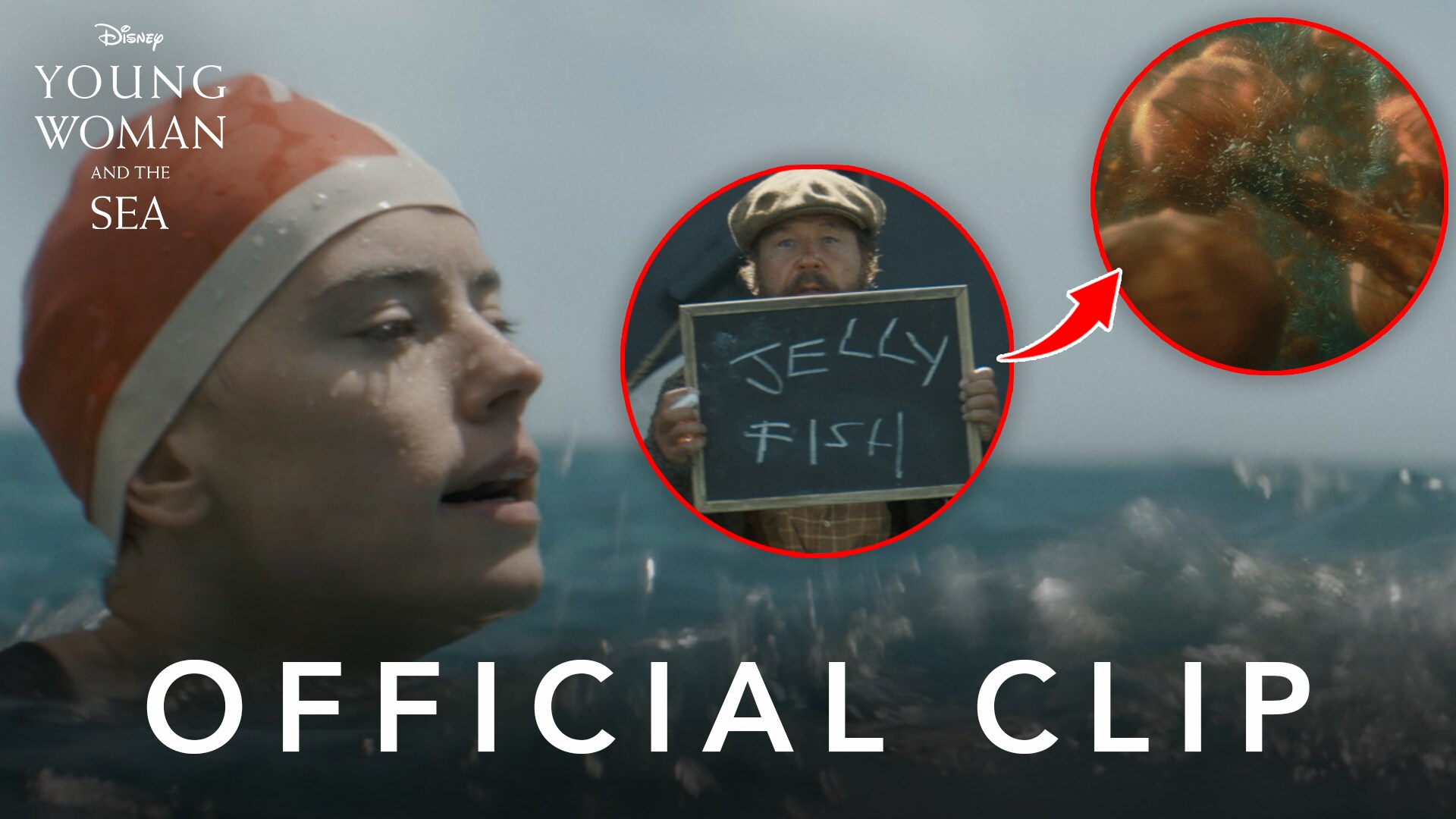
Young Woman and the Sea | Jellyfish
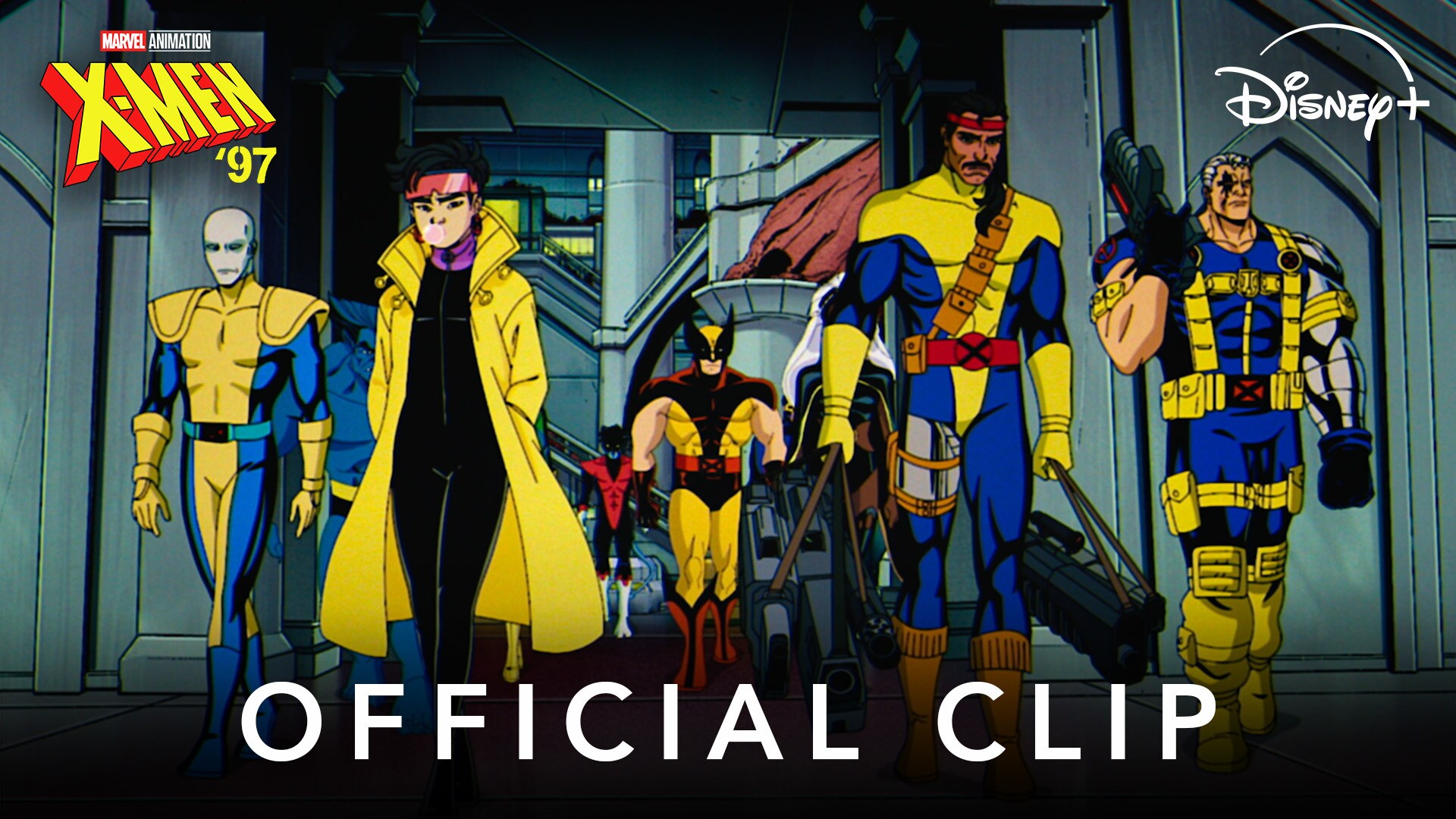
Marvel Animation's X-Men '97 | Official Clip 'Trust In The X-Men' | Disney+
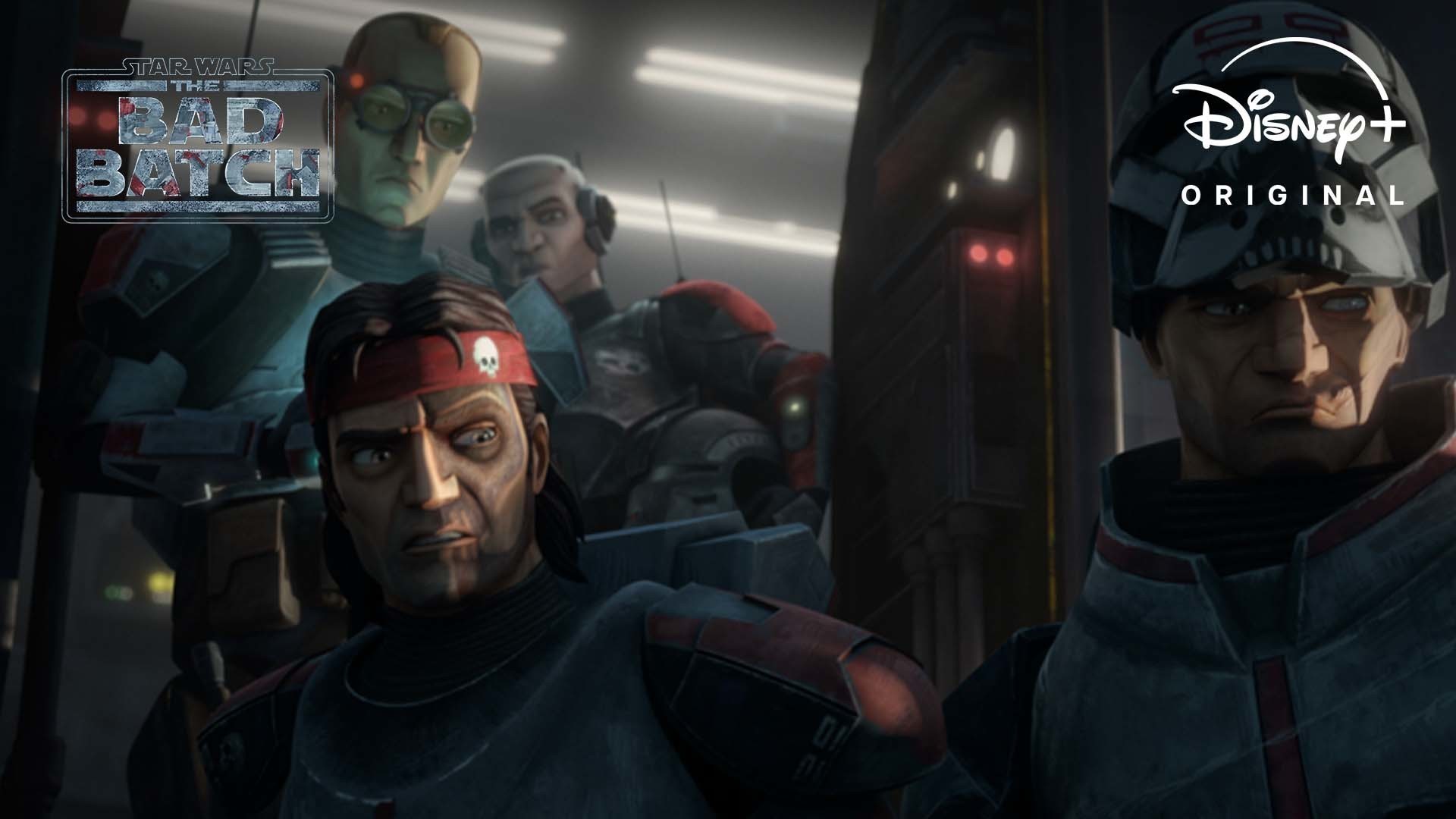
Star Wars: The Bad Batch | All Episodes Now Available | Disney+
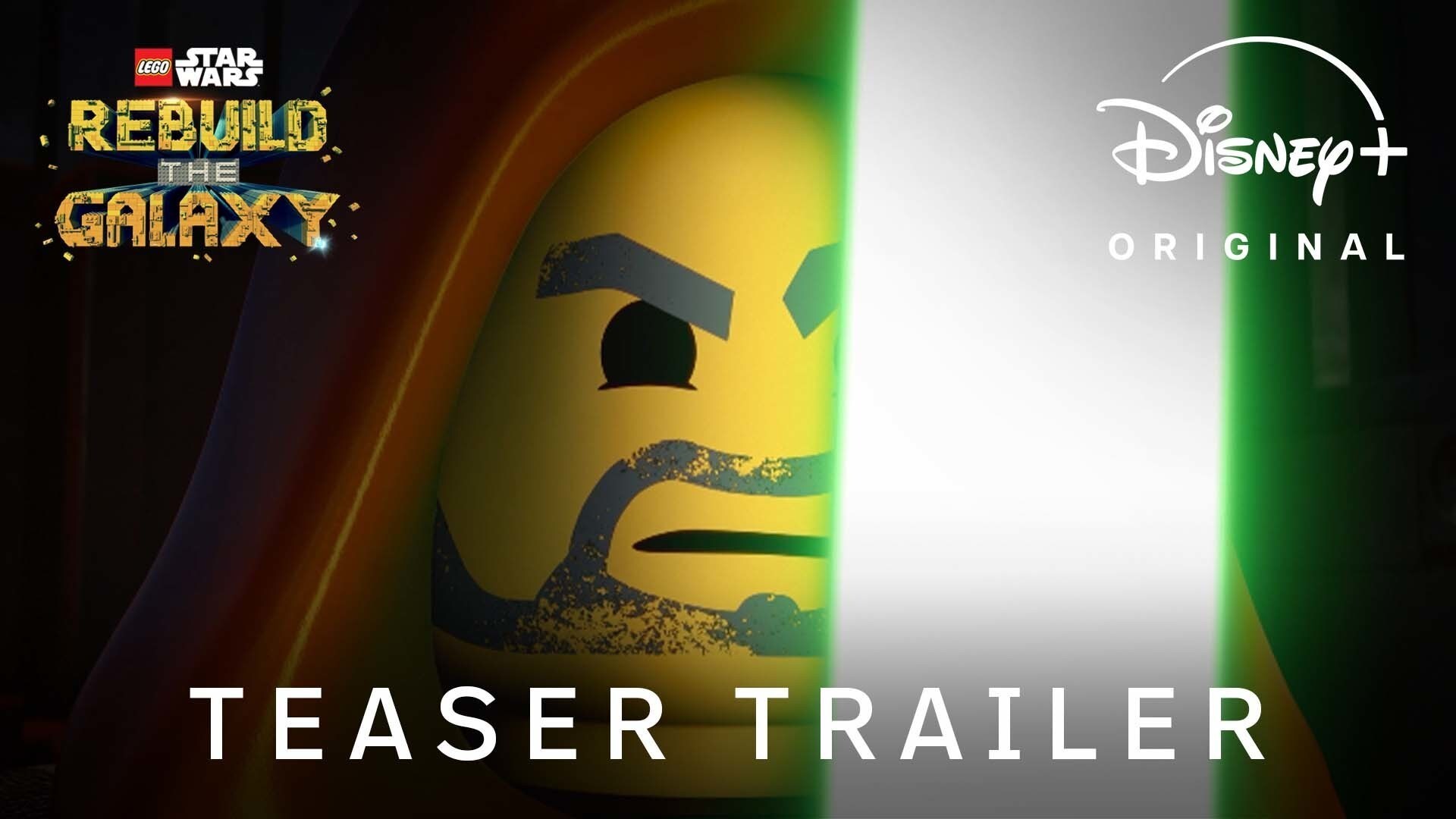
Teaser Trailer | LEGO® Star Wars: Rebuild the Galaxy
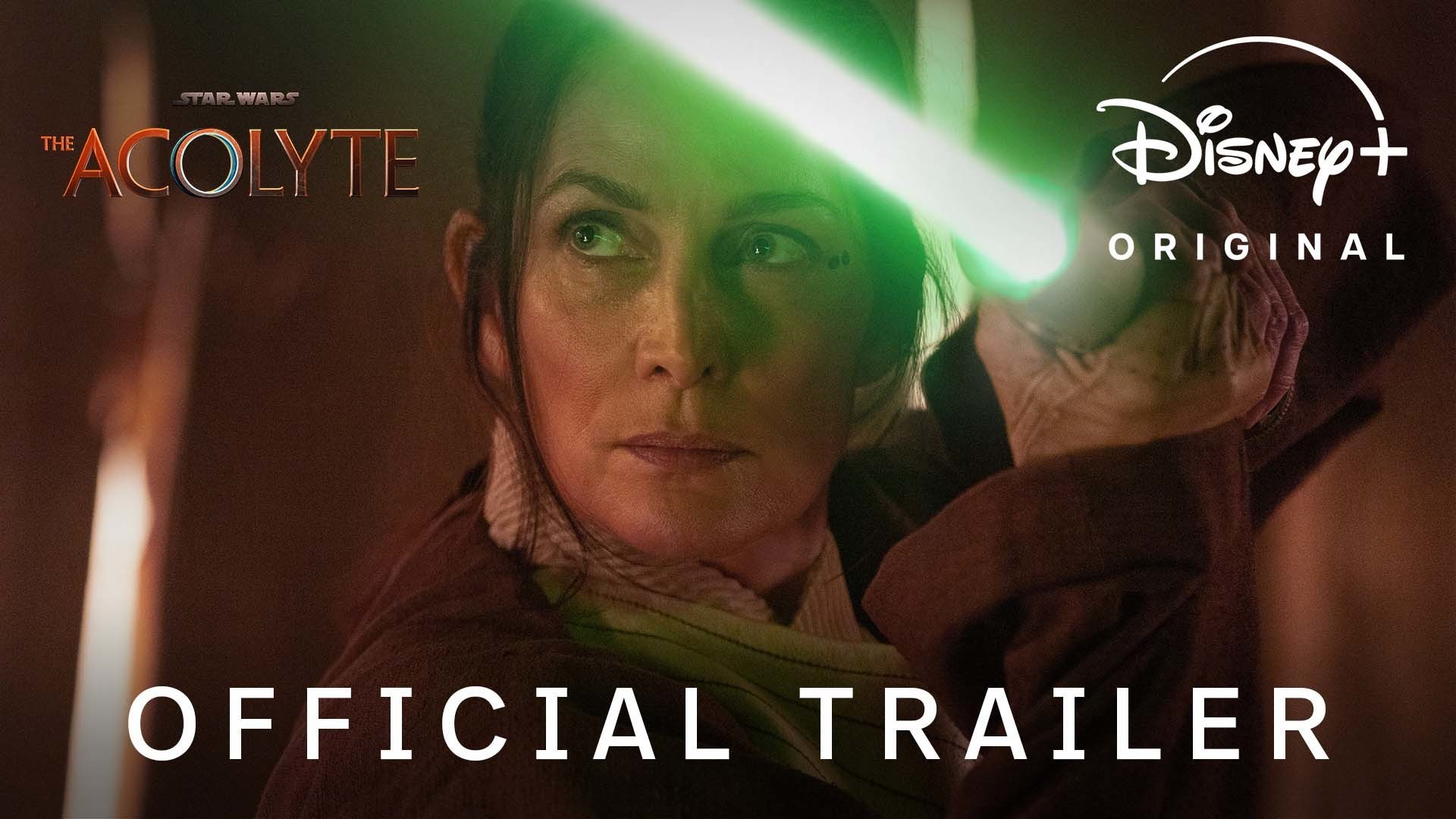
Official Trailer | The Acolyte
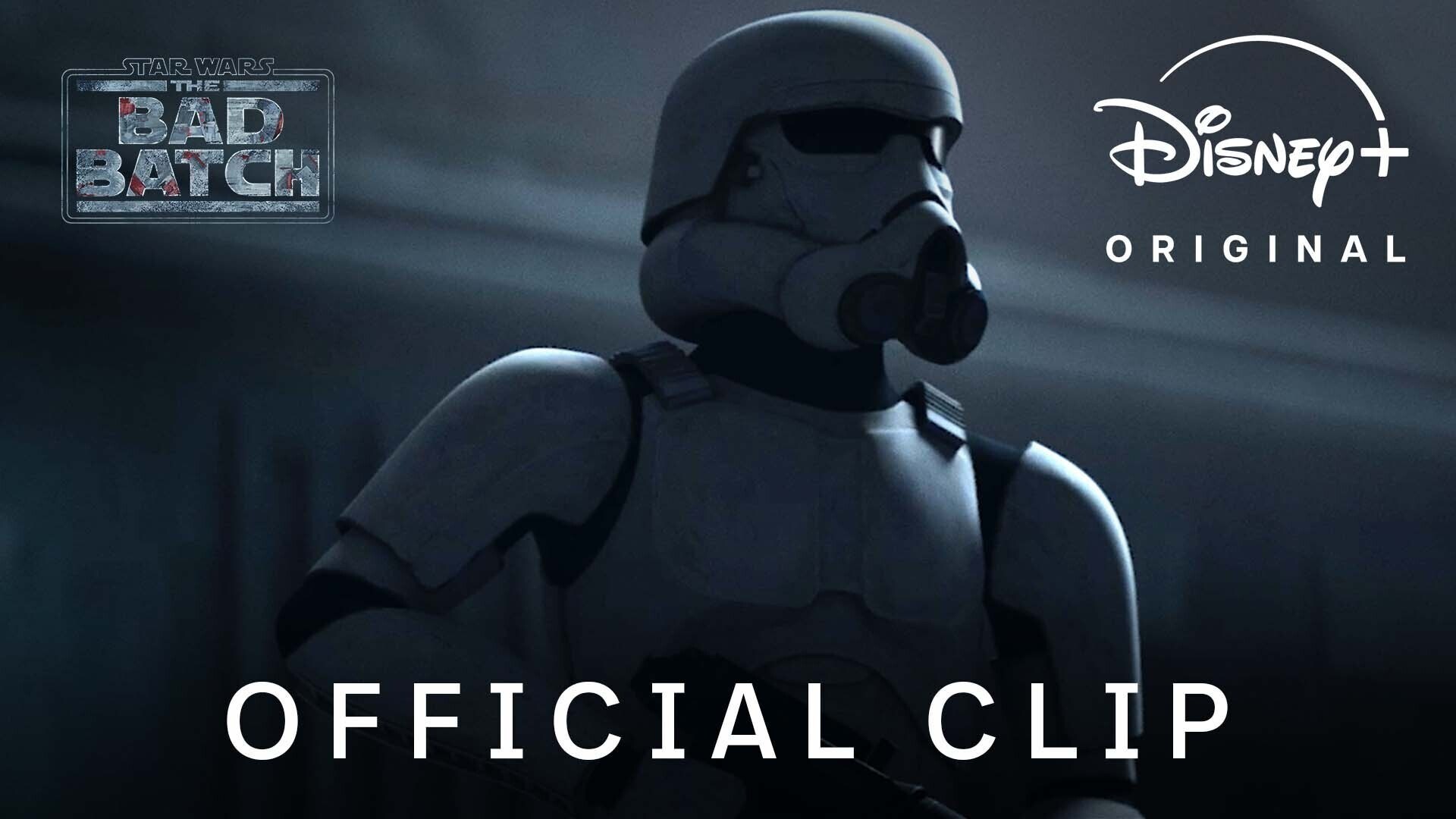
"The Cavalry Has Arrived" | Star Wars: The Bad Batch
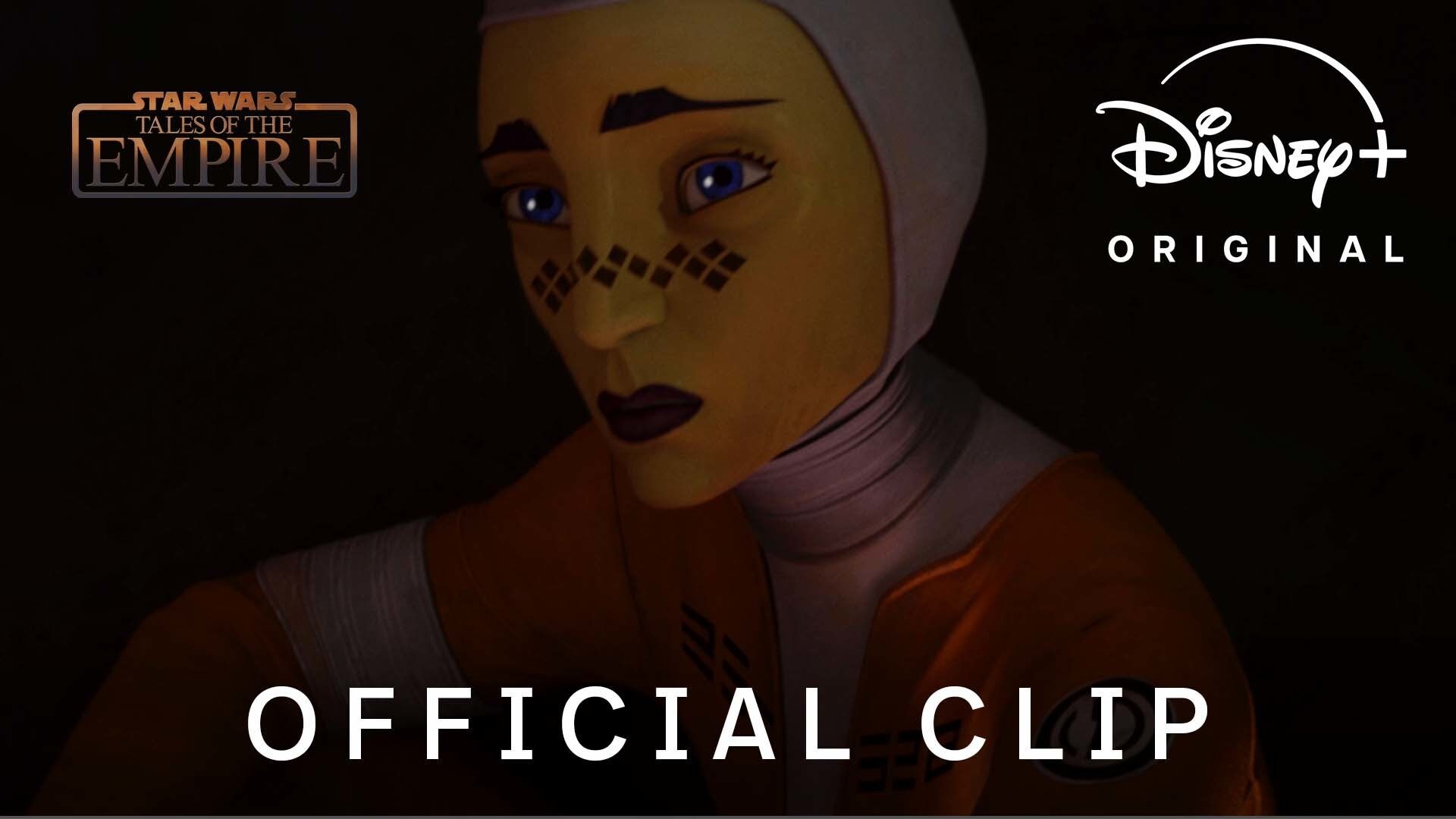
"Opportunity" | Tales of the Empire
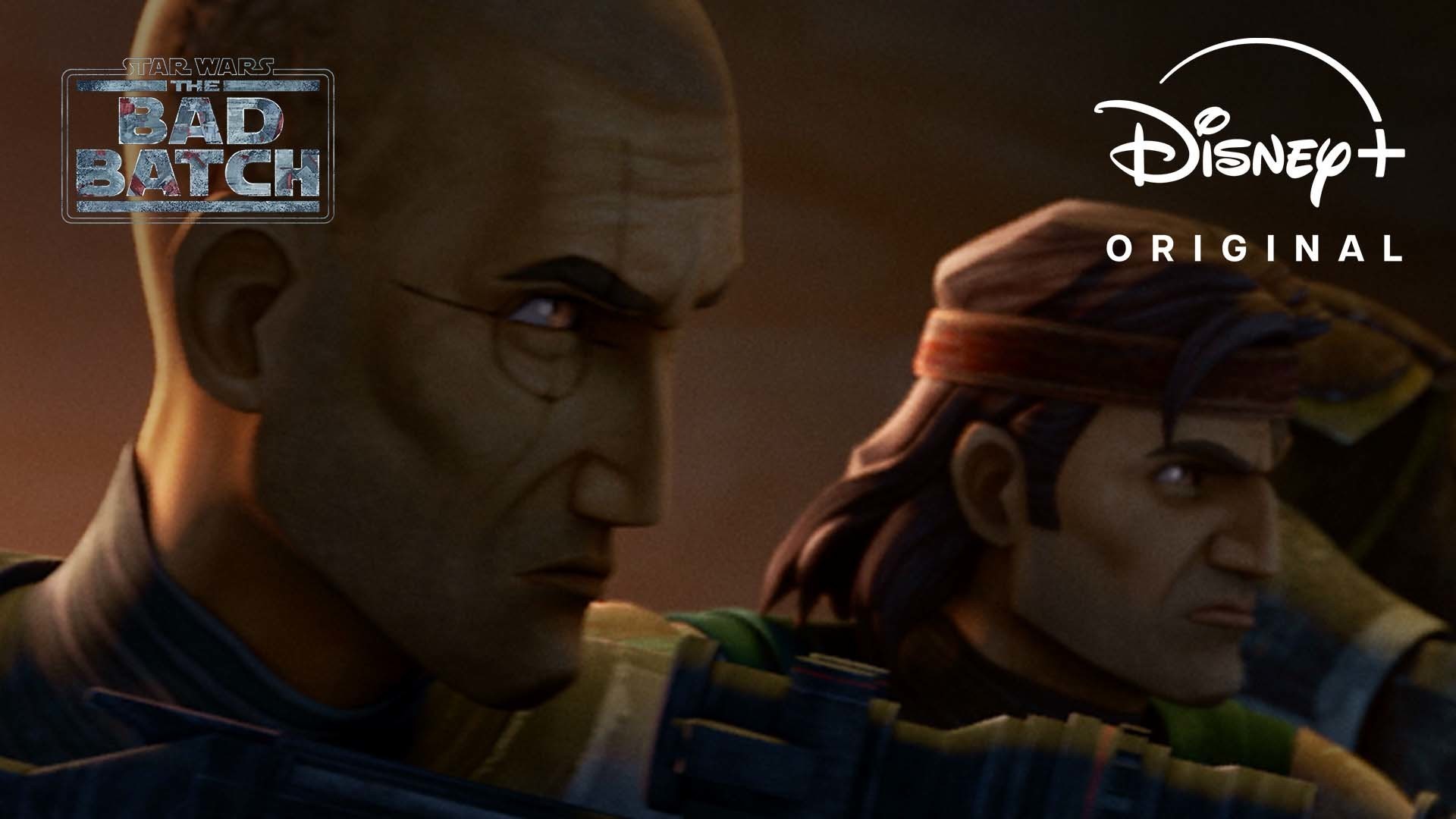
Star Wars: The Bad Batch Final Season | Complete | Disney+
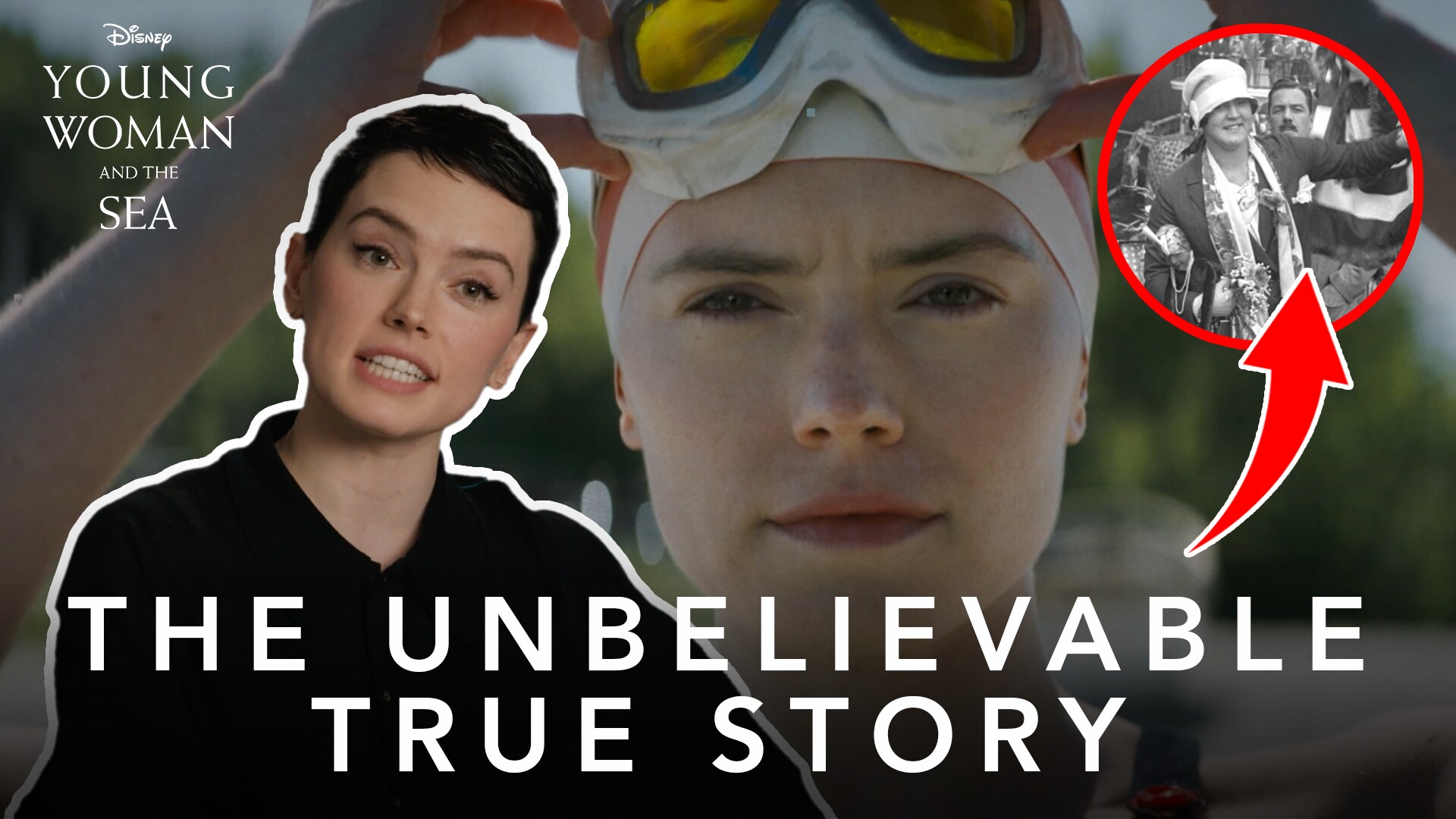
Young Woman and the Sea | The Unbelievable True Story
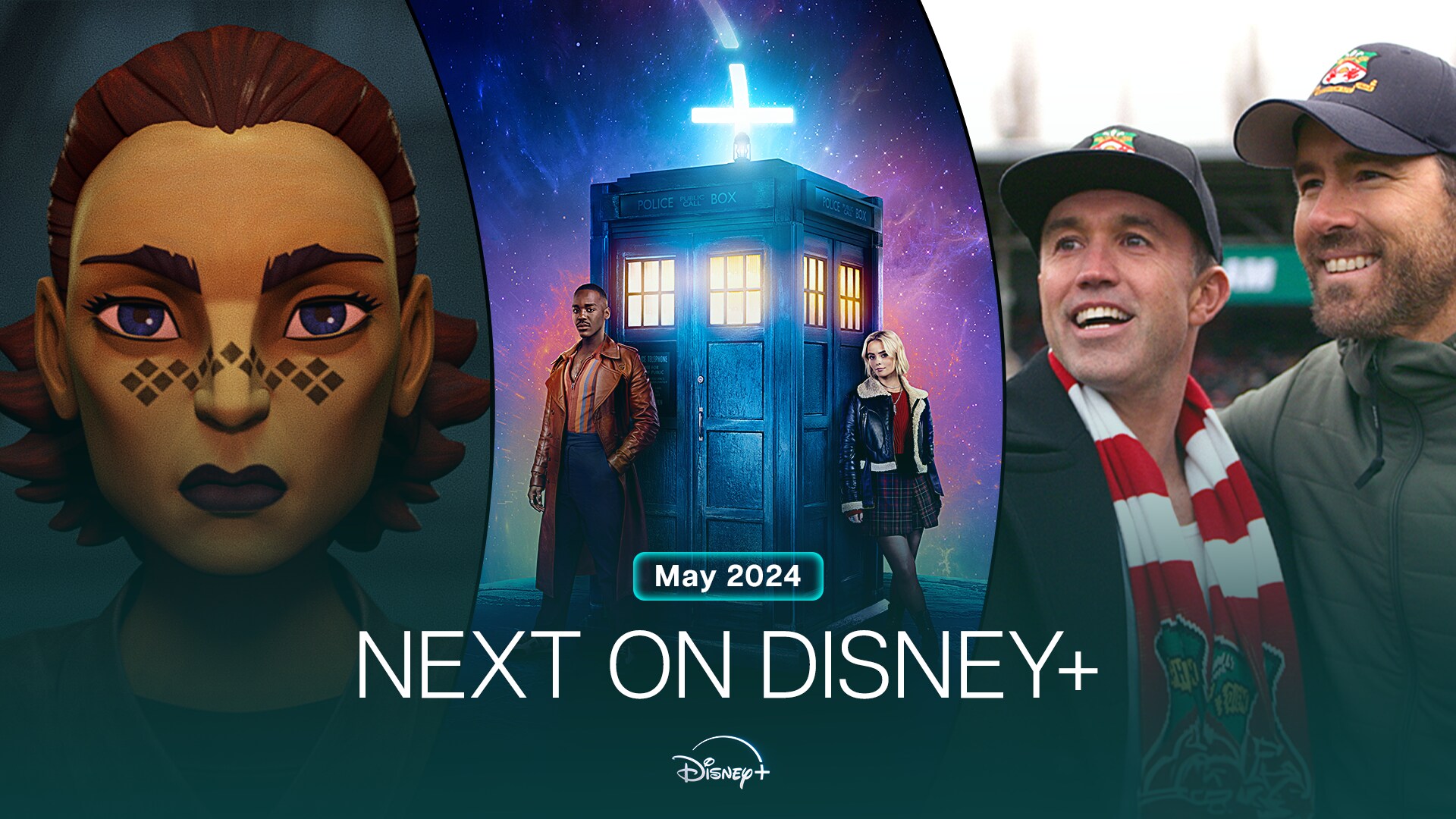
Next On Disney+ | May 2024
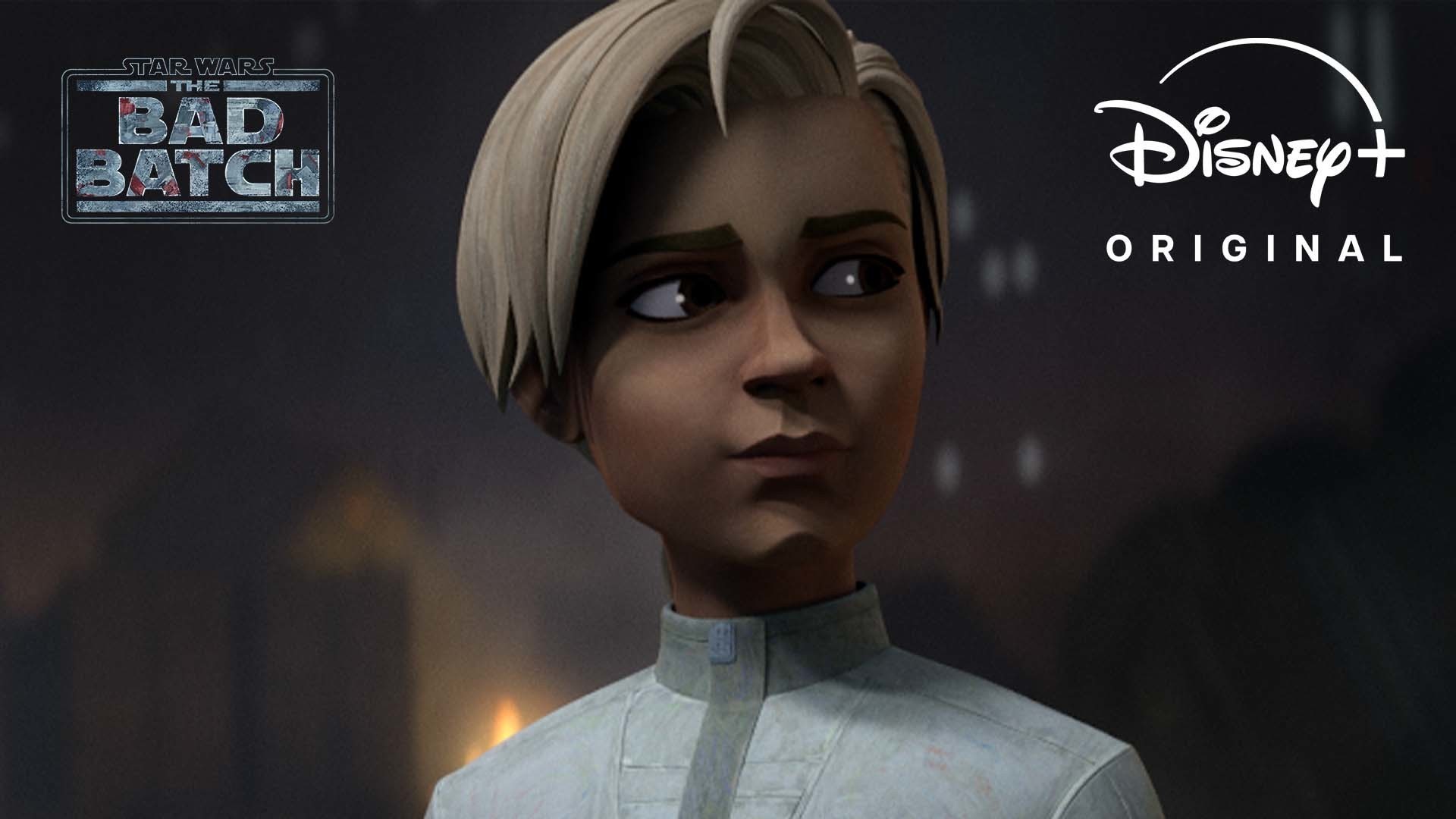
Star Wars: The Bad Batch Final Season | Series Finale Now Available
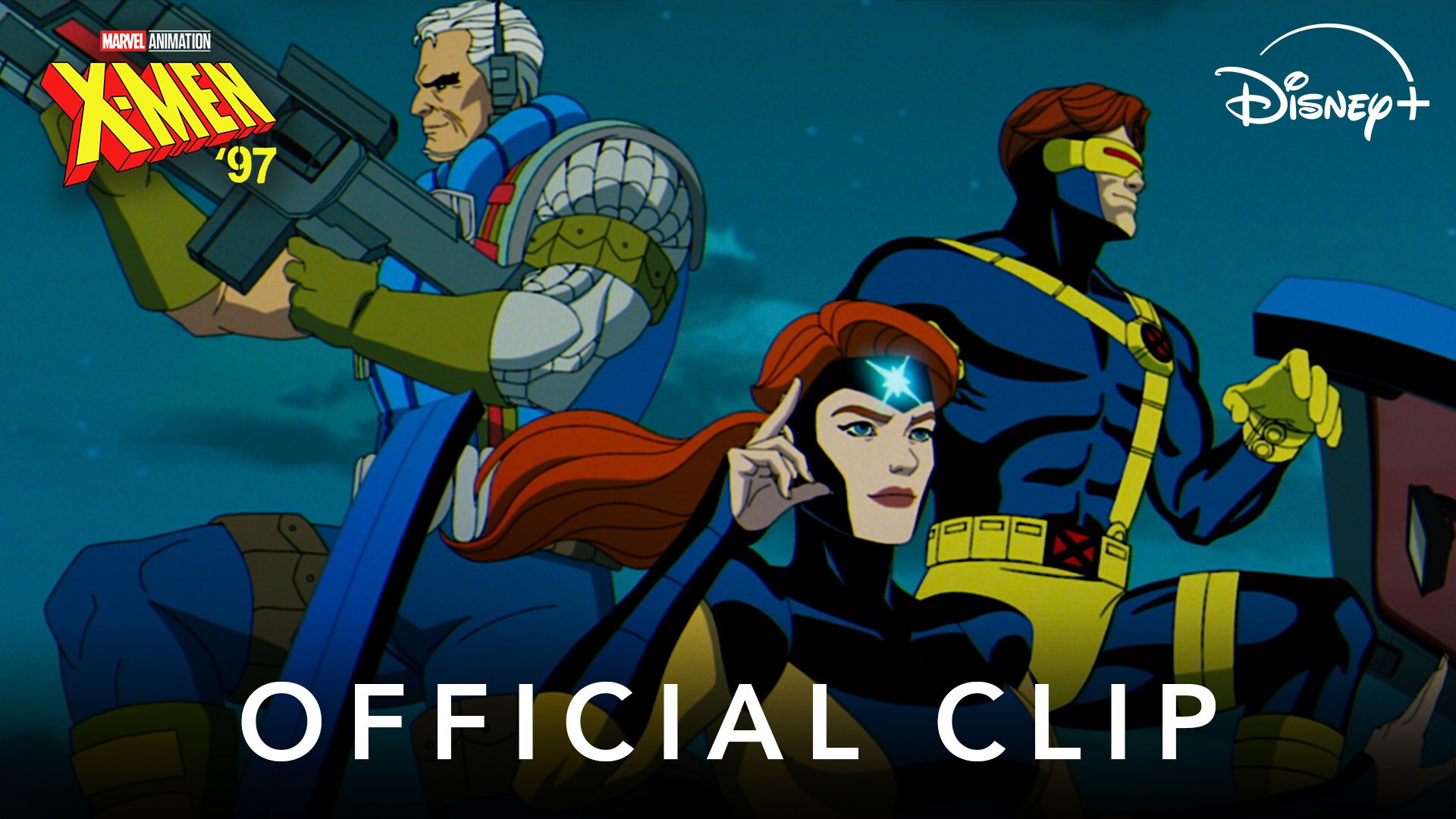
Marvel Animation's X-Men '97 | Official Clip 'Summers Family Road Trip' | Disney+
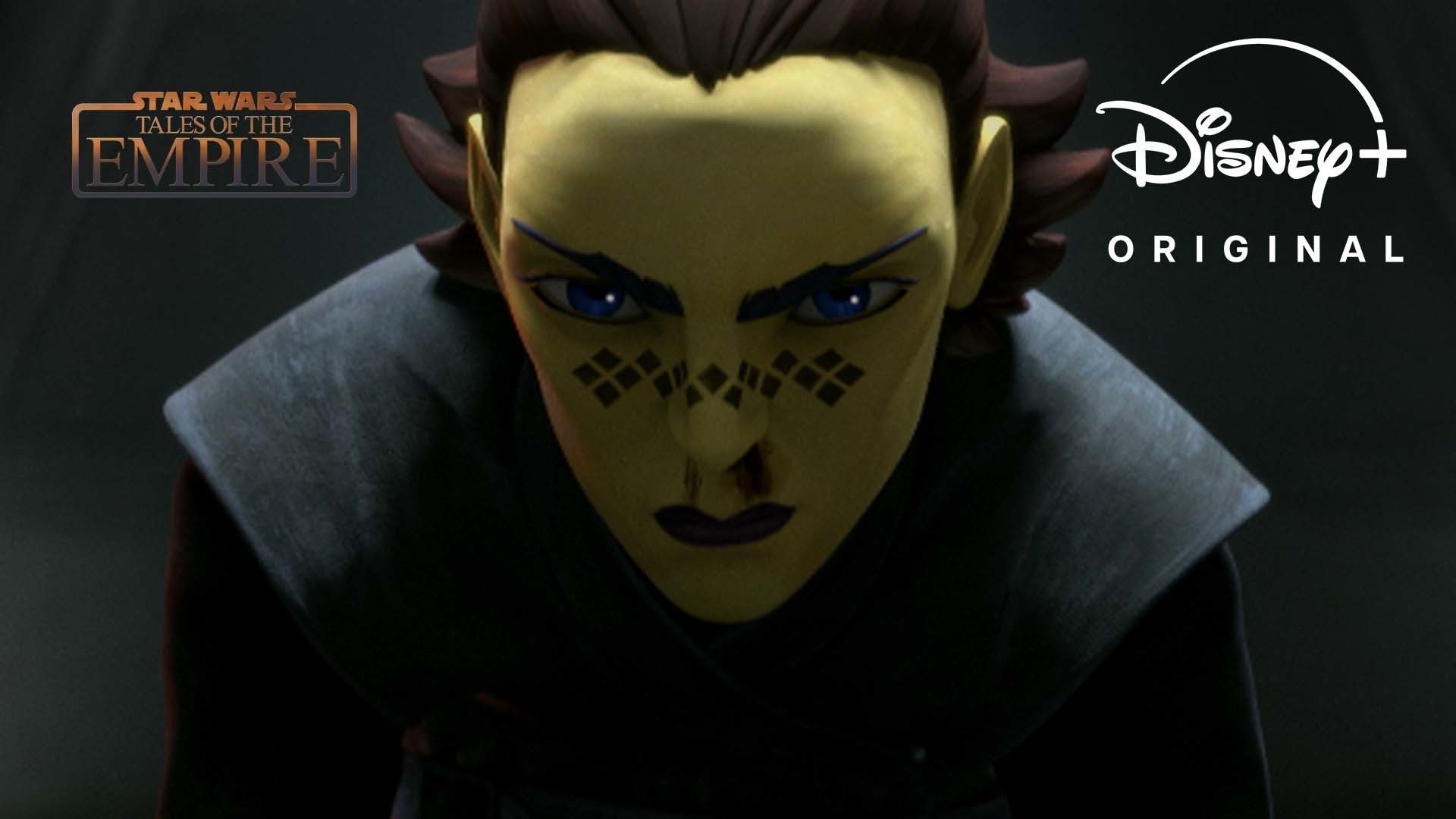
Revenge | Tales of the Empire
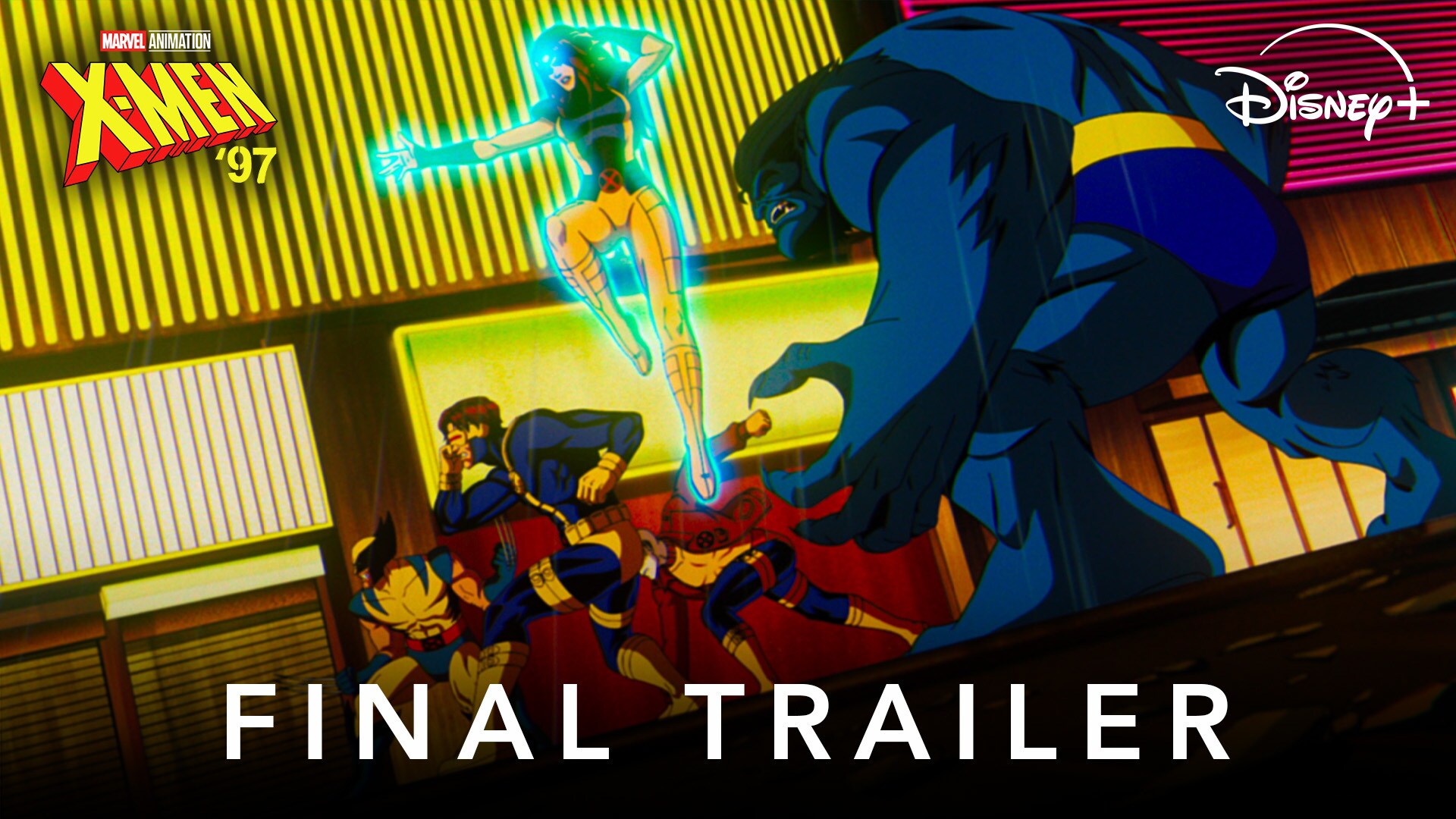
Marvel Animation's X-Men '97 | Final Trailer | Disney+
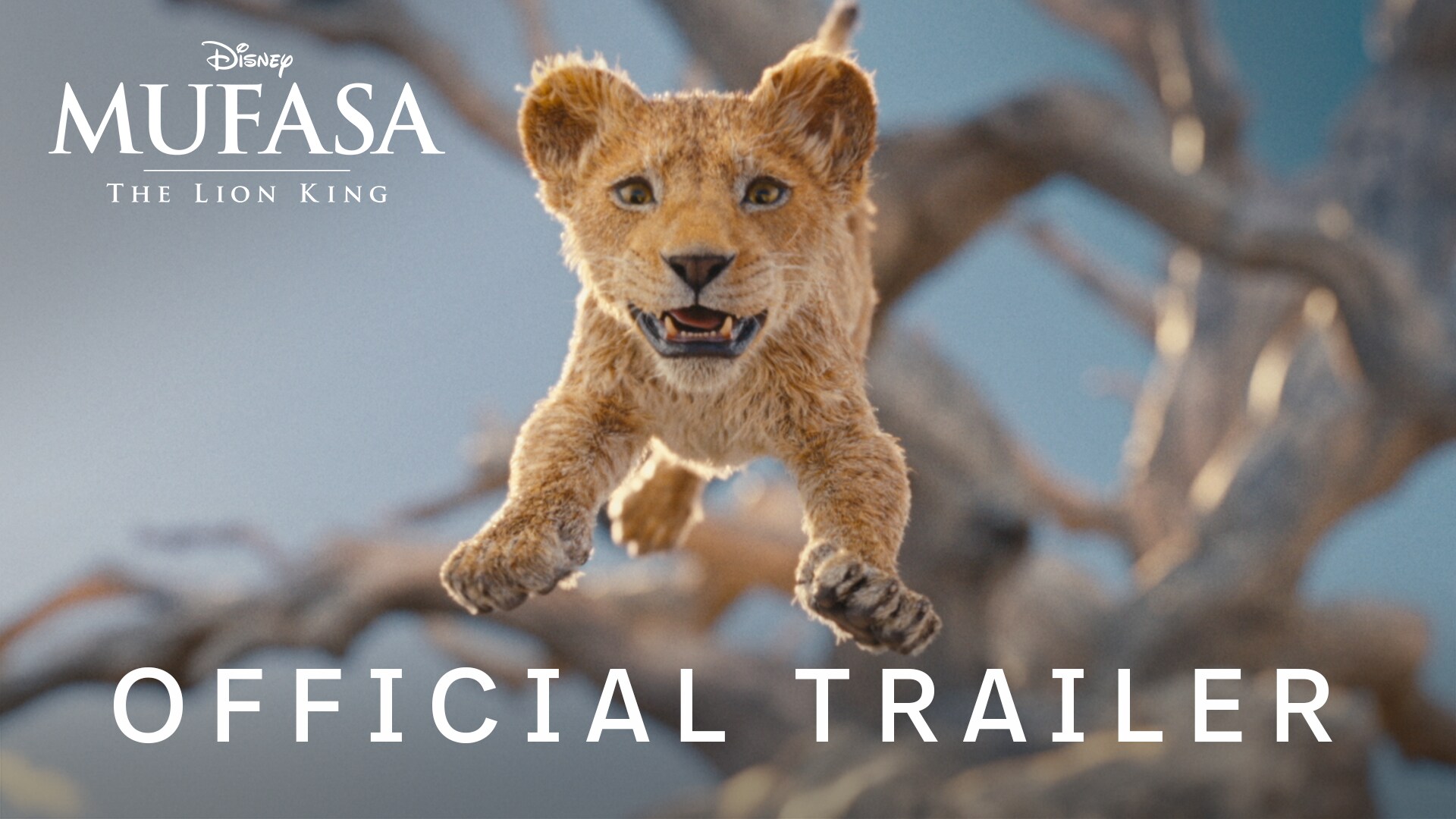
Mufasa: The Lion King | Teaser Trailer
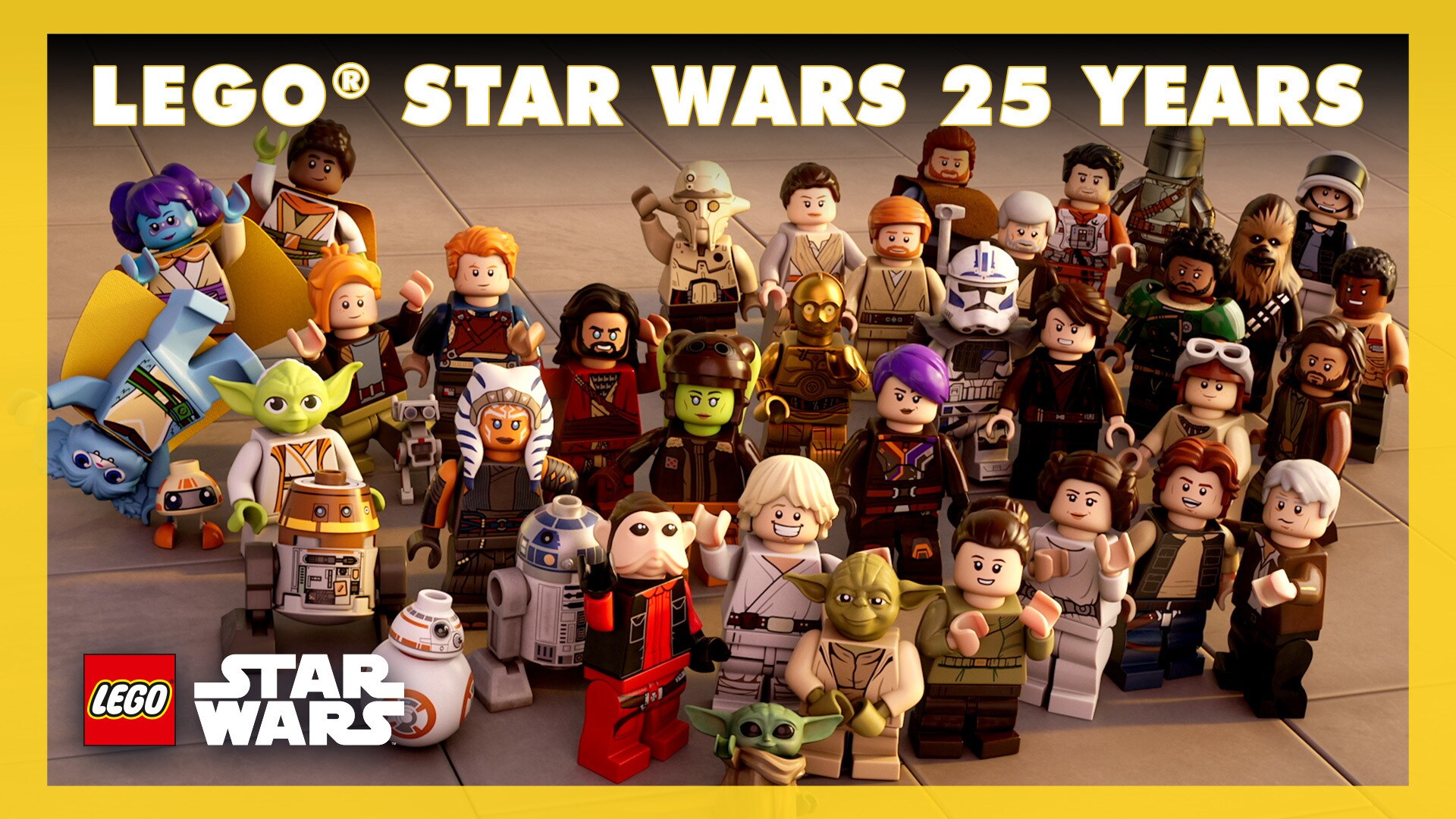
LEGO Star Wars - 25 Years | LEGO Star Wars: Celebrate the Season
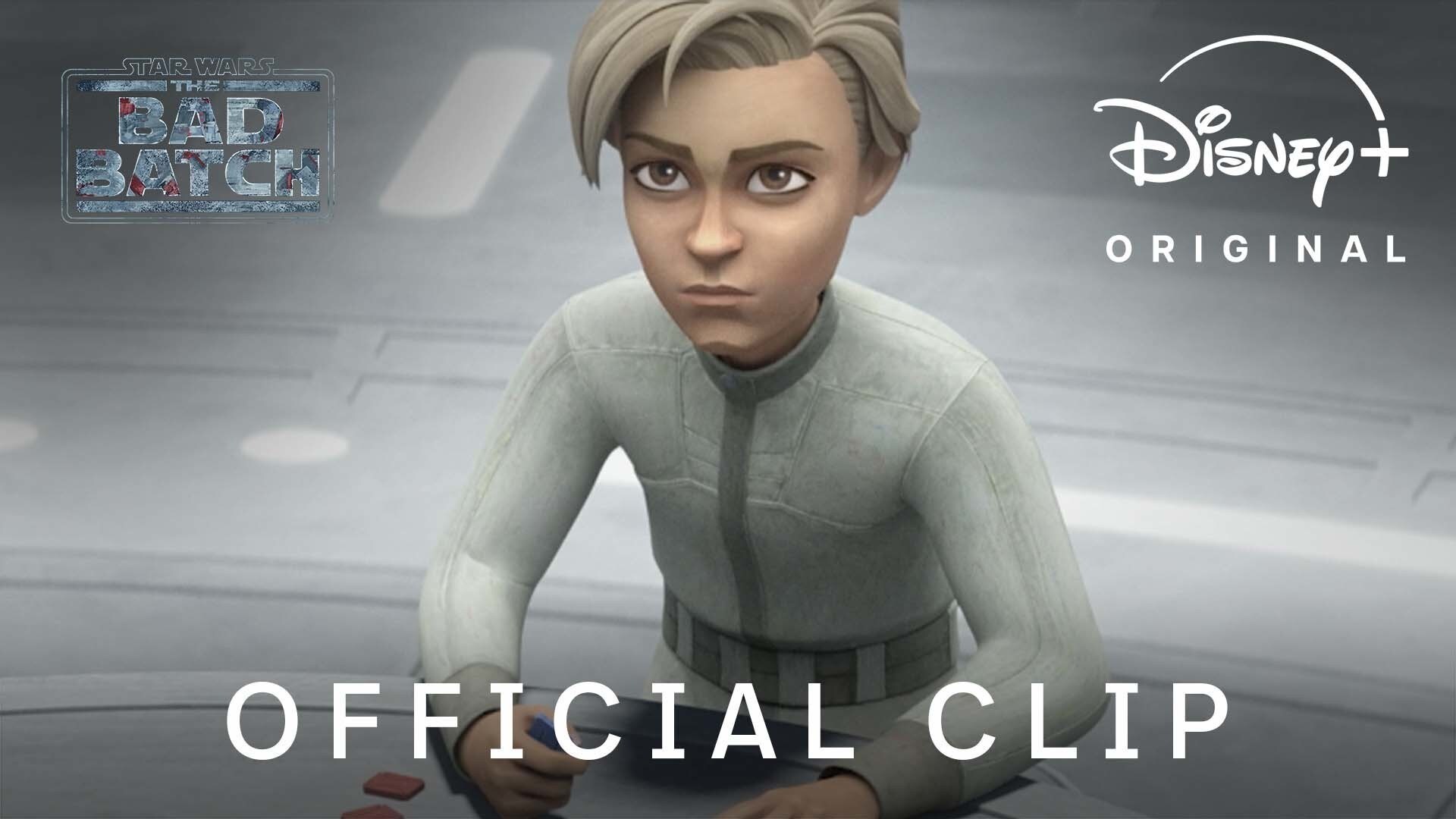
Star Wars: The Bad Batch Final Season | 'Flash Strike' Official Clip

"Stay Back" | Tales of the Empire
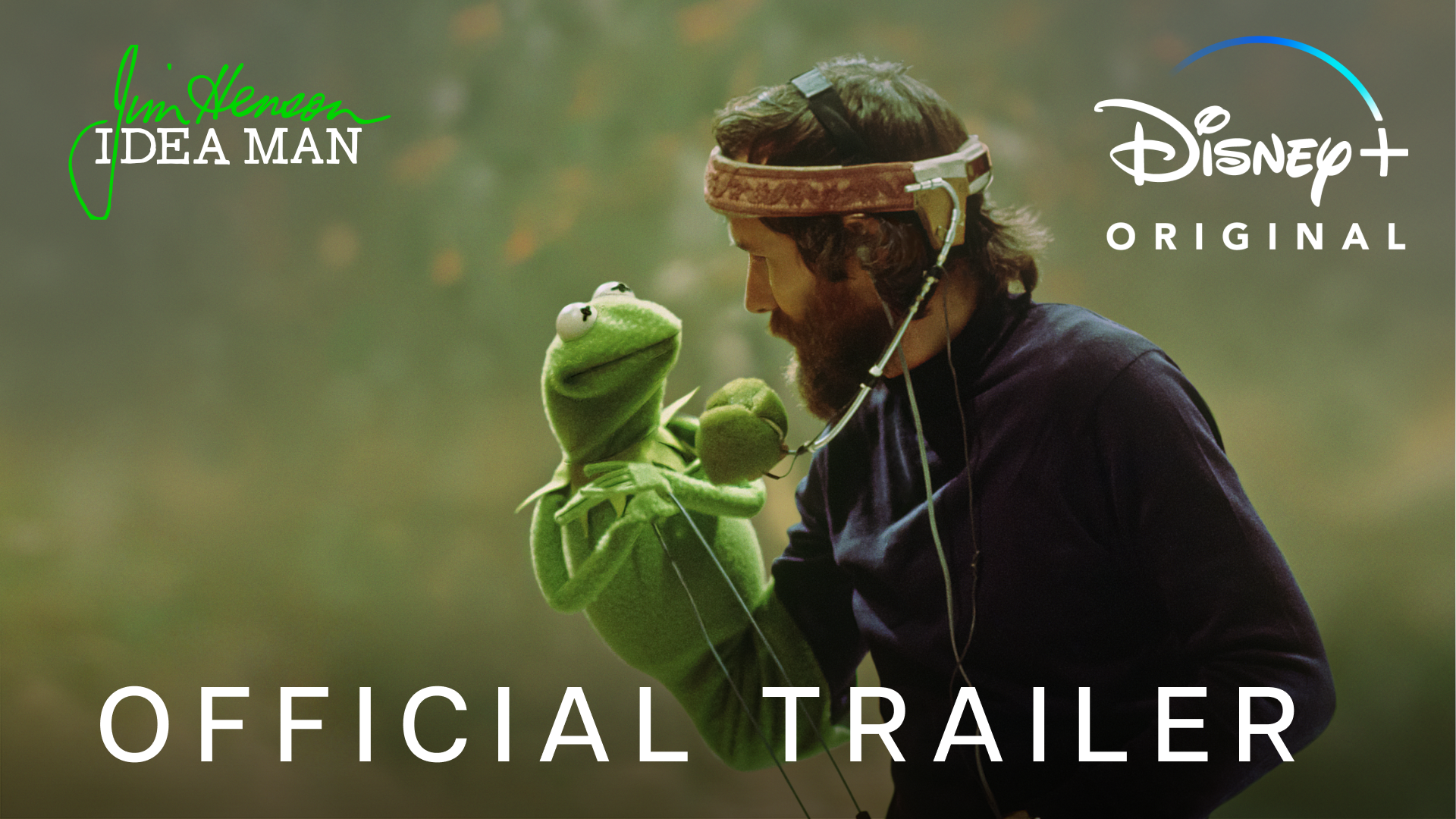
Jim Henson Idea Man | Official Trailer | Disney+
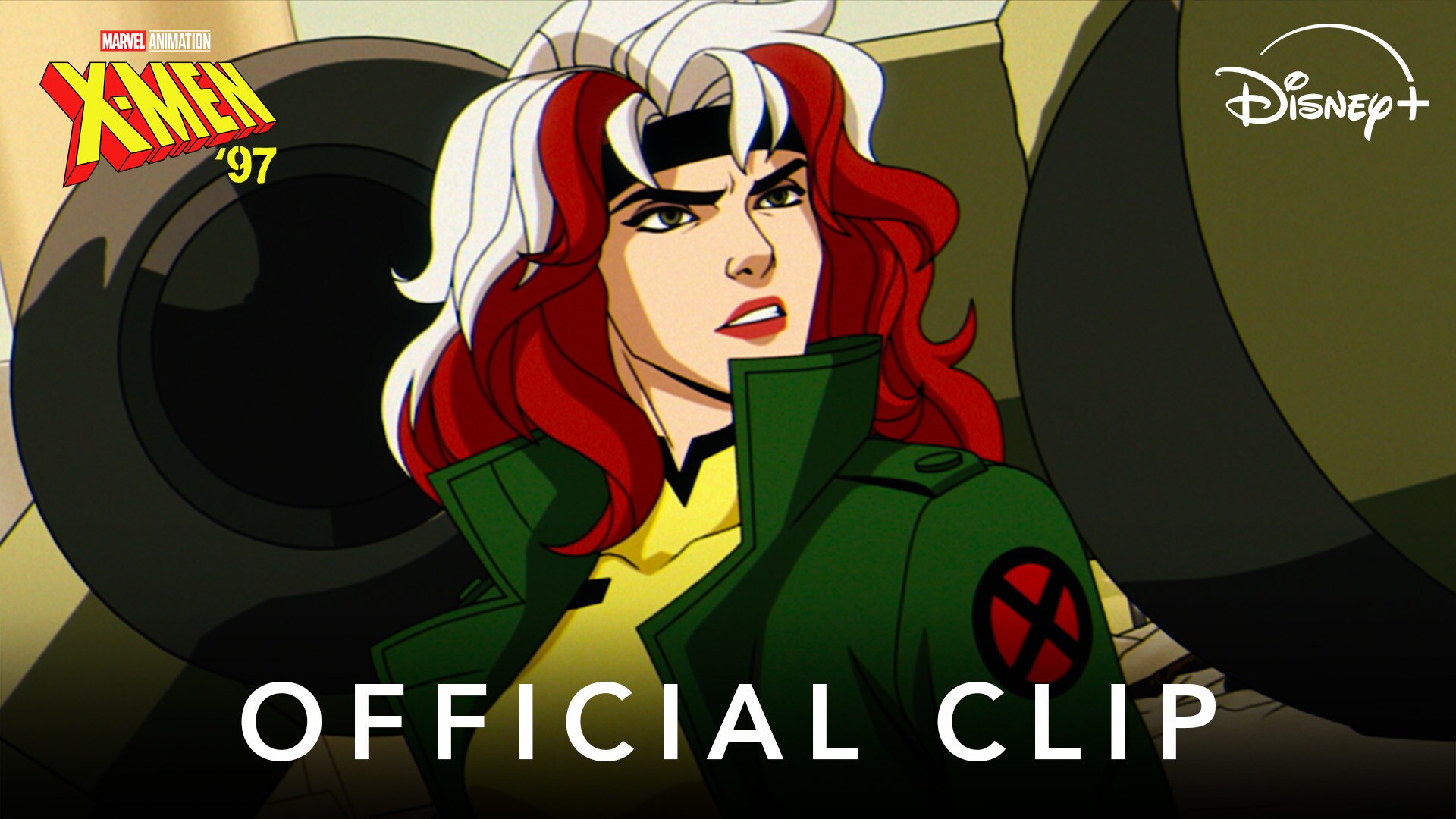
Marvel Animation's X-Men '97 | Official Clip ‘Rogue Goes Rogue’ | Disney+
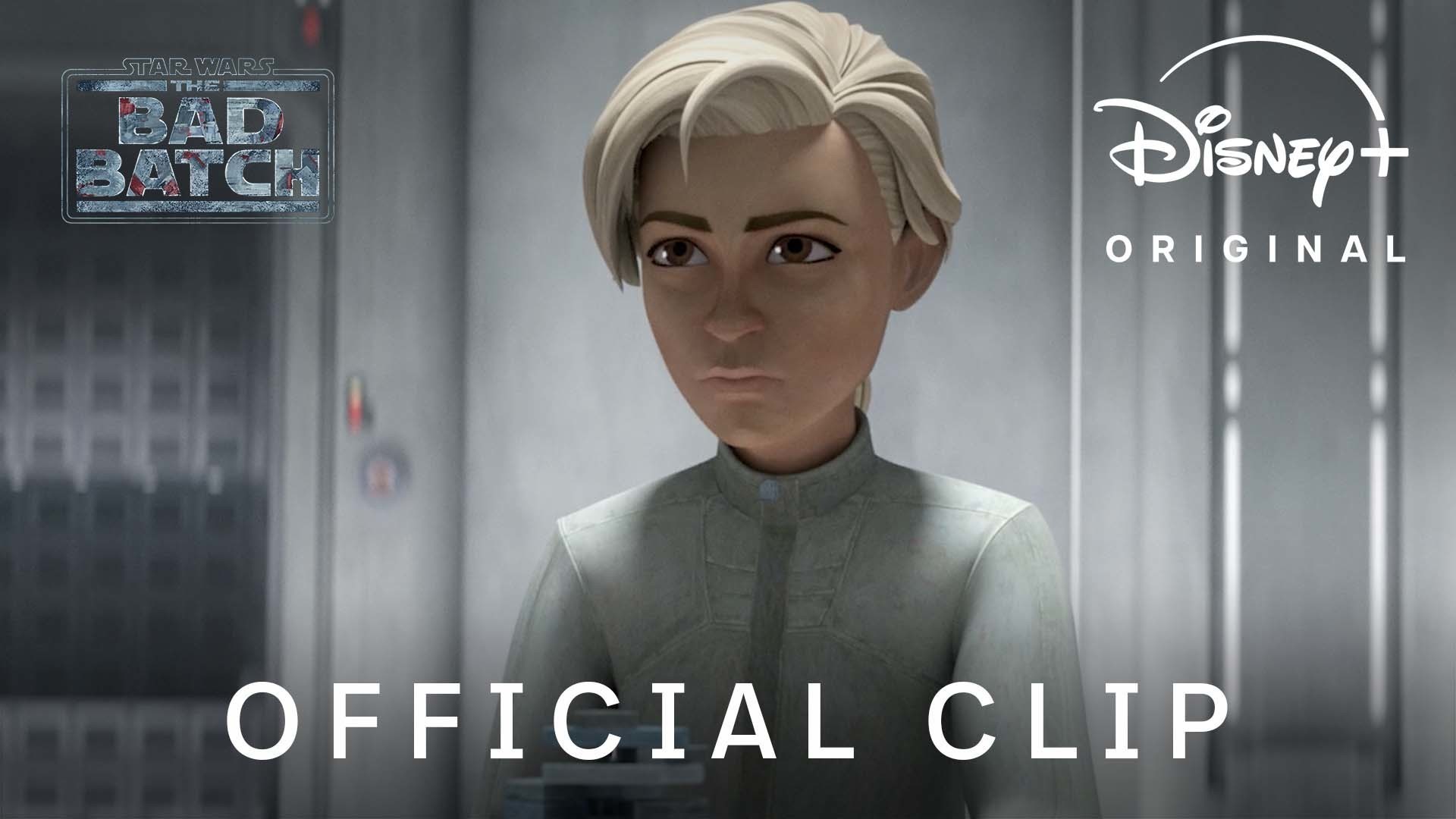
Star Wars: The Bad Batch Final Season | 'Into the Breach' Official Clip
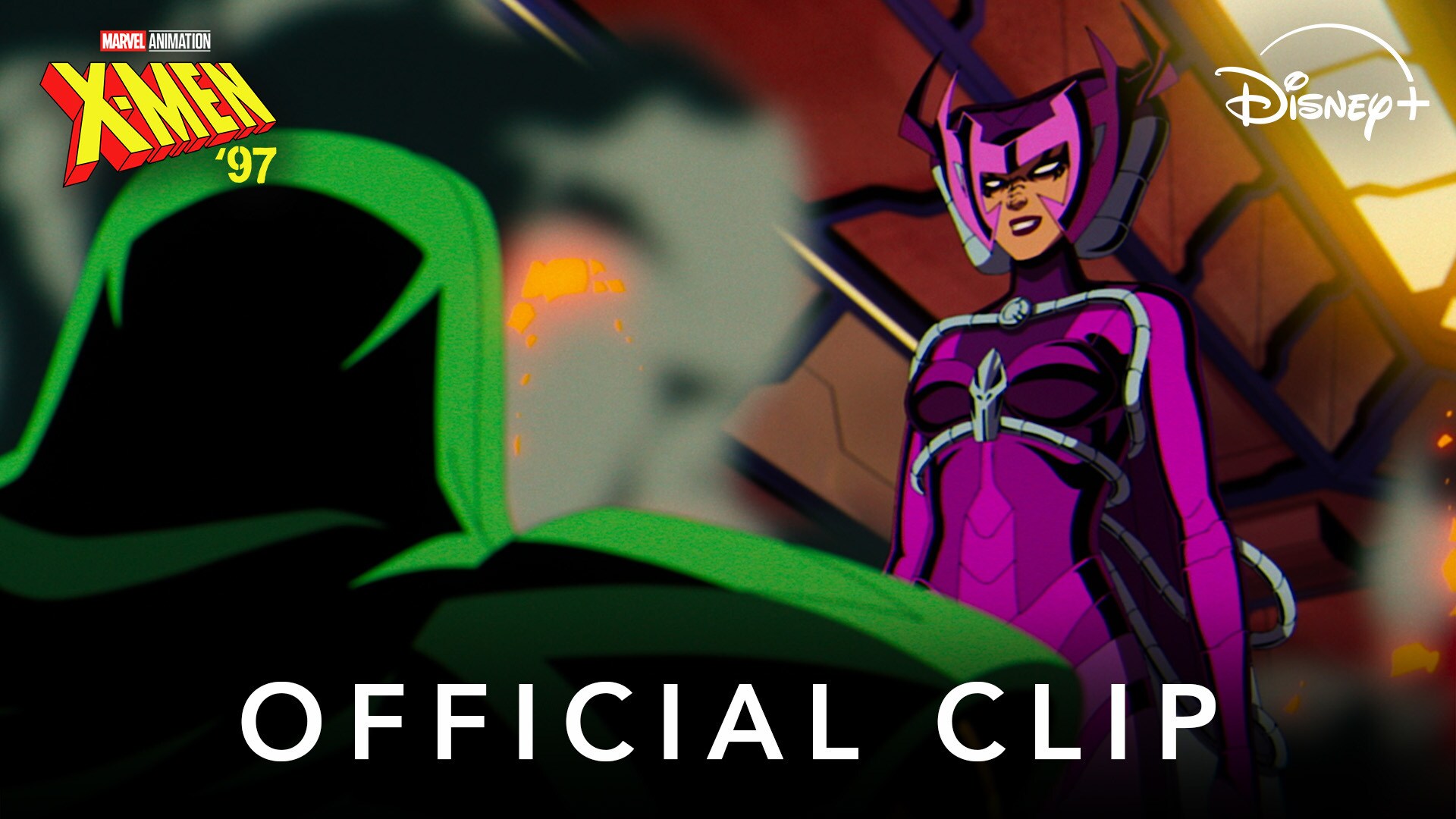
Marvel Animation's X-Men '97 | Official Clip ‘Deathbird and Ronan’ | Disney+
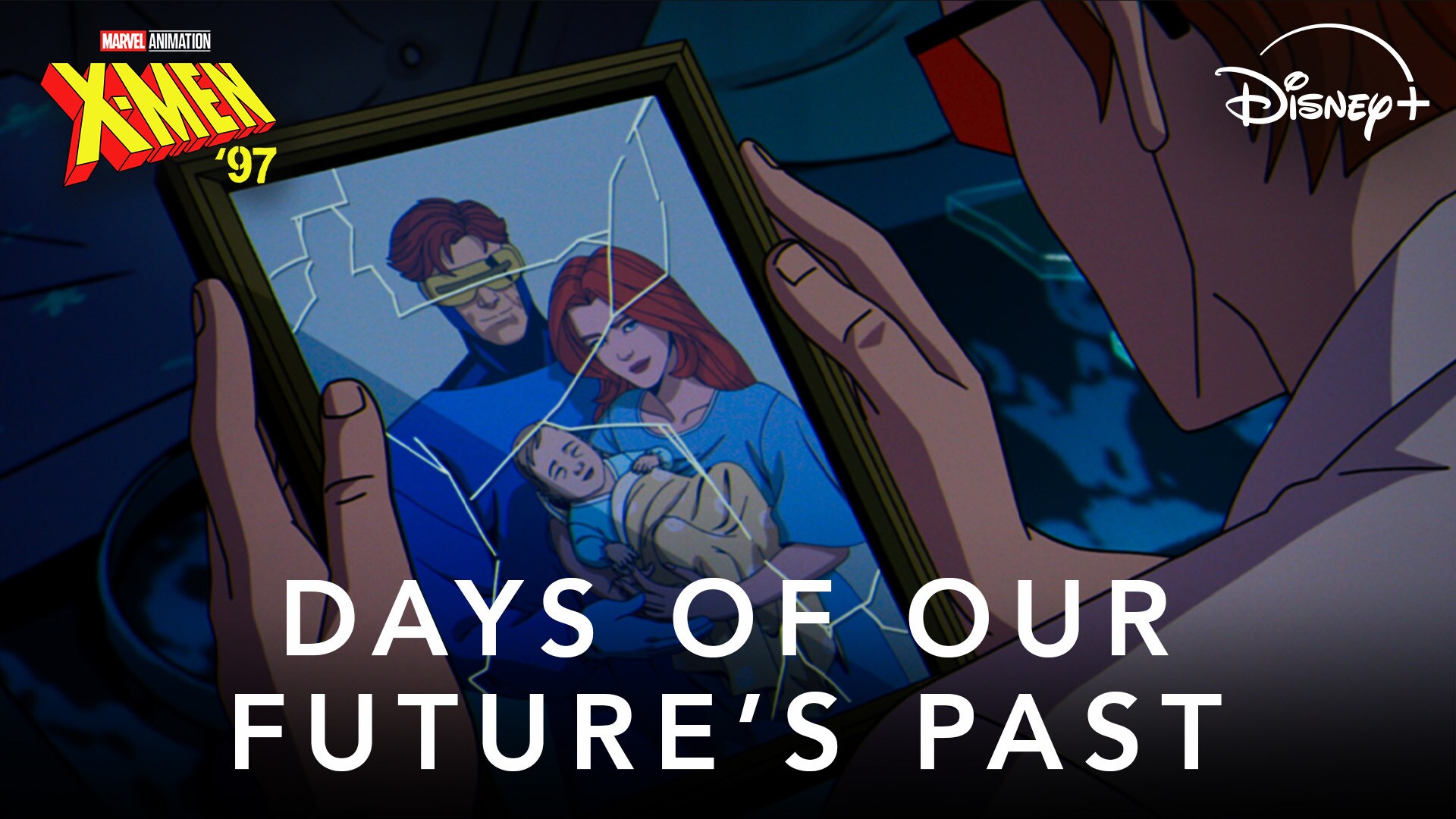
Marvel Animation's X-Men '97 | Days of Our Future’s Past | Disney+
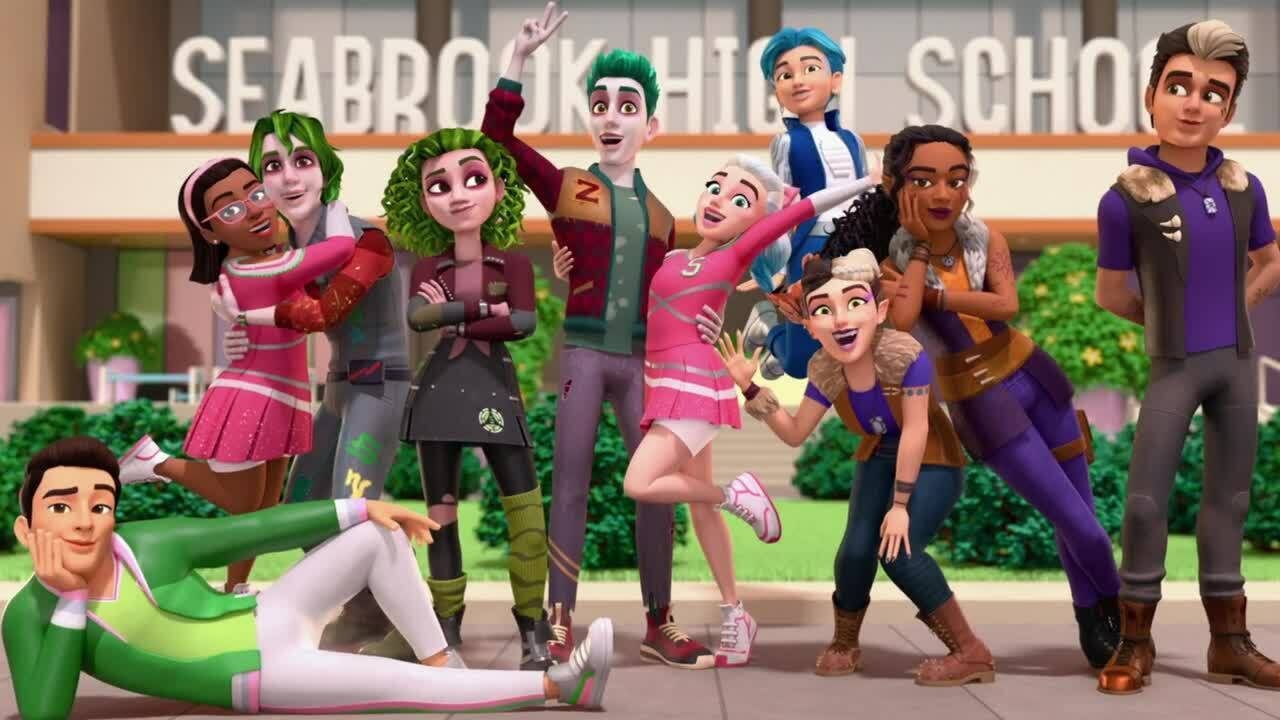
ZOMBIES: The Re-Animated Series | Teaser | Disney+

Young Woman and the Sea Official Trailer
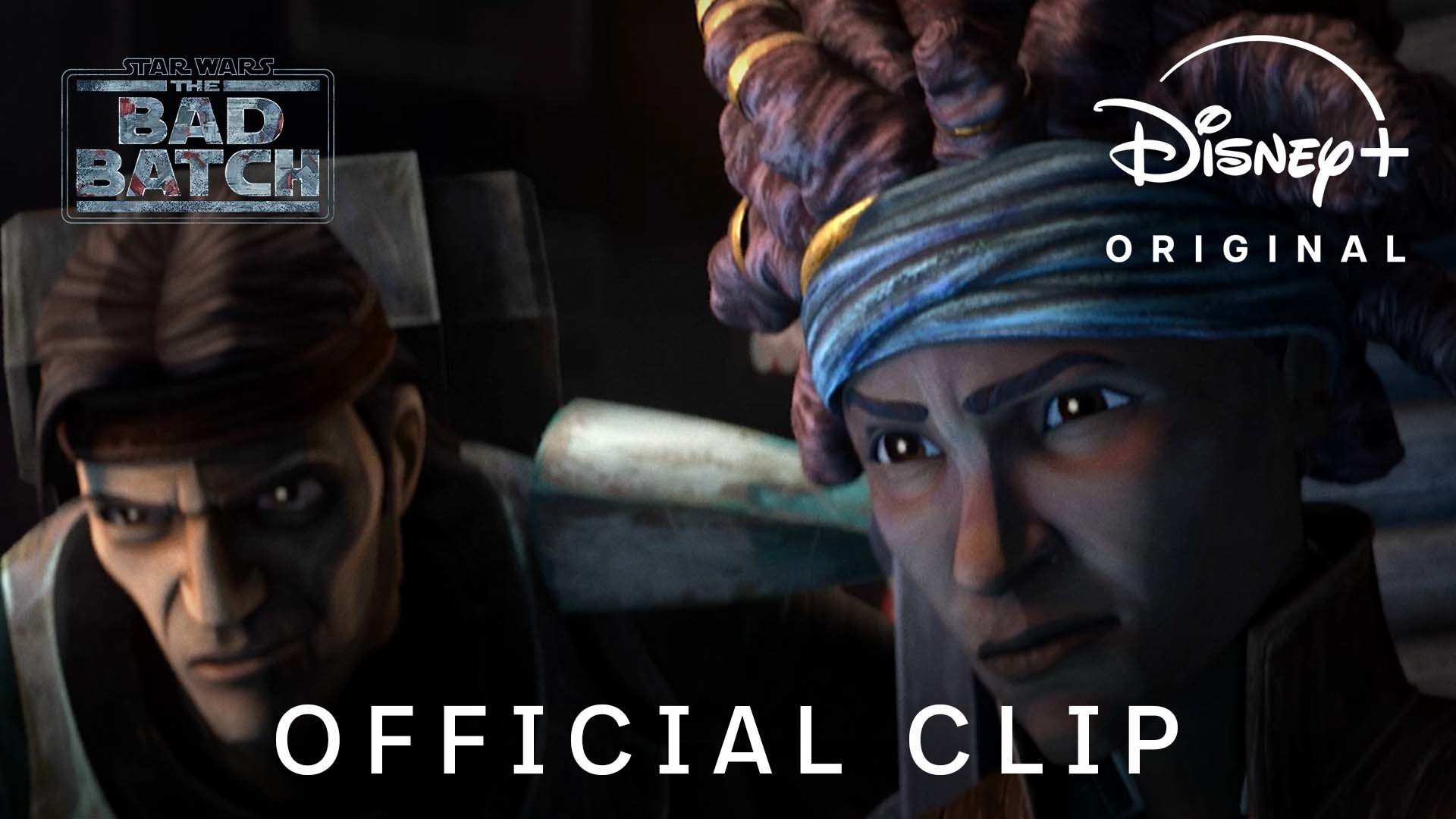
Star Wars: The Bad Batch Final Season | 'Juggernaut' Official Clip
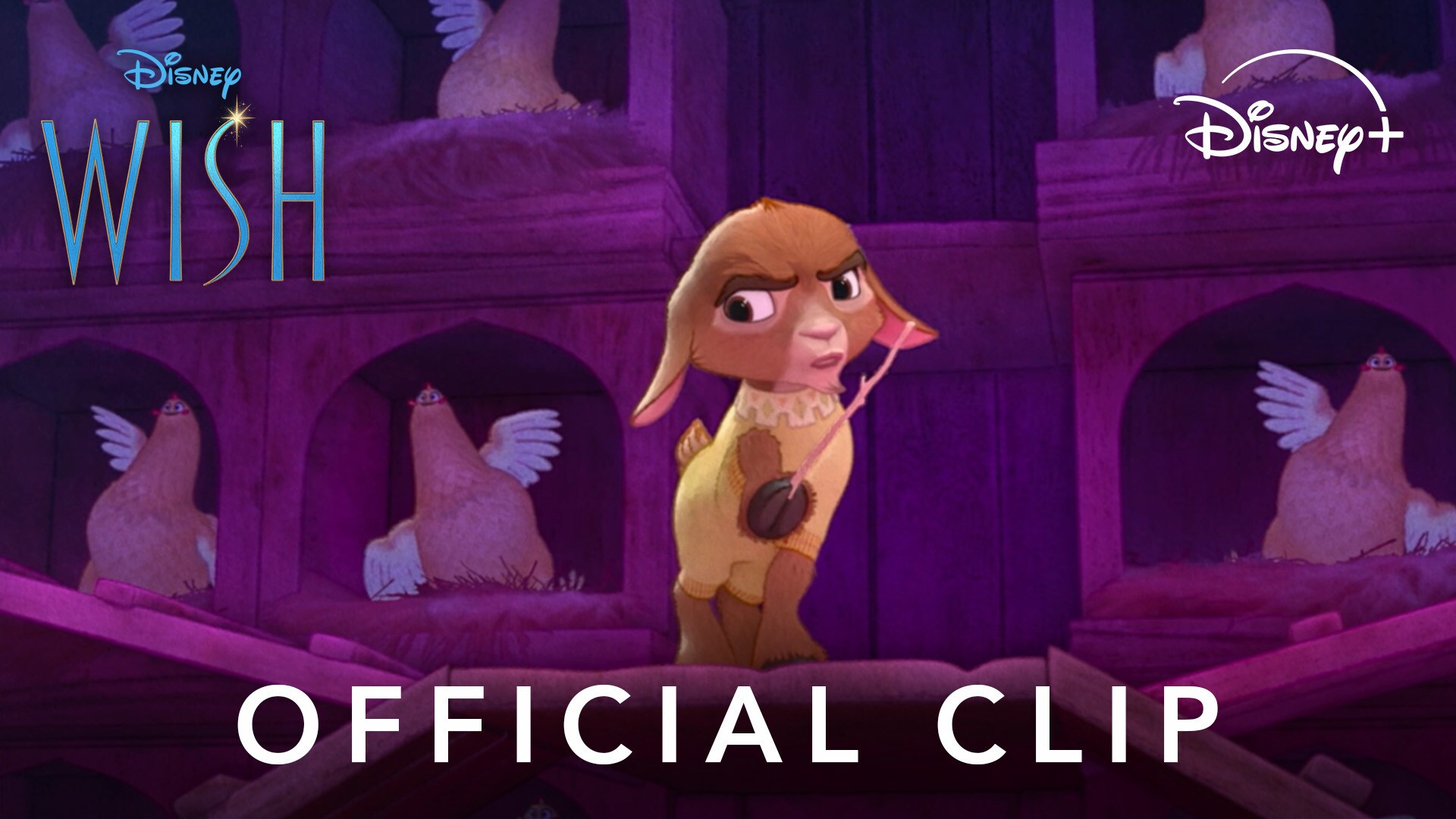
Disney's Wish | Official Clip: “What Are You Hiding?” | Disney+
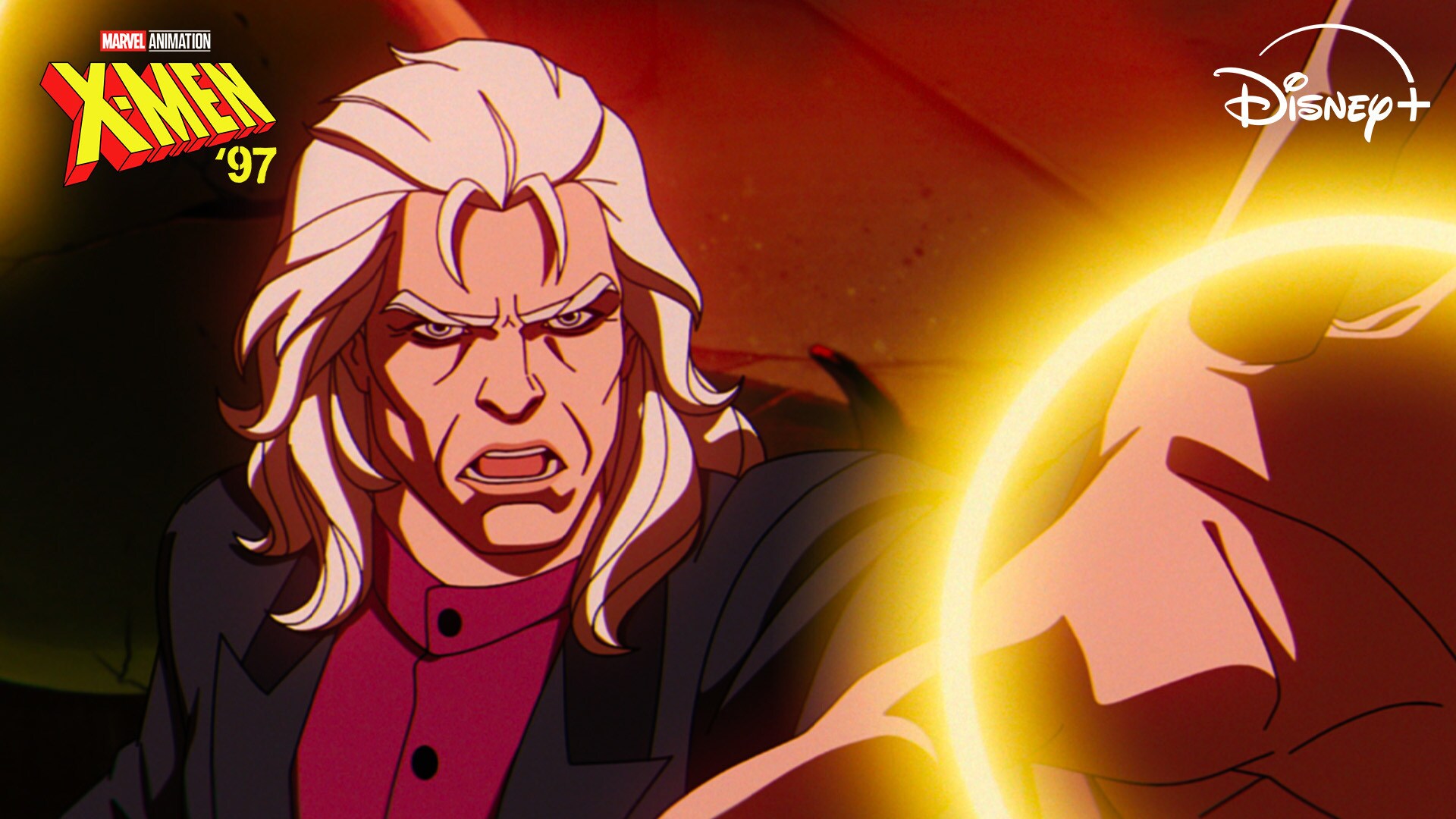
Marvel Animation's X-Men '97 | War | Disney+
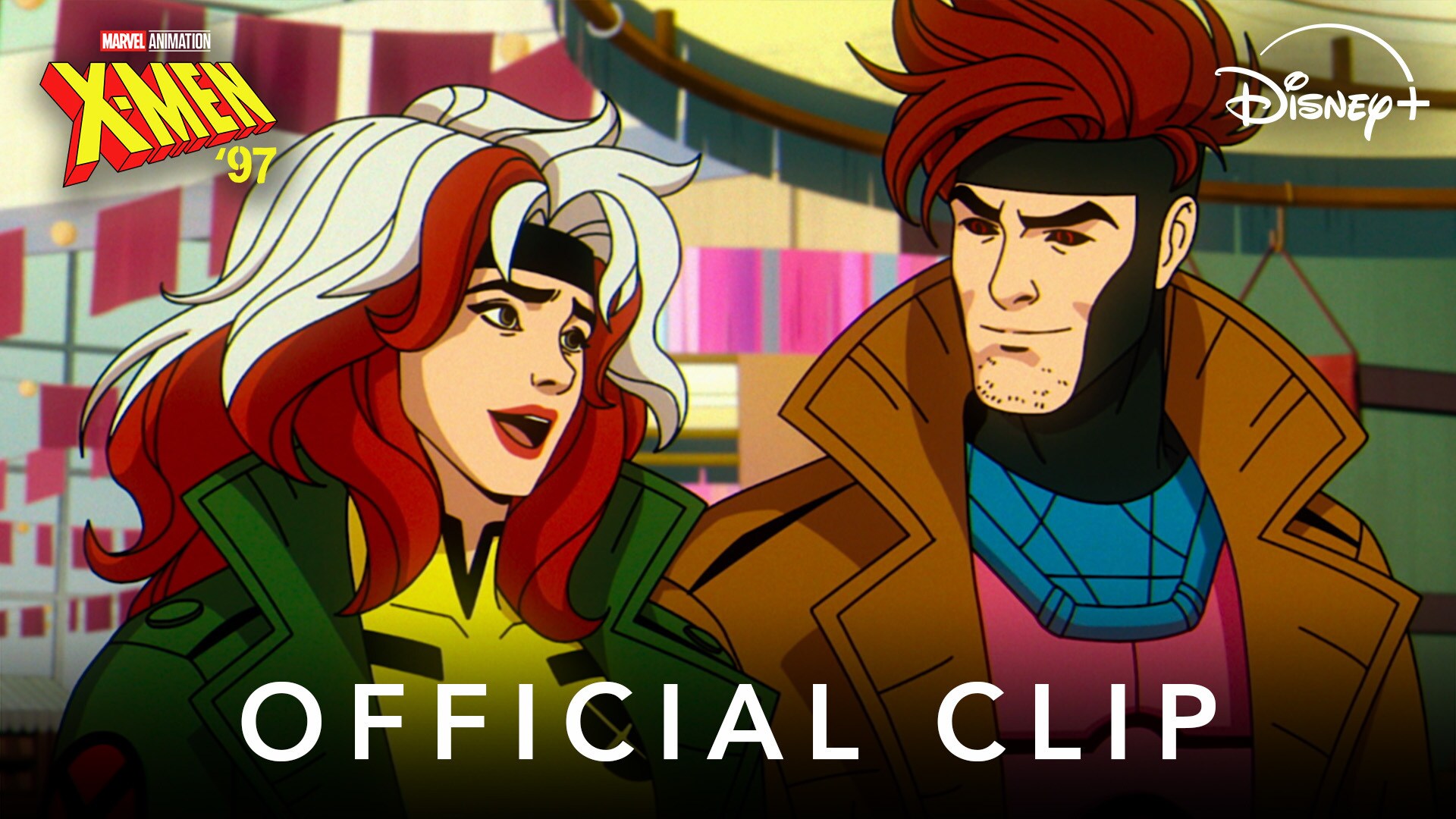
Marvel Animation's X-Men '97 | Official Clip 'A Place To Call Home' | Disney+

Teaching the Hero’s Journey

To introduce the Hero’s Journey, I first teach my students about the Hero’s Journey. Then, I show the Ted Ed video “What Makes a Hero?” by Matthew Winkler. This video is spectacular for a couple reasons. First, I love how it presents the Hero’s Journey in relation to a clock and a cycle. This visual sticks with the students. I also like how this video relates to the notion of the Hero’s Journey to students in their everyday lives.
Once we go over the video, we then read a short story and track the protagonist’s journey as a hero. Together, we identify each element of the Hero’s Journey cycle as outlined in the video and then discuss the qualities that make the character a hero. This helps me gauge whether or not my students are ready for the Hero’s Journey project. I have a graphic organizer in my Sticky Note Literary Analysis Unit.
The Hero’s Journey poster project is one of my favorite projects of the year. Students form groups of 2-3 and select a movie or book that they feel is a quintessential representation of the Hero’s Journey. Together, they discuss the movie and create a poster that represents all of the elements of the Hero’s Journey. I provide my students with a tabloid size piece of paper (affiliate link) for the project so they have more space to create.

To conclude the assignment, I have students present their findings to the class so that they can practice their presentation and public speaking skills.
I usually give my students 2-3 days of class time to work in their groups.
Teaching the Hero’s Journey: the 12 Stages
Joseph Campbell’s Hero’s Journey is a narrative structure that describes the typical stages that a hero undergoes in a story. Following along with the arch, these are the 12 stages of the hero’s journey.
- The Ordinary World: The hero begins in a normal, mundane world, often unaware of the adventure that awaits.
- The Call to Adventure: The hero receives a call to leave their ordinary world and embark on a journey.
- Refusal of the Call: The hero initially hesitates or refuses the call, often due to fear or a sense of inadequacy.
- Meeting the Mentor: The hero encounters a mentor or guide who provides guidance, advice, or tools for the journey.
- Crossing the First Threshold: The hero commits to the adventure and crosses into the unknown, leaving their ordinary world behind.
- Tests, Allies, and Enemies: The hero faces a series of challenges, makes new friends, and encounters adversaries on the journey.
- Approach to the Inmost Cave: The hero approaches a critical point in the journey, often facing their greatest fear or confronting a powerful enemy.
- Ordeal: The hero undergoes a significant trial or ordeal that tests their abilities and resolve.
- Reward (Seizing the Sword): After overcoming the ordeal, the hero earns a reward or gains a valuable insight that propels them forward.
- The Road Back: The hero begins the journey back to their ordinary world, often pursued by enemies or facing additional challenges.
- Resurrection: The hero faces a final, often life-threatening challenge that transforms them and solidifies their hero status.
- Return with the Elixir: The hero returns to their ordinary world with newfound knowledge, a treasure, or a boon that benefits themselves and others.
This is the first of two blog posts that outlines how I teach the Hero’s Journey. The next post will be about short stories and poems that you can use in your classroom when teaching the Hero’s Journey.

12 Comments
I love the idea of this project. Students are making connections between their favorite movies or tv shows and the concept they are learning. I want to revisit this blog post once I am a teacher and see if I can create something similar based on my curriculum.
Hi Angel, Thank you for reading.
Hi! This is great!
What were the texts (poems and short stories) that you would use to teach the hero's journey?
Hi Yinka, Thank you for reading. I will be publishing a blog post this weekend about the literature I use when teaching hero's journey.
I did a long unit with my high school students where we watched the cartoon mini Series Over the Garden Wall then plotted the moments of the Hero’s Journey together.
This comment has been removed by the author.
I love this project. I would like to try it with my grade 11 ESL students.
I forget to ask: Which short story do you use with your graphic organizer?
One of my favorite stories to use is Contents of a Dead Man's Pockets.
I so love this project. Will the project guidelines and rubric be available for purchase on your TPT store? Thanks so much for sharing this great idea!
I don't have a rubric for this assignment right now. It is one that I give mostly full credit on as long as students mostly get the concept.
I have been tinkering with adjusting my units for next year so that there is a cohesive, year-long focus. I never thought about teaching The Hero's Journey first thing, but I like the sound of this! Coincidentally, my first short story is "Thank You, M'am" which you mentioned in the second post. Thanks yet again for making me a better teacher!
Leave a Reply Cancel reply
Your email address will not be published. Required fields are marked *
Save my name, email, and website in this browser for the next time I comment.

LESSON PLAN FOR ENGLISH TEACHERS
The hero’s journey.

Level: Intermediate (B1-B2)
Type of English: General English
Tags: literature and books describing people storytelling prefixes and suffixes 13-15 years old 16-18 years old Video talk Vocabulary and grammar
Publication date: 11/30/2023
In this lesson, students will watch a video showing how many famous stories follow the same pattern: the Hero’s Journey. They will first discuss some beloved book and film heroes, then watch the video and do some comprehension tasks on it. They will also study different types of prefixes, discuss their impressions of the video, and apply the theory to other stories, as well as to their own lives.
by Edward Alden
Linguahouse.com is in no way affiliated with, authorized, maintained, sponsored or endorsed by TED Conferences LLC.
Love this lesson material!
Leave a Comment
Student worksheet
Teacher lesson plan
Save lesson to
In this lesson, students will watch a video showing how many famous stories follow the same pattern: the Hero’s Journey. They will first discuss some beloved book and movie heroes, then watch the video and do some comprehension tasks on it. They will also study different types of prefixes, discuss their impressions of the video, and apply the theory to other stories, as well as to their own lives.
Make your lessons unforgettable
Did you know that your students can review the target language from our worksheets with our Expemo flashcard app? To let your student know, just enter their email address below (multiple emails can be separated with a comma).

- Kindle Store
- Kindle eBooks
Promotions apply when you purchase
These promotions will be applied to this item:
Some promotions may be combined; others are not eligible to be combined with other offers. For details, please see the Terms & Conditions associated with these promotions.
Buy for others
Buying and sending ebooks to others.
- Select quantity
- Buy and send eBooks
- Recipients can read on any device
These ebooks can only be redeemed by recipients in the US. Redemption links and eBooks cannot be resold.

Download the free Kindle app and start reading Kindle books instantly on your smartphone, tablet, or computer - no Kindle device required .
Read instantly on your browser with Kindle for Web.
Using your mobile phone camera - scan the code below and download the Kindle app.

Follow the author

Image Unavailable

- To view this video download Flash Player
How to Become the Hero of Your Own Spiritual Journey in 3 Steps: A Light Guide to Spiritual, Physical and Emotional Freedom Kindle Edition
Have you ever stopped to reflect on why we were born into such toxic families? Why are there so many ups and downs (often more downs than ups) in our journey? Do you wonder about difficult love relationships, the outcome of which is always pain and suffering? And how does all this connect with our spiritual growth? In 'How to Become the Hero of Your Own Spiritual Journey in 3 Steps ', you will have three transformative steps at your disposal. The first is to recognize the mess of past and present that surrounds you, understanding how this context shapes your thoughts and feelings. In the second step, we will begin changes to break these mental and spiritual patterns that cause so much suffering. Finally, in the third step, we will expand your ability to transform the environment around you, attracting and seeking significant changes. Ready to embark on this journey of self-transformation?
A Little More on Step 1: Recognizing Your Personal Spiritual Inner Journey - Discover Your Path to Self-Help and Spirituality
In this engaging book, we begin by acknowledging the complex landscape of the spiritual journey. Intriguing questions will guide you into the depths of your soul, challenging you to explore your emotional and spiritual experiences. Together, we will dive into the waters of self-awareness, revealing hidden truths and recognizing the hero in each of us.
Step 2: Discovering Your Deepest Spiritual Desires - Motivation for Change Personal Transformation
After recognition, the essential question arises: what do you really want for your spiritual journey? This second step explores the deepest longings of your soul. Do you aspire to inner peace, more meaningful connections, or a deeper understanding of yourself? The answers to these questions will trigger a powerful inner transformation, pointing the way to spiritual fulfillment.
Step 3: Leveraging Practices for Spiritual Prosperity Lasting Daily Practices for Self-Development and Emotional Wholeness
In the third and final step, we delve into the art of enhancing practices that strengthen and maintain emotional and spiritual prosperity. We cover everyday practices that support the inner hero's journey, from enriching meditations to creating personal rituals that feed the soul. This is the definitive guide to creating and maintaining a fulfilling spiritual journey, empowering you to be the authentic hero of your own spiritual narrative.
Get ready for a unique adventure as this book not only offers in-depth knowledge but also serves as a practical companion on your spiritual journey. Discover the hero within you and pioneer the path to a life of emotional and spiritual fulfillment.
- Print length 255 pages
- Language English
- Sticky notes On Kindle Scribe
- Publication date April 29, 2024
- File size 3655 KB
- Page Flip Enabled
- Word Wise Enabled
- Enhanced typesetting Enabled
- See all details
Customers who viewed this item also viewed

Product details
- ASIN : B0D328P9LV
- Publication date : April 29, 2024
- Language : English
- File size : 3655 KB
- Text-to-Speech : Enabled
- Screen Reader : Supported
- Enhanced typesetting : Enabled
- X-Ray : Not Enabled
- Word Wise : Enabled
- Sticky notes : On Kindle Scribe
- Print length : 255 pages
About the author
Juggler of Reality and Its Spiritual Saga
Discover the mind behind the curtains of reality: a master in the art of organized madness, a student of marketing who transforms words into magical potions, and an animal enthusiast who believes that spirituality is the glue that binds all forms of life.
Imagine a unique blend of technology and soul mysteries, where the impossible is not only considered but embraced as the backdrop for a fun and intriguing journey. That's me: a survivor of myself, navigating through the enigmas of existence with a smile and a pinch of insatiable curiosity.
Life has presented me with its challenges, and I've faced them as steps toward evolution. I collect scars as trophies, each telling the story of a battle won. After all, being a constantly evolving human is an adventure in itself.
In addition to creating marketing strategies that defy conventions, you'll find me in the most mysterious corners of spirituality, exploring what the soul hides in the recesses of the universe. My love for animals is both a passion and a philosophy of life, and technology is my companion on this journey to unveil the secrets of the cosmos.
Get ready to embark on a unique odyssey, where laughter and reflections walk hand in hand. Here, the impossible is only an invitation to explore the unknown. Welcome to my peculiar circus of existence, where normality is just a palette to paint the nuances of extraordinary life.
Customer reviews
Customer Reviews, including Product Star Ratings help customers to learn more about the product and decide whether it is the right product for them.
To calculate the overall star rating and percentage breakdown by star, we don’t use a simple average. Instead, our system considers things like how recent a review is and if the reviewer bought the item on Amazon. It also analyzed reviews to verify trustworthiness.
No customer reviews
- Amazon Newsletter
- About Amazon
- Accessibility
- Sustainability
- Press Center
- Investor Relations
- Amazon Devices
- Amazon Science
- Sell on Amazon
- Sell apps on Amazon
- Supply to Amazon
- Protect & Build Your Brand
- Become an Affiliate
- Become a Delivery Driver
- Start a Package Delivery Business
- Advertise Your Products
- Self-Publish with Us
- Become an Amazon Hub Partner
- › See More Ways to Make Money
- Amazon Visa
- Amazon Store Card
- Amazon Secured Card
- Amazon Business Card
- Shop with Points
- Credit Card Marketplace
- Reload Your Balance
- Amazon Currency Converter
- Your Account
- Your Orders
- Shipping Rates & Policies
- Amazon Prime
- Returns & Replacements
- Manage Your Content and Devices
- Recalls and Product Safety Alerts
- Conditions of Use
- Privacy Notice
- Consumer Health Data Privacy Disclosure
- Your Ads Privacy Choices
- Latest News
- Investigative
- Entertainment
- Human Interest
- Inspirational
- Local Listings
- Meet the Team
- Today on Inside Edition
- Inside Health
- Inside Edition InDepth
- Facebook Inside Edition
- Twitter Inside Edition
- Instagram Inside Edition
- YouTube Inside Edition
A Man’s Risky Journey to Explore Soviet-Era Space Shuttle Site
An abandoned space shuttle site from the Soviet-era draws many urban explorers, even though it’s off limits to the public. Chris Luckhardt of Toronto is one person who risked getting caught by the Russian military to explore the decaying buildings and spacecraft that were left behind. He photographed his experience in detail and says he can only hope something will be done to preserve the site for space enthusiasts such as himself.
Live on Inside Edition

Horses Trapped in Mud Saved by 40 Rescuers

9-Year-Old Takes Cover Inside Home During Drive-By Shoo...

Michael Cohen Testifies in Donald Trump's Hush Money Tr...

Woman Claims Cops Handcuffed Her on Pile of Fire Ants

Mountain Lion Gets Root Canal and Is Released Into the ...

‘Boardwalk Empire’ Star Steve Buscemi Sucker Punched in...

Duke Students Walk Out as Jerry Seinfeld Delivers Speec...

Brown Giant Pandas Seen for 1st Time in 6 Years

Driver of Reportedly Stolen Lamborghini Crashes and Die...

California Town Sets Up Canvas Tents for Homeless

Weird Stories About Sneezing

A Man’s Risky Journey to Explore Soviet-Era Space Shutt...

Arizona Bridesmaid Removes Unwanted Snake From Her Sist...

Man Mows Lawn During Tornado and Other People Who Survi...

Man Survives 10,000-Pound Slab of Granite Crushing His ...

Inside Deals on Cordless Vacuum, Wireless BBQ Thermomet...

Tips for Finding Last-Minute Gifts for Mother's Day

Woman Shows Off Bikini Body After Getting 'Mommy Makeov...

Oprah Winfrey Apologizes for Her Role in Diet Culture

Israeli Singer Eden Golan Advances to Eurovision Final ...
Investigations.
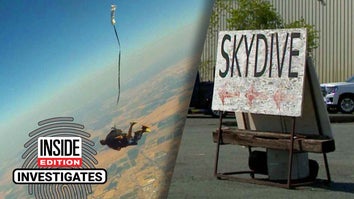
Is This Skydiving Center the Deadliest in the US?
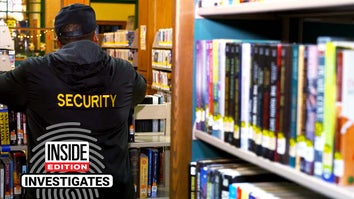
Are Libraries Becoming More Dangerous?

Are Some Airport Bars Over-Serving Plane Passengers?

How Safe Are Kids on Seat Belt-Less School Buses?

Could Your Solar Eclipse Glasses Be Counterfeit?

Experts Warn of 'Gas Station Heroin' Ingredient Tianept...

Could Your Dirty Humidifier Be Making You Sick?

How Some Megachurch Pastors Are Legally Avoiding Paying...

Would You Take Your Pet to a Chiropractor?

Could an Overcharged Massage Gun Go Up in Flames?

How Often Should You Wash Your Bed Sheets?

Are You Cleaning Your Insulated Cups Properly?
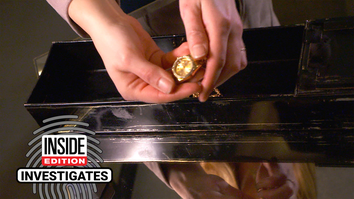
Woman Sees Lost $10K Necklace From Safe Deposit Box on ...
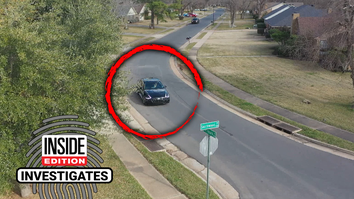
Stalkers Have Sometimes Used Car Tracking Apps to Haras...
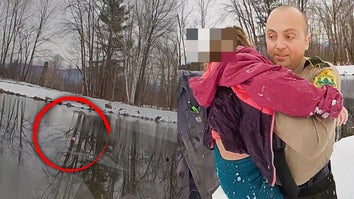
8-Year-Old Girl Pulled From Near-Frozen Lake

Good Samaritan Rescues Puppy Abandoned in Parking Lot
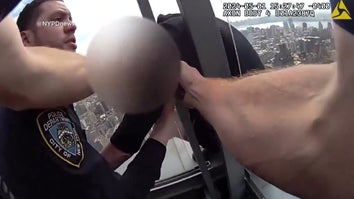
Police Use Rope to Rescue Woman From 54th Story Ledge
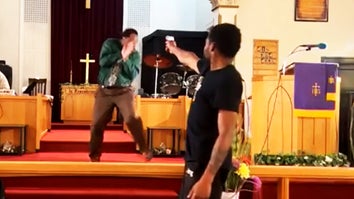
Man Points Gun at Pastor During Church Service
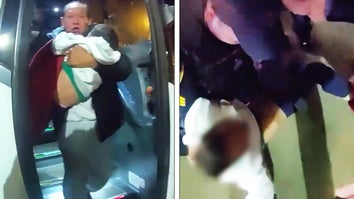
Police Save 3-Year-Old Choking on Bus
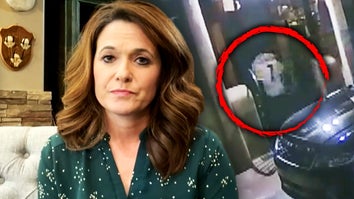
Woman Shoots Home Intruder Who Interrupted Taylor Swift...
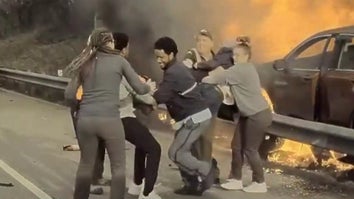
Drivers Stop to Save Victim Trapped in Burning Car

Heartbreaking Video Shows Driver Abandoning Cute Dog on...
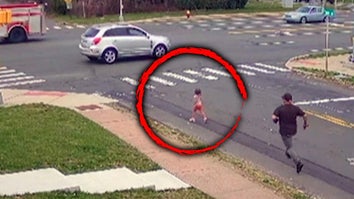
Hero Barbers Rescue Toddler Who Ran Into Traffic
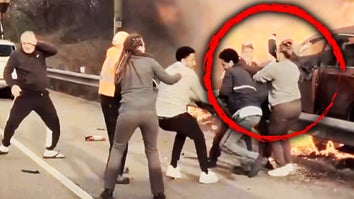
‘Highway Heroes’ Rescue Driver Trapped Inside Fiery Car

Family Wants to Find Hero Who Pulled Teenager From Horr...
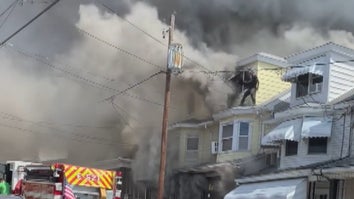
Hero Rescues Neighbors From Burning House

16-Year-Old Risks Life to Save Dogs Trapped in Florida ...

Stormy Daniels Celebrates After Hush Money Testimony

Woman Calls 911 After Pulling Down Teen's Mini Skirt

Florida Mom Arrested for Leaving Kids With Bi-Polar Dad...

Do Some States Need Stricter Driving While High Laws?
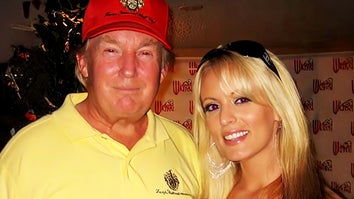
Stormy Daniels' Friend Speaks Out About Lake Tahoe Inci...
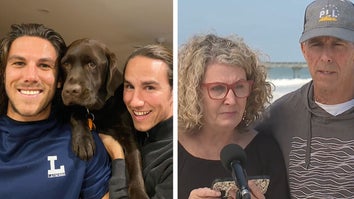
Parents of Australian Surfers Killed in Mexico Mourn Th...

3 Men Shot to Death While on Surfing Trip to Mexico: Re...
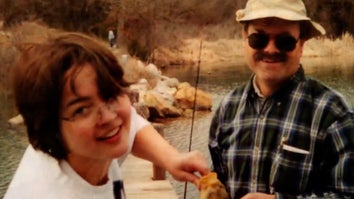
Loved Ones of Jeffrey Dahmer, Zodiac and Other Serial K...
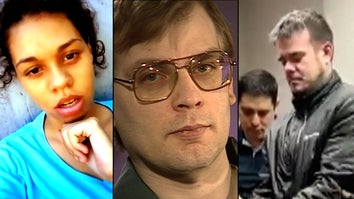
Murders, Robbing Banks and Other Crimes People Confesse...

Mom Loses Daughter to Domestic Violence: ‘It Broke Me’

Dad Forced 6-Year-Old to Run on Treadmill Days Before D...
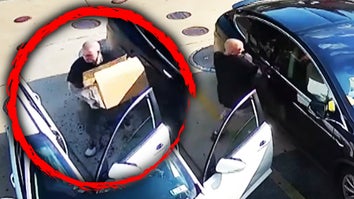
Man Caught Stealing $190,000 From Tesla Backseat: Cops
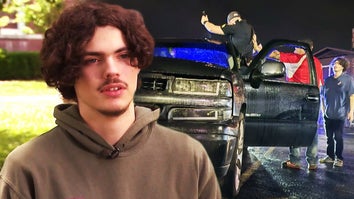
18-Year-Old Delivery Driver Shot at for Parking in Wron...
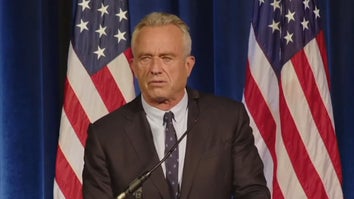
Robert F. Kennedy Jr. Says Tapeworm Ate Part of His Bra...
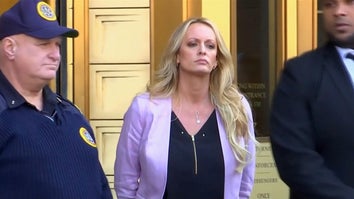
Stormy Daniels Faces Backlash for Hush Money Testimony
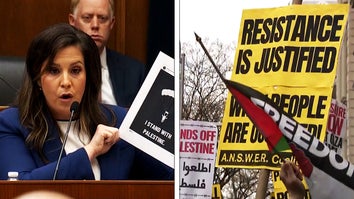
Congress Investigates Antisemitism in Schools Amid Prot...
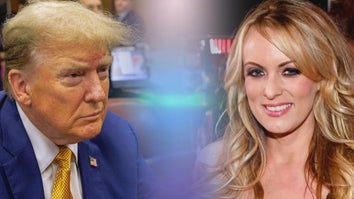
Stormy Daniels Testifies in Donald Trump’s Hush Money T...
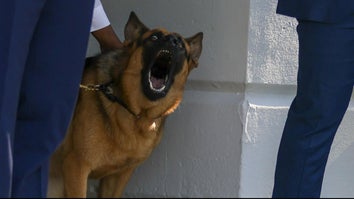
Kristi Noem Suggests President Biden’s Dog Should Have ...
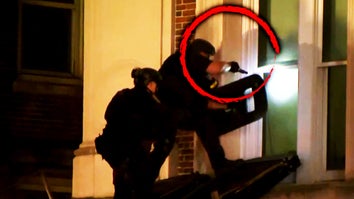
Cop's Gun Fired During Columbia University Raid
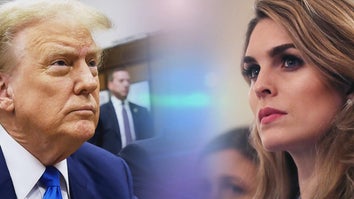
Ex-Press Secretary Hope Hicks Testifies in Trump Case
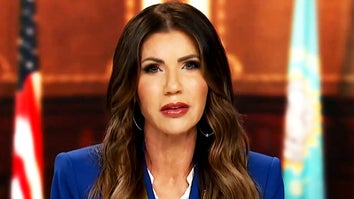
Kristi Noem Defends Her Killing of Dog
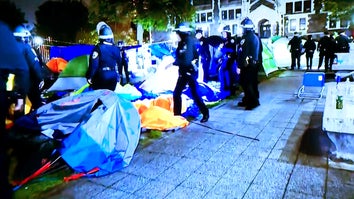
NYPD Clears Protesters From Columbia University

Pro-Palestinian Protesters and Israel Supporters Clash ...
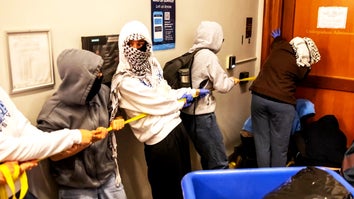
Protesters Barricade Themselves in Columbia University'...

Kristi Noem Recounts Killing Goat in Upcoming Book
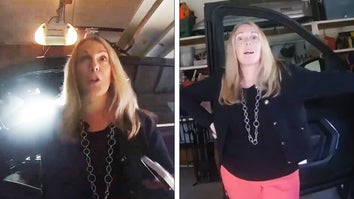
NY DA Sandra Doorley Curses Out Cop Over Traffic Stop

IMAGES
VIDEO
COMMENTS
View the full video and lesson at: http://ed.ted.com/lessons/what-makes-a-hero-matthew-winklerTo learn about how to leverage myth-making in marketing head ov...
This is a quick summary of The Hero's Journey stages by Joseph Campbell.Subscribe: https://www.youtube.com/channel/UCDlC2yGOv2RfN5W9moPZN1Q?ab_channel=RAWSpi...
Learn each step of The Hero's Journey, or monomyth, created by Joseph Campbell through the Disney movie, MOANA.Understanding Joseph Campbell's The Hero's Jou...
The hero's journey is a simple yet powerfully creative concept, found not just in myths and fairy tales but also novels, films, interactive video games, or anywhere stories are told. The influence of the hero's journey in popular culture is especially apparent in film, as in George Lucas' acknowledgment that Star Wars might never have ...
The hero's journey ends where it begins, back at the beginning after a quest of epic proportions. The 12 steps are separated into three acts: departure (1-5) initiation (5-10) return (10-1) The hero journeys through the 12 steps in a clockwise fashion. As Campbell explains:
The very first hero's journey arc was created by Joseph Campbell in 1949. It contained the following 17 steps: The Call to Adventure: The hero receives a call or a reason to go on a journey. Refusal of the Call: The hero does not accept the quest. They worry about their own abilities or fear the journey itself.
The Hero's Journey was first described by Joseph Campbell. Campbell was an American professor of literature at Sarah Lawrence College. He wrote about the Hero's Journey in his book The Hero with a Thousand Faces. More than a guide, this book was a study on the fundamental structure of myths throughout history. ...
This film is an exploration of famed Mythologist Joseph Campbell's studies and their continuing impact on our culture.Through interviews with visionaries from a variety of fields interwoven with enactments of classic tales by a sweet and motley group of kids, the film navigates the stages of what Campbell dubbed The Hero's Journey: the challenges, the fears, the dragons, the battles, and the ...
Stage 1: Separation. In the first stage of the hero's journey, we find our protangonist living life in a typically mundane situation.The Star Wars, Luke Skywalker lives as a talented yet lowly and pretty damn whiny moisture farmer on Tatooine. Until… 1. Call to Adventure - By some chance the hero will become aware of information or actions that call for them to go on a quest.
The Hero's Journey was invented by Campbell in his seminal 1949 work, The Hero with a Thousand Faces, where he introduces the concept of the "monomyth." A comparative mythologist by trade, Campbell studied myths from cultures around the world and identified a common pattern in their narratives.
Illustration of the hero's journey. In narratology and comparative mythology, the hero's journey, also known as the monomyth, is the common template of stories that involve a hero who goes on an adventure, is victorious in a decisive crisis, and comes home changed or transformed.. Earlier figures had proposed similar concepts, including psychoanalyst Otto Rank and amateur anthropologist Lord ...
View full lesson: http://ed.ted.com/lessons/what-makes-a-hero-matthew-winklerWhat trials unite not only Harry Potter or Frodo Baggins but many of literature'...
This ultimate Hero's Journey writing guide will define and explore all quintessential elements of the Hero's Journey—character archetypes, themes, symbolism, the three act structure, as well as 12 stages of the Hero's Journey. We'll even provide a downloadable plot template, tips for writing the Hero's Journey, and writing prompts ...
Warner Bros.' Magical Journey Through Hogwarts. Image via Warner Bros. The Harry Potter series features not just one, but eight of the movies that best follow the Hero's Journey. From Chris ...
Campbell described more than a dozen key elements of a Hero's Journey, seven of which Rogers explored in his research: protagonist, shift, quest, allies, challenge, transformation, and legacy ...
Producer Gerta Xhelo. Director Kirill Yeretsky. Educator Matthew Winkler. Sound Designer Michael Feuser. Composer Stephen LaRosa. Artist Wing Luo. Motion Graphics Animator Robertino Zambrano. Narrator Matthew Winkler. See more creators.
What trials unite not only Harry Potter or Frodo Baggins but many of literature's most interesting heroes? And what do ordinary people have in common with these literary heroes? Matthew Winkler takes us step-by-step through the crucial events that make or break a hero. [Directed by Kirill Yeretsky, narrated by Matthew Winkler, music by Stephen LaRosa].
Let's get Heroic with Mike Rugnetta. This week on Crash Course World Mythology, we're talking about the Hero's Journey and the Monomyth, as described by Jose...
Percy Jackson and the Olympians tells the fantastical story of a 12-year-old modern demigod, Percy Jackson, who's just coming to terms with his newfound supernatural powers when the sky god Zeus accuses him of stealing his master lightning bolt. Now Percy must trek across America to find it and restore order to Olympus.
Joseph Campbell's Hero's Journey is a narrative structure that describes the typical stages that a hero undergoes in a story. Following along with the arch, these are the 12 stages of the hero's journey. The Ordinary World: The hero begins in a normal, mundane world, often unaware of the adventure that awaits.
The hero's journey. In this lesson, students will watch a video showing how many famous stories follow the same pattern: the Hero's Journey. They will first discuss some beloved book and film heroes, then watch the video and do some comprehension tasks on it. They will also study different types of prefixes, discuss their impressions of the ...
We cover everyday practices that support the inner hero's journey, from enriching meditations to creating personal rituals that feed the soul. This is the definitive guide to creating and maintaining a fulfilling spiritual journey, empowering you to be the authentic hero of your own spiritual narrative.
Percy Jackson and the Olympians tells the fantastical story of a 12-year-old modern demigod, Percy Jackson, who's just coming to terms with his newfound supe...
Offbeat. May 12, 2024. An abandoned space shuttle site from the Soviet-era draws many urban explorers, even though it's off limits to the public. Chris Luckhardt of Toronto is one person who ...